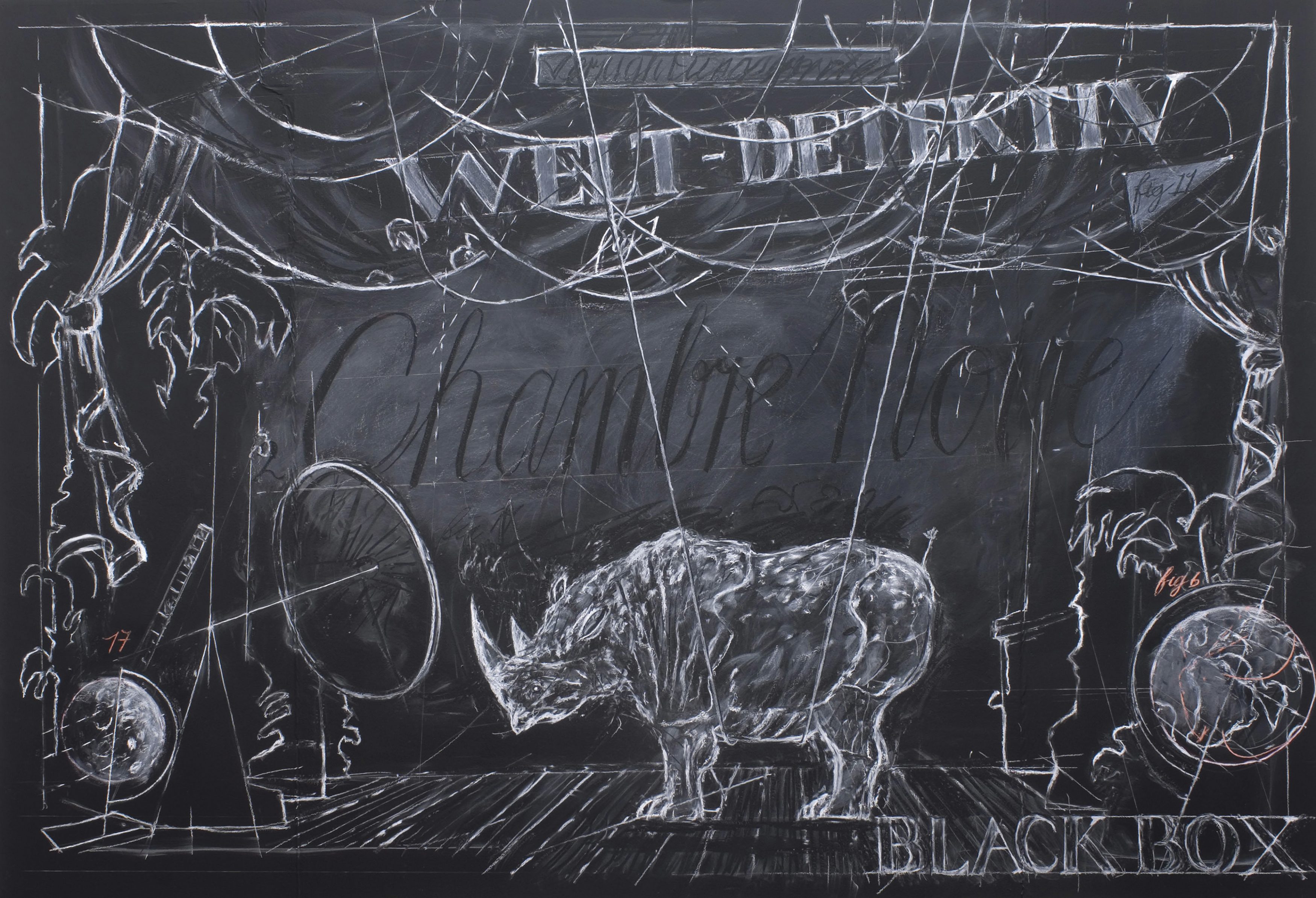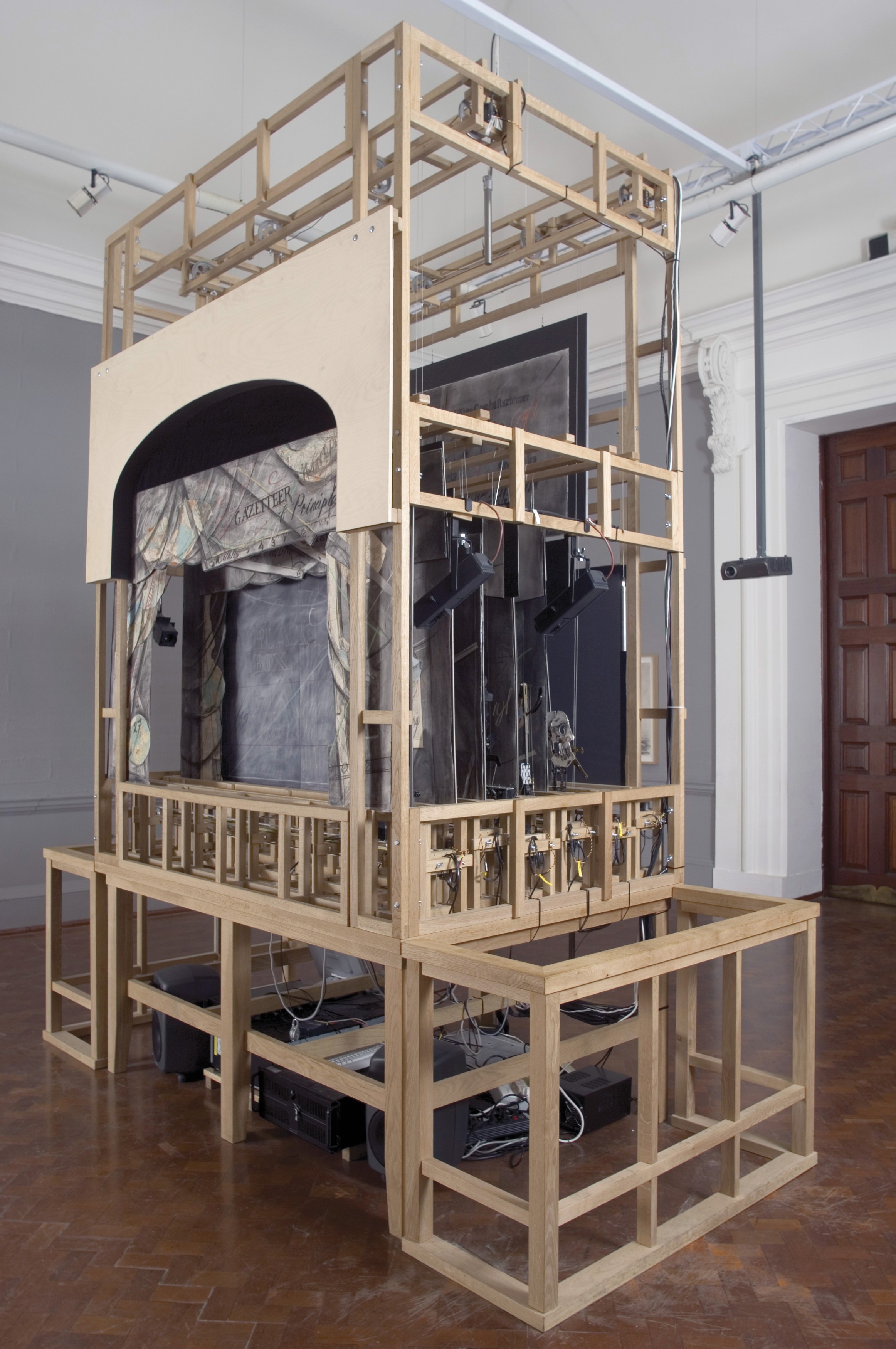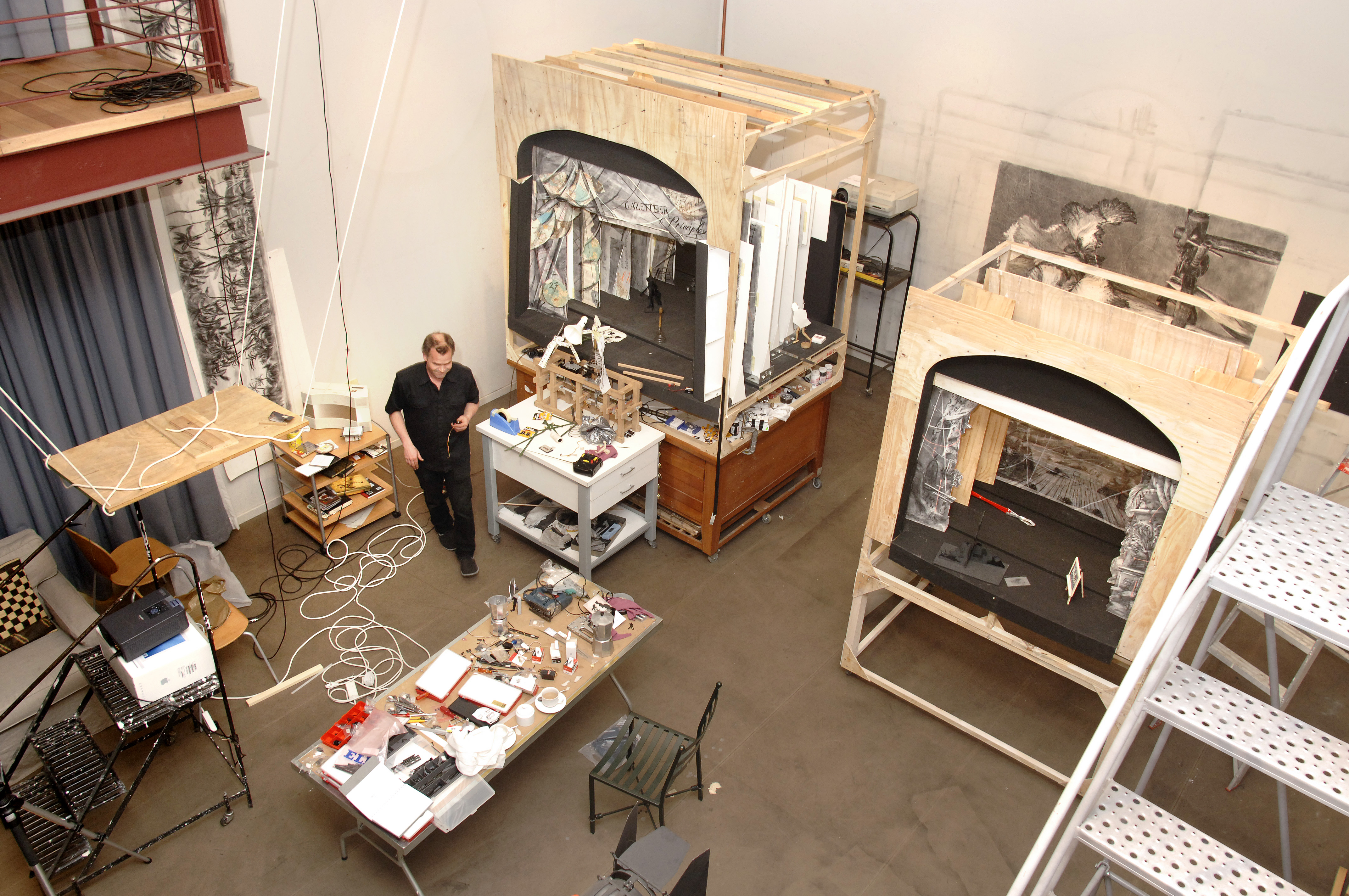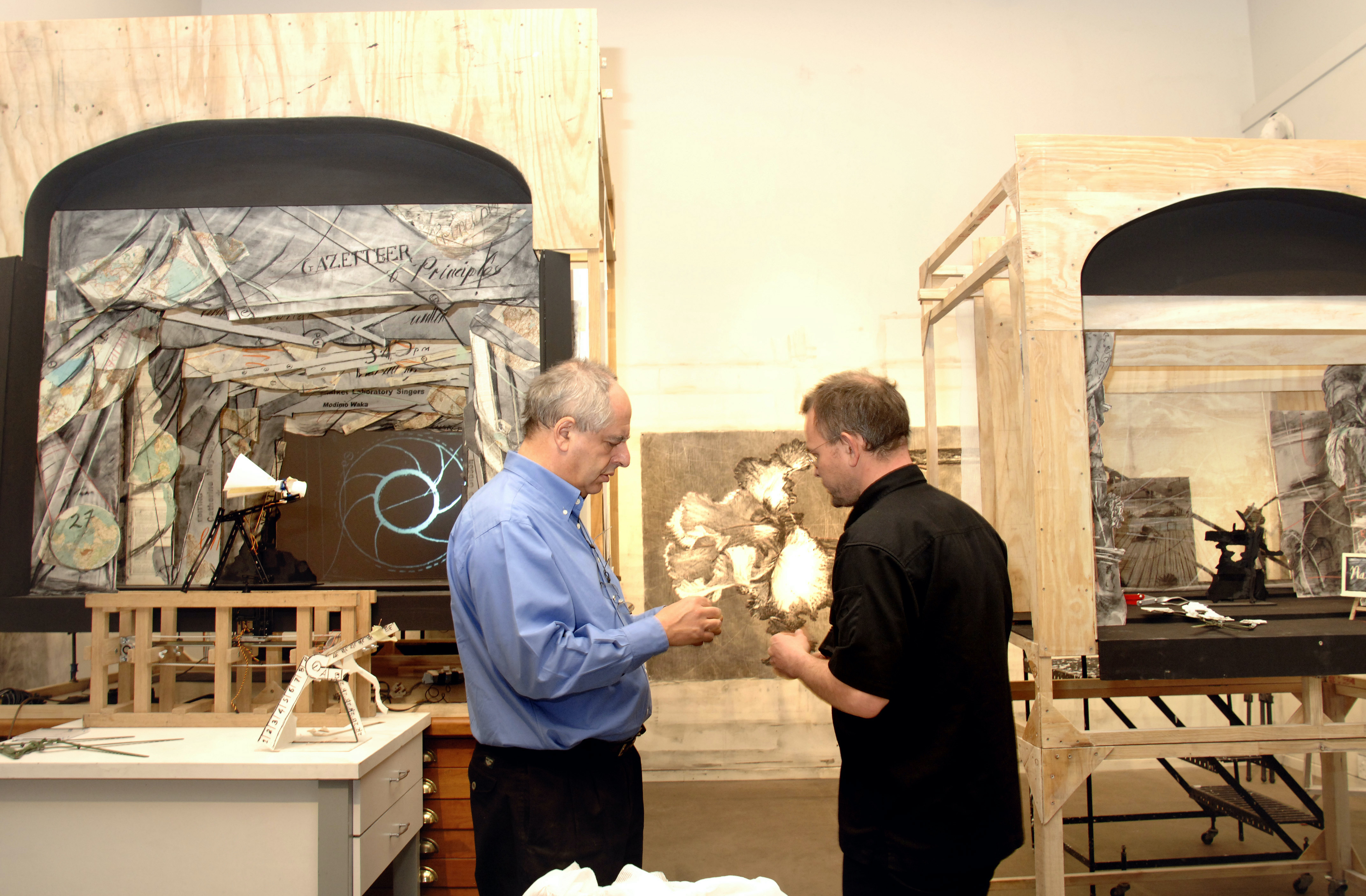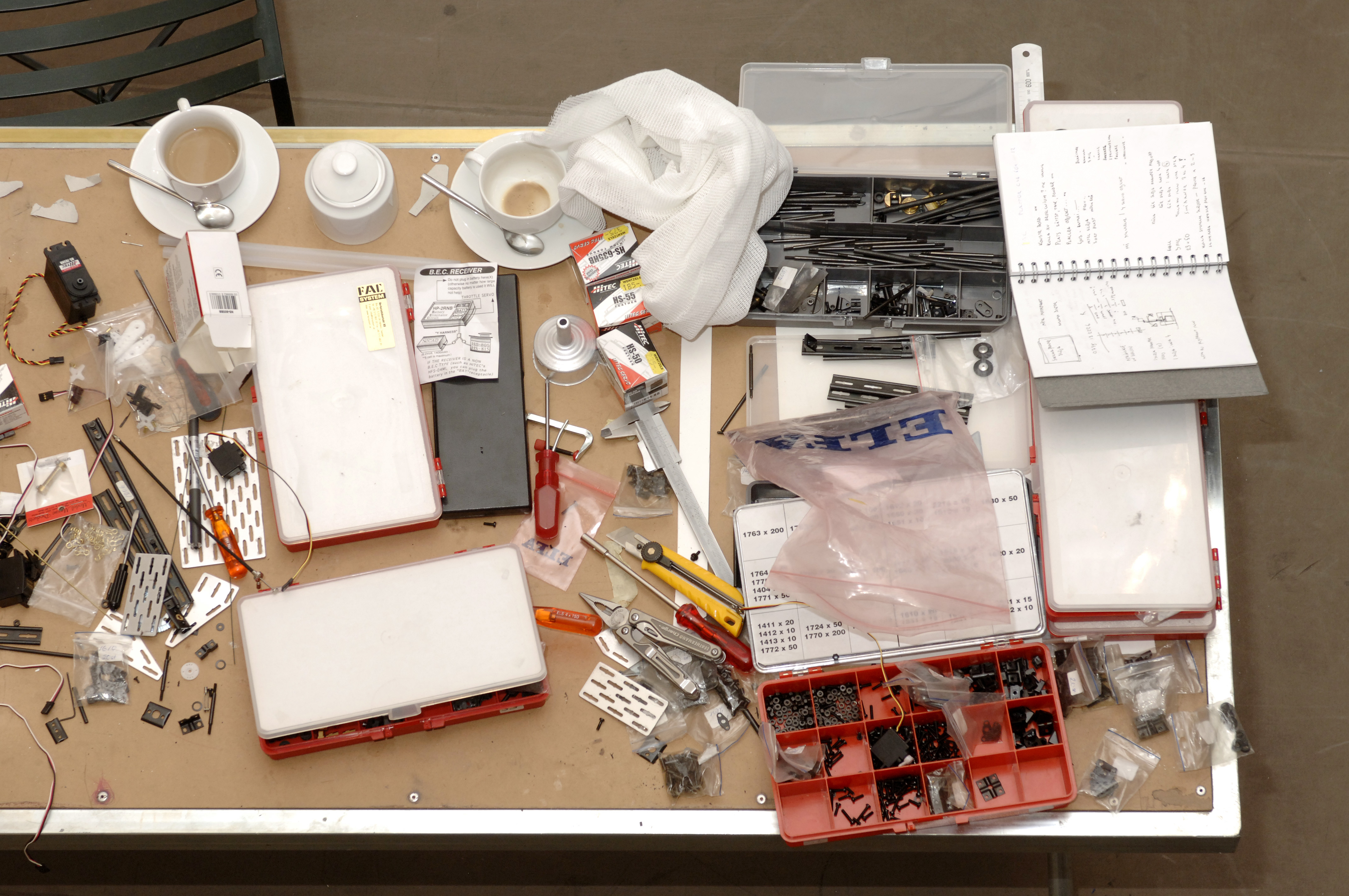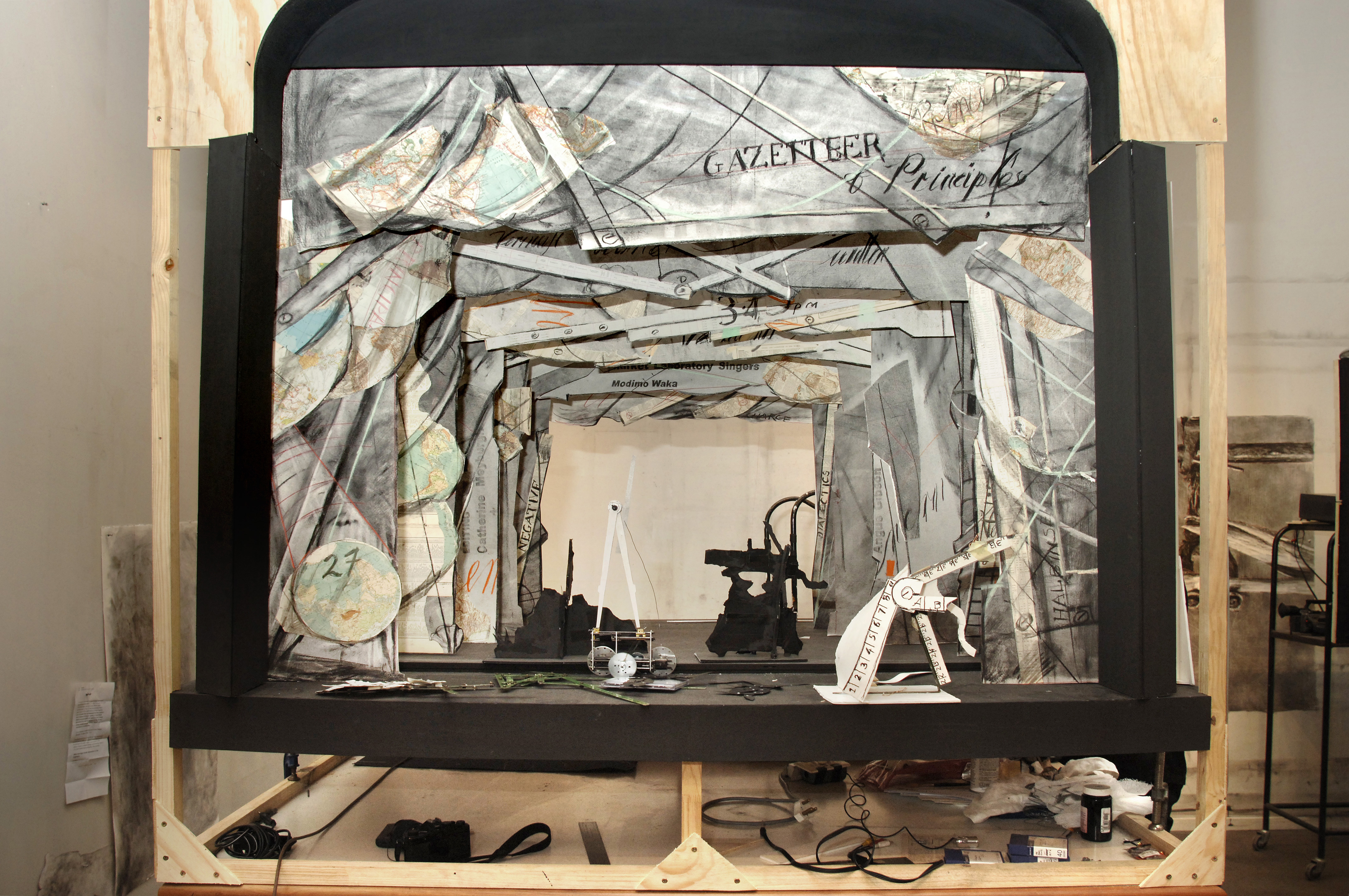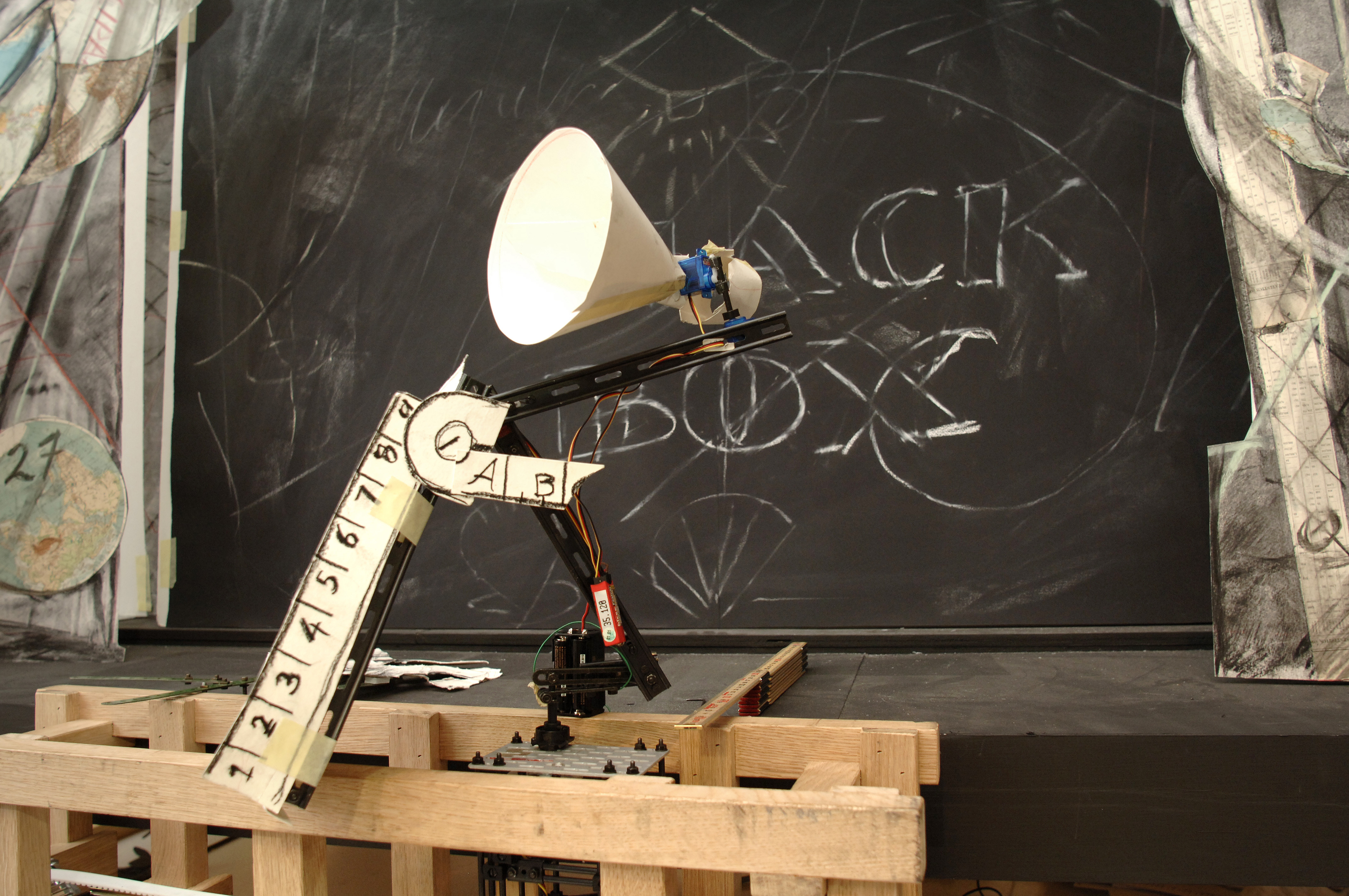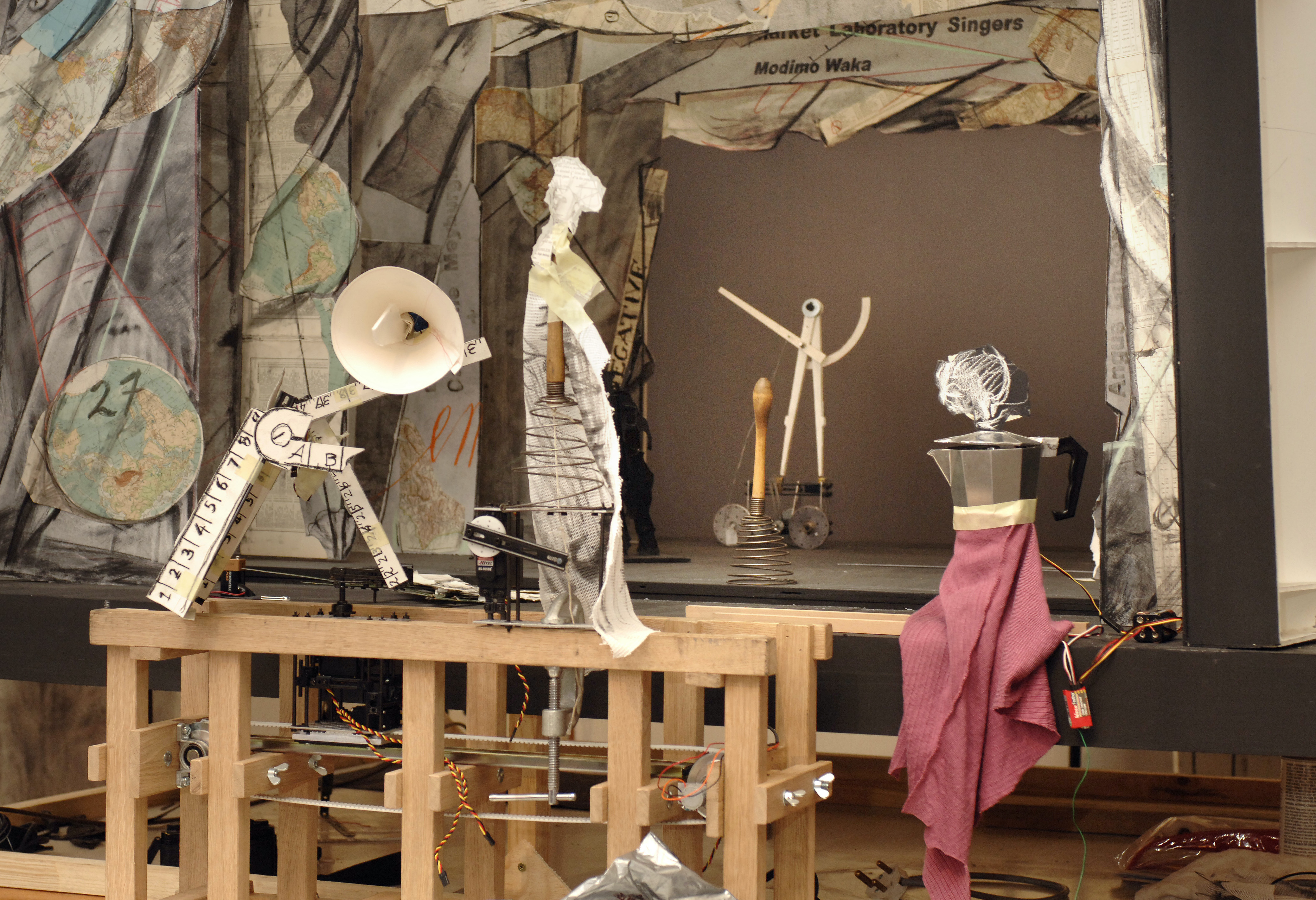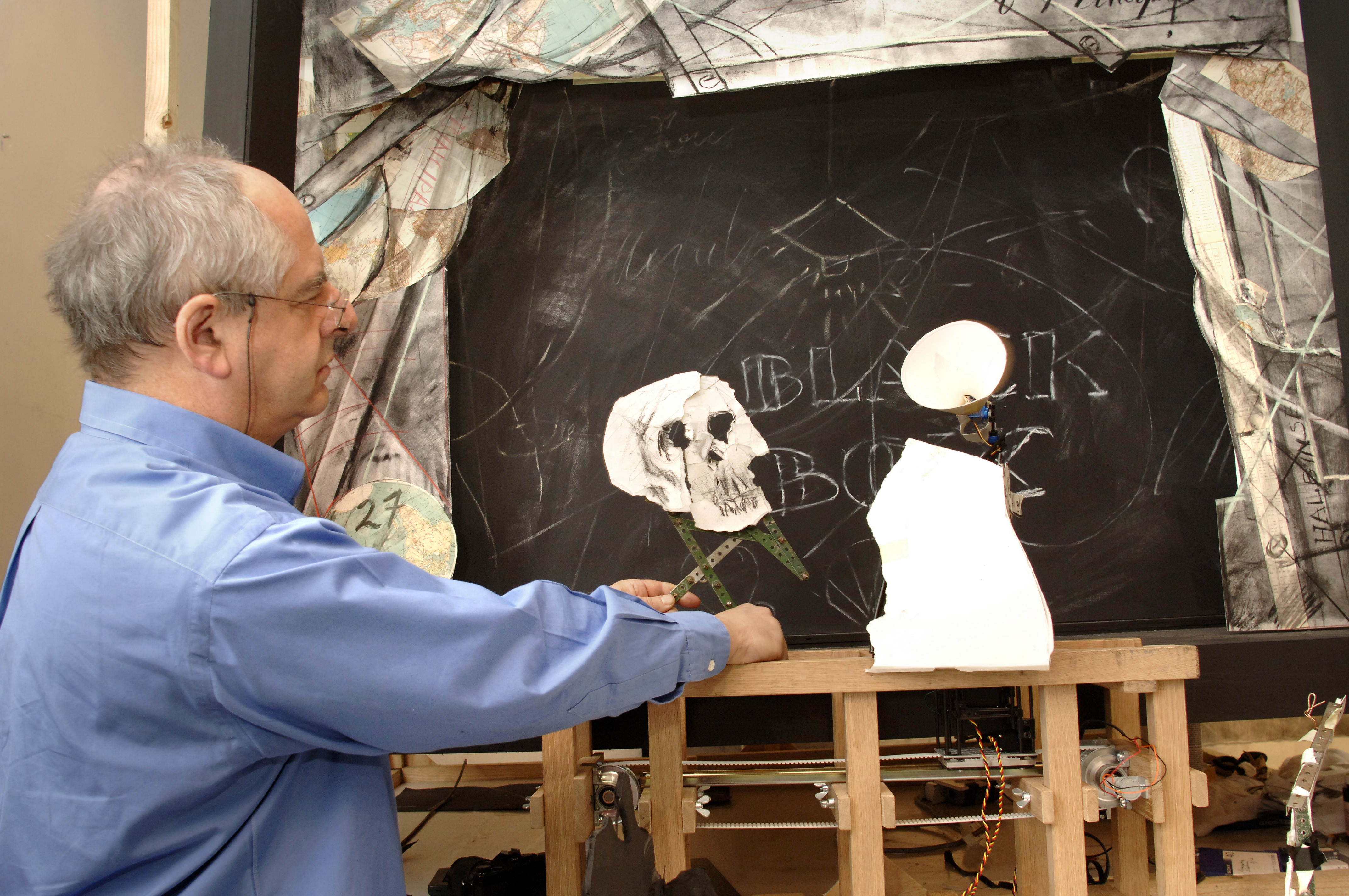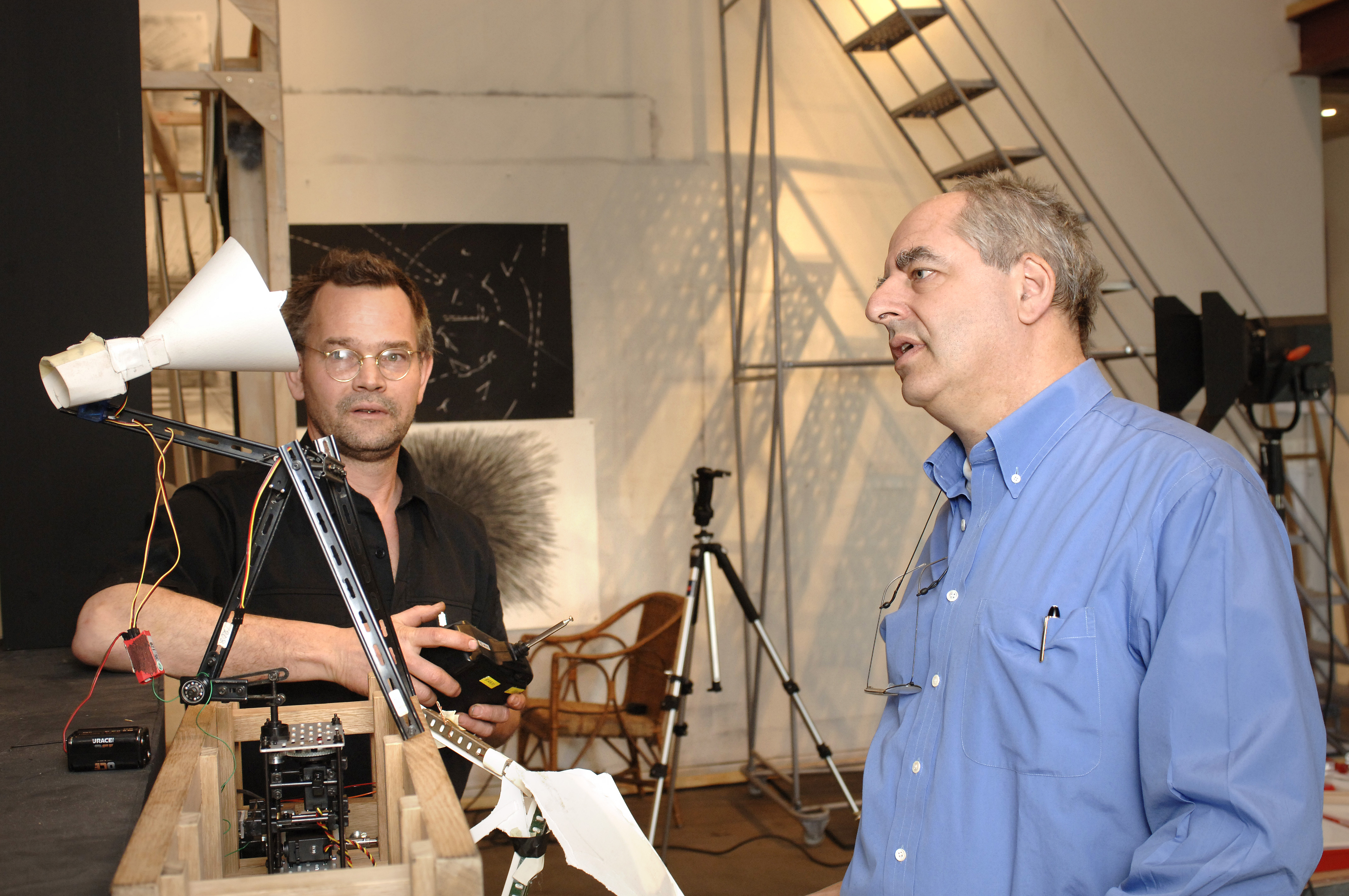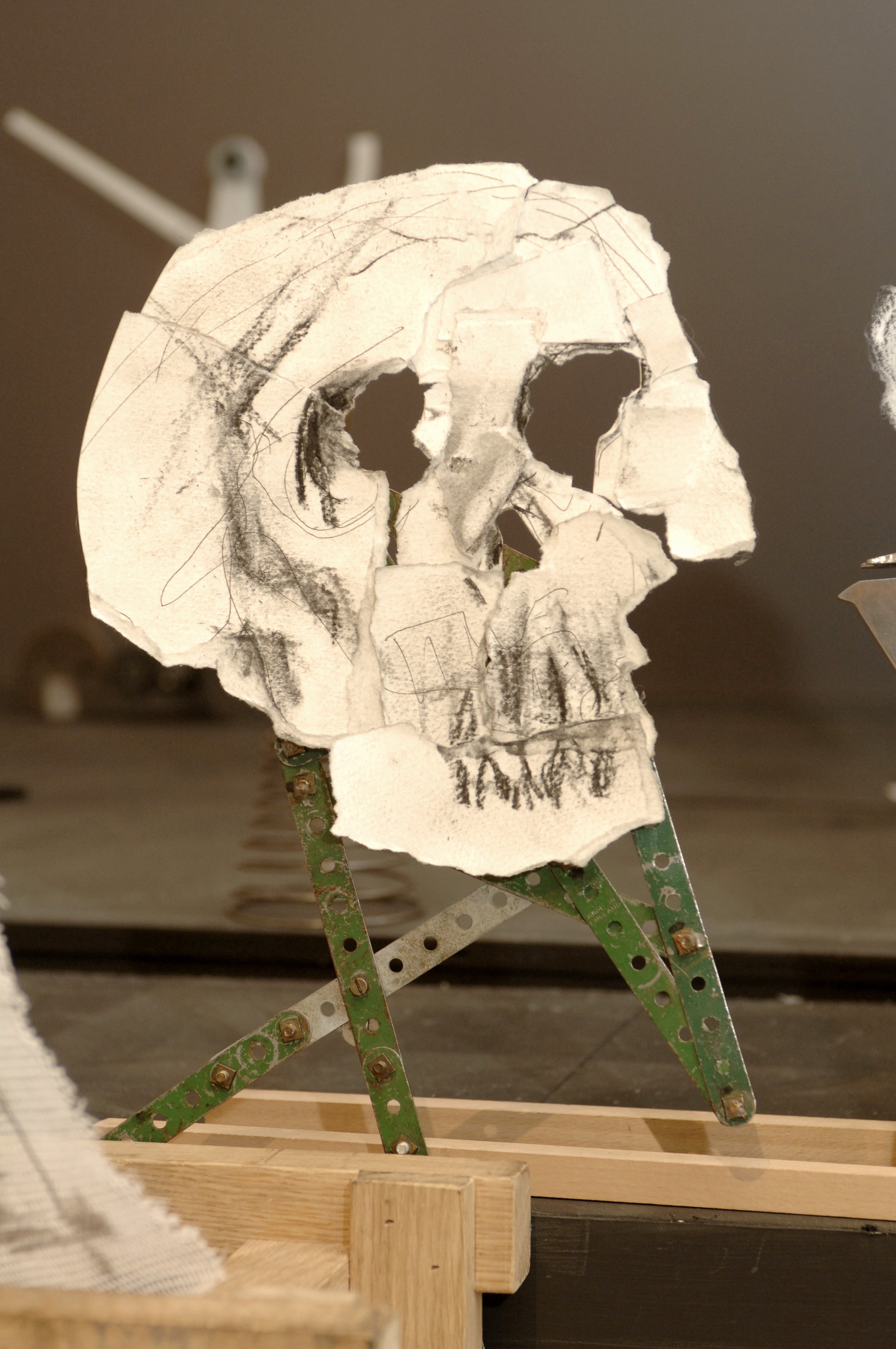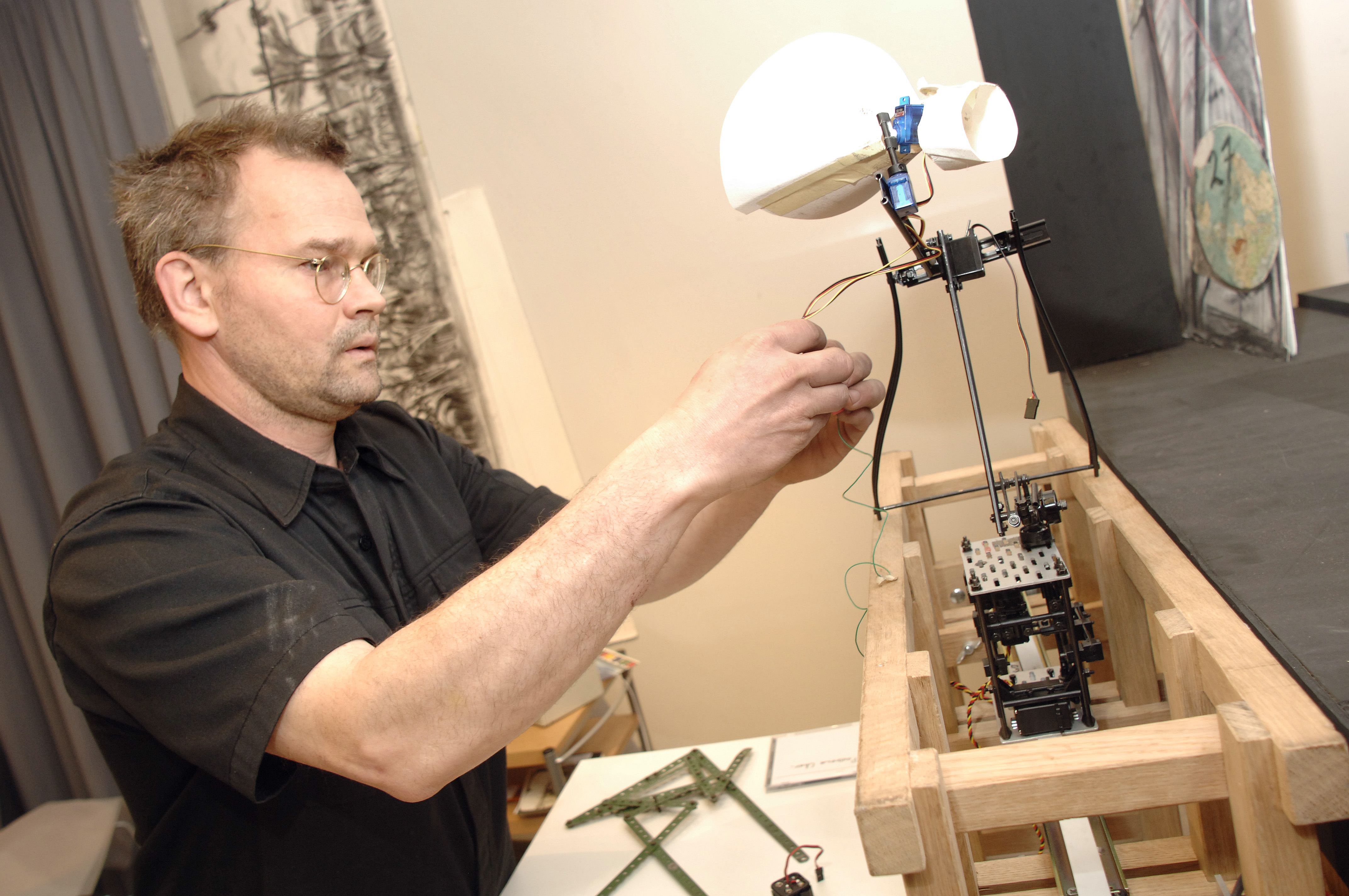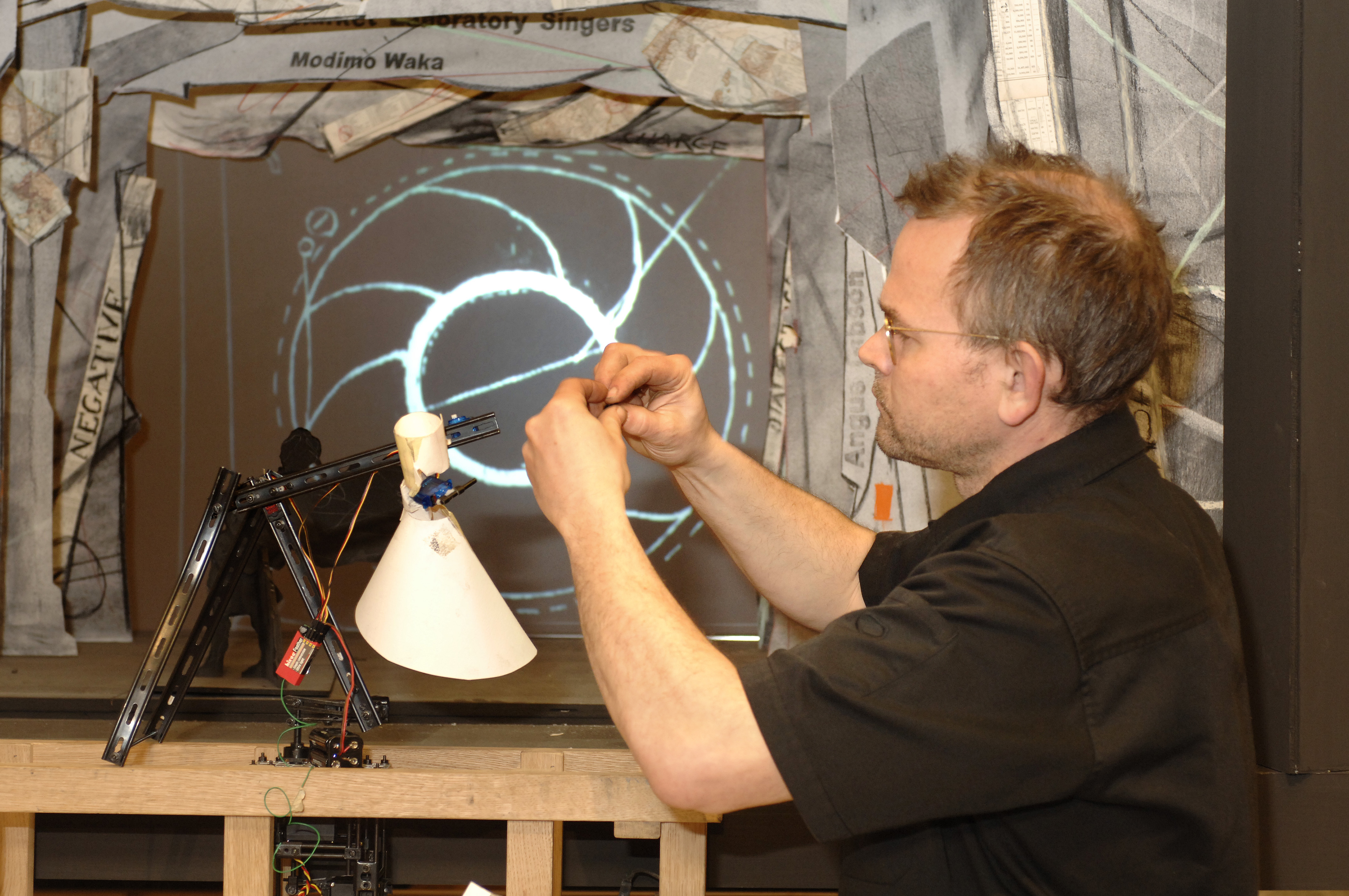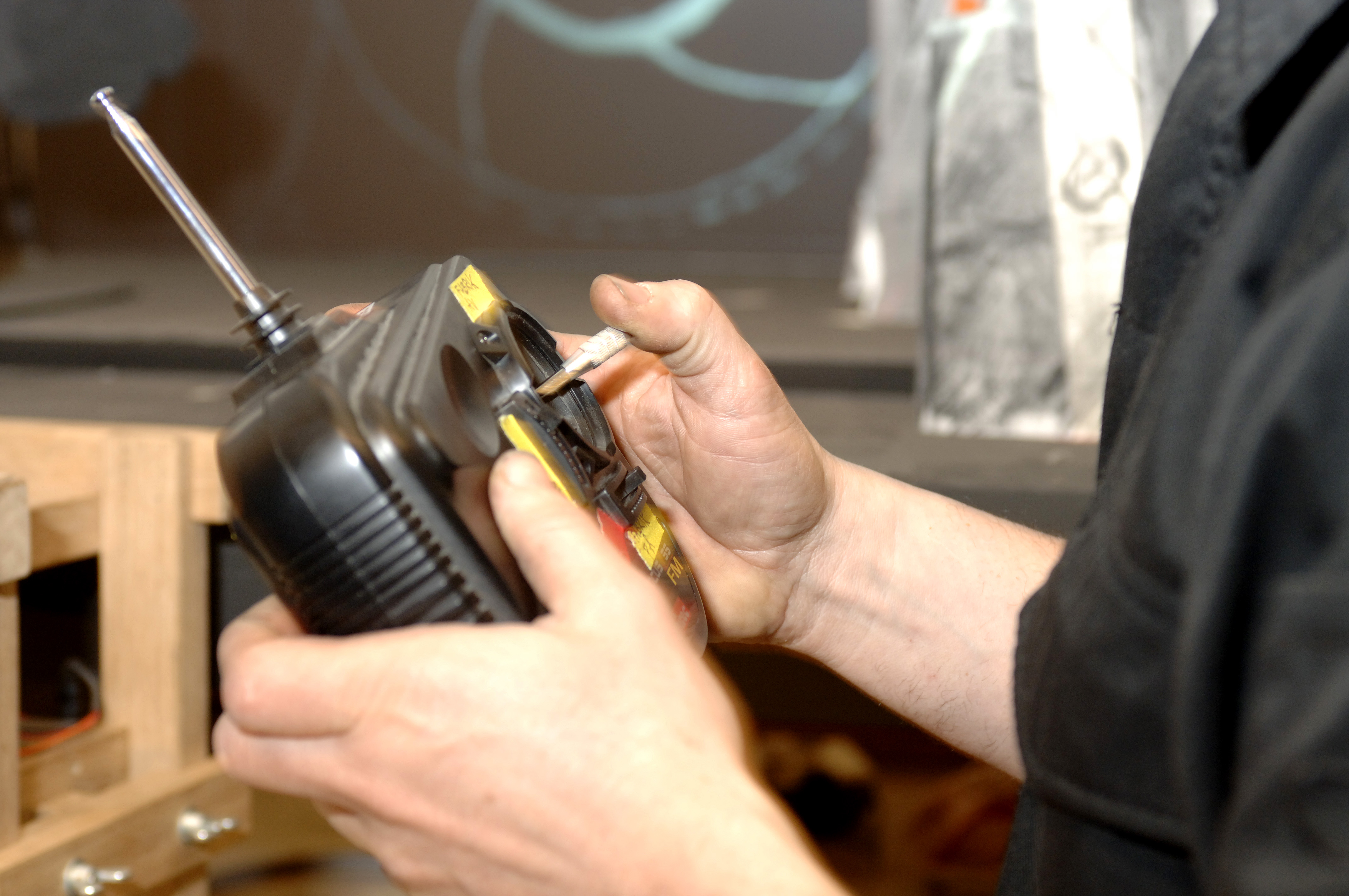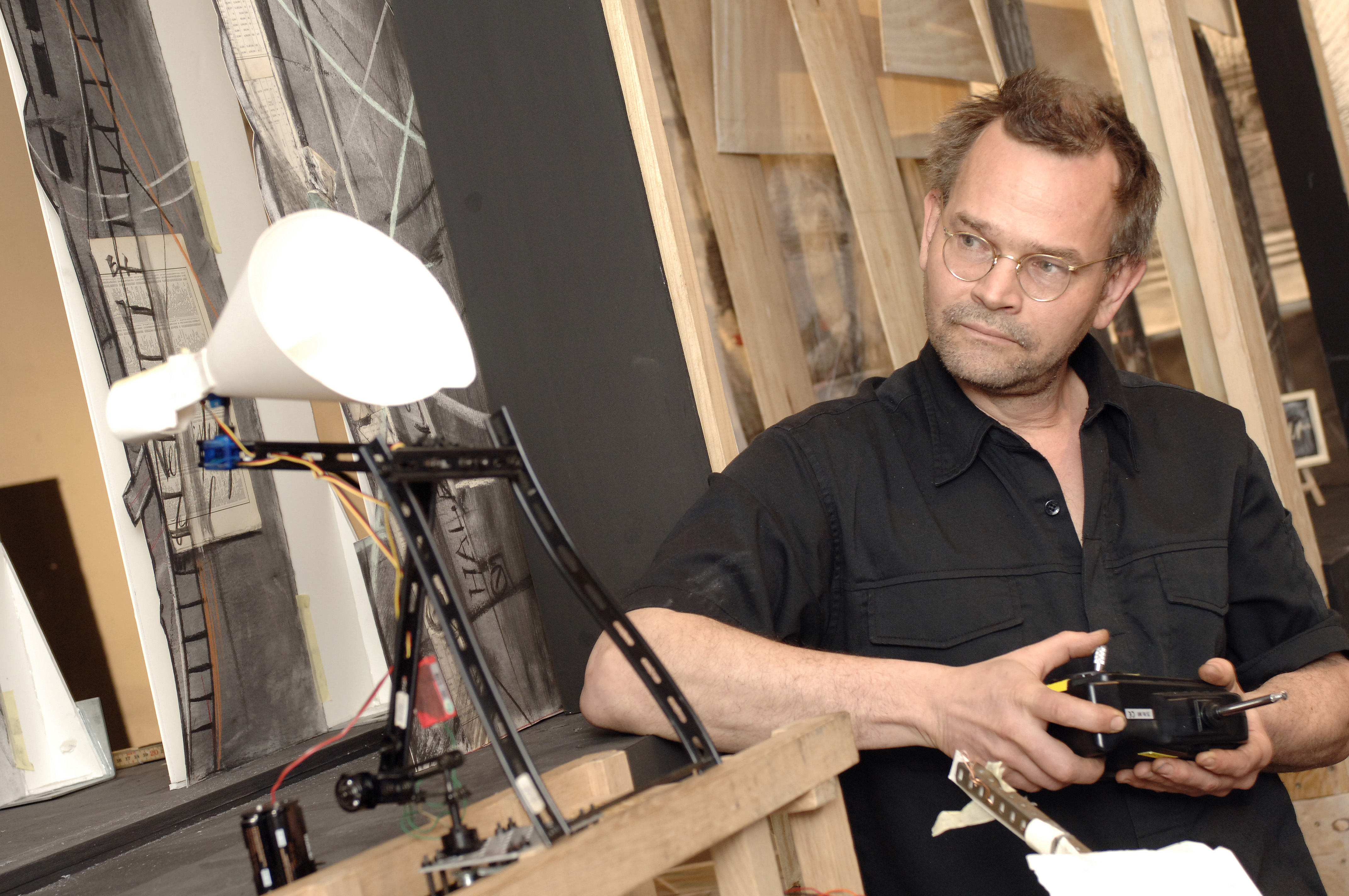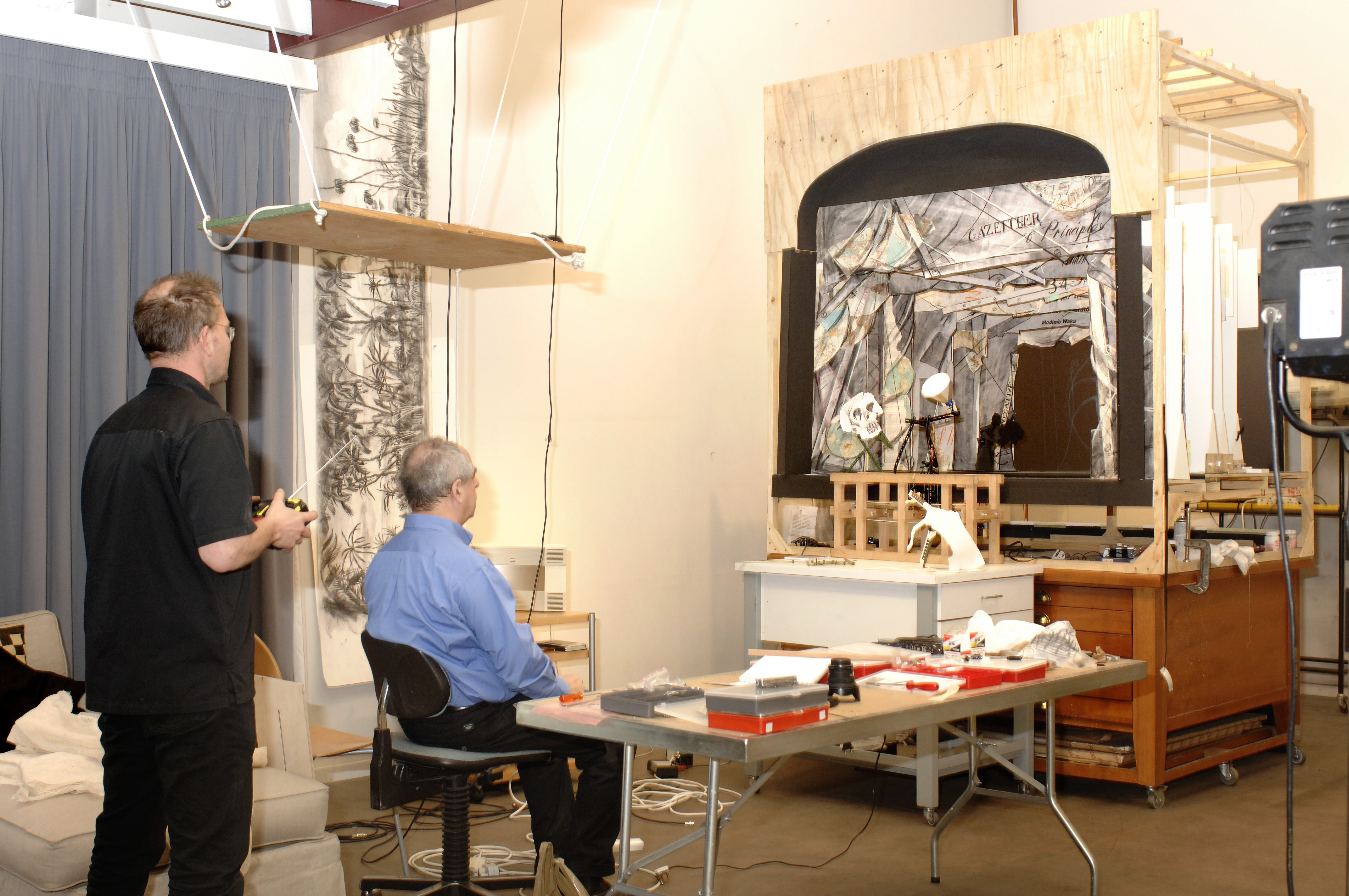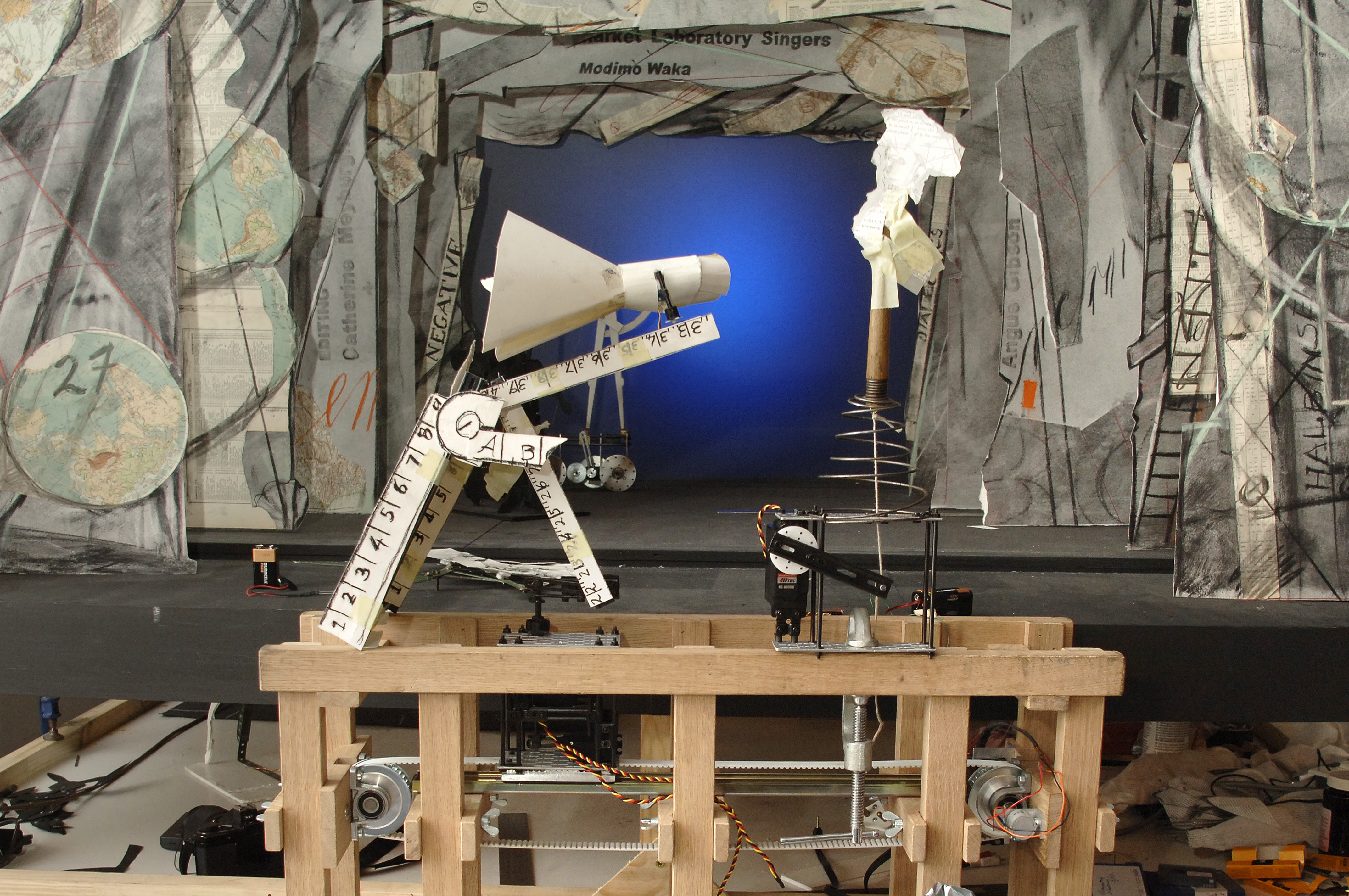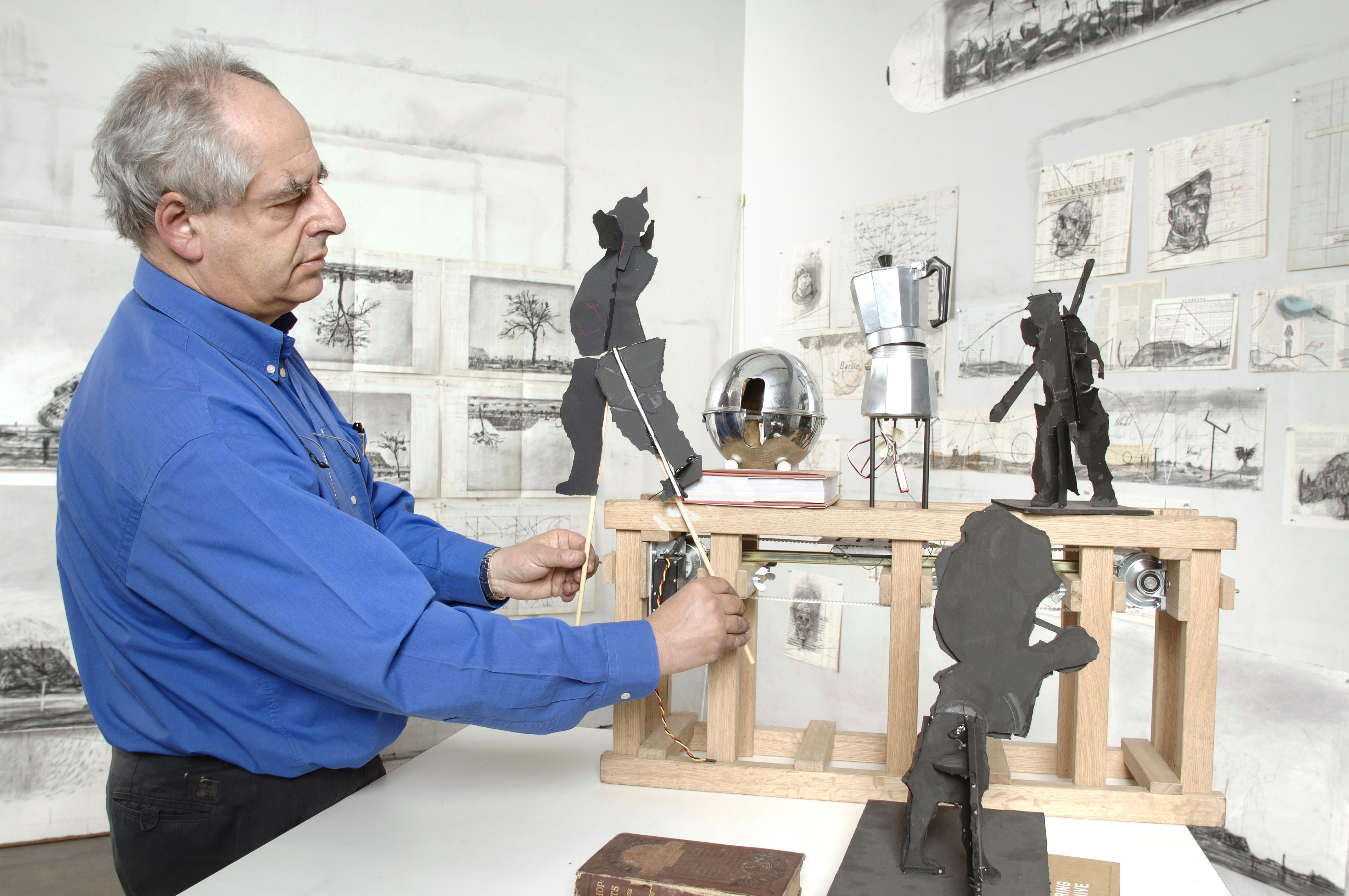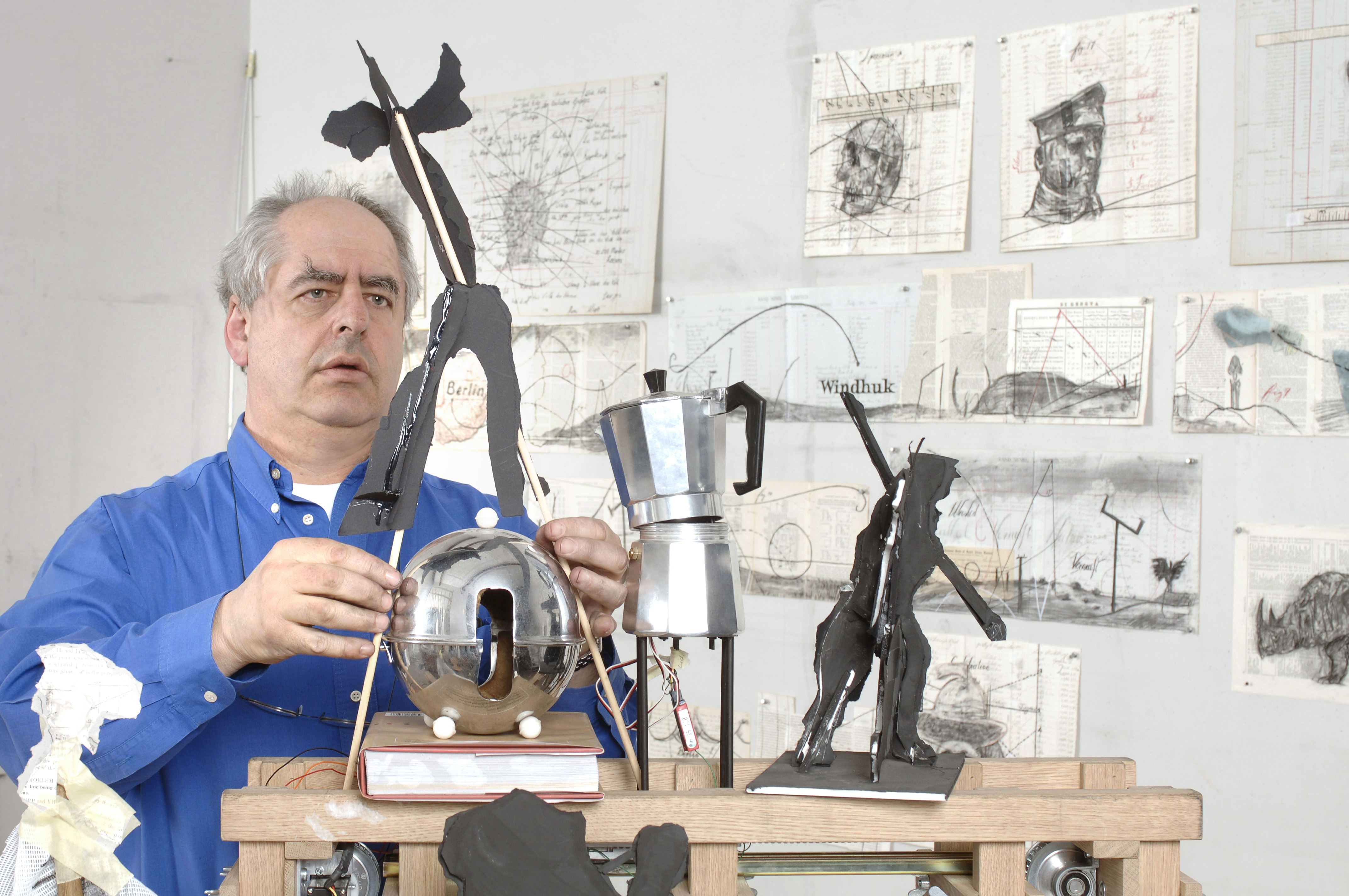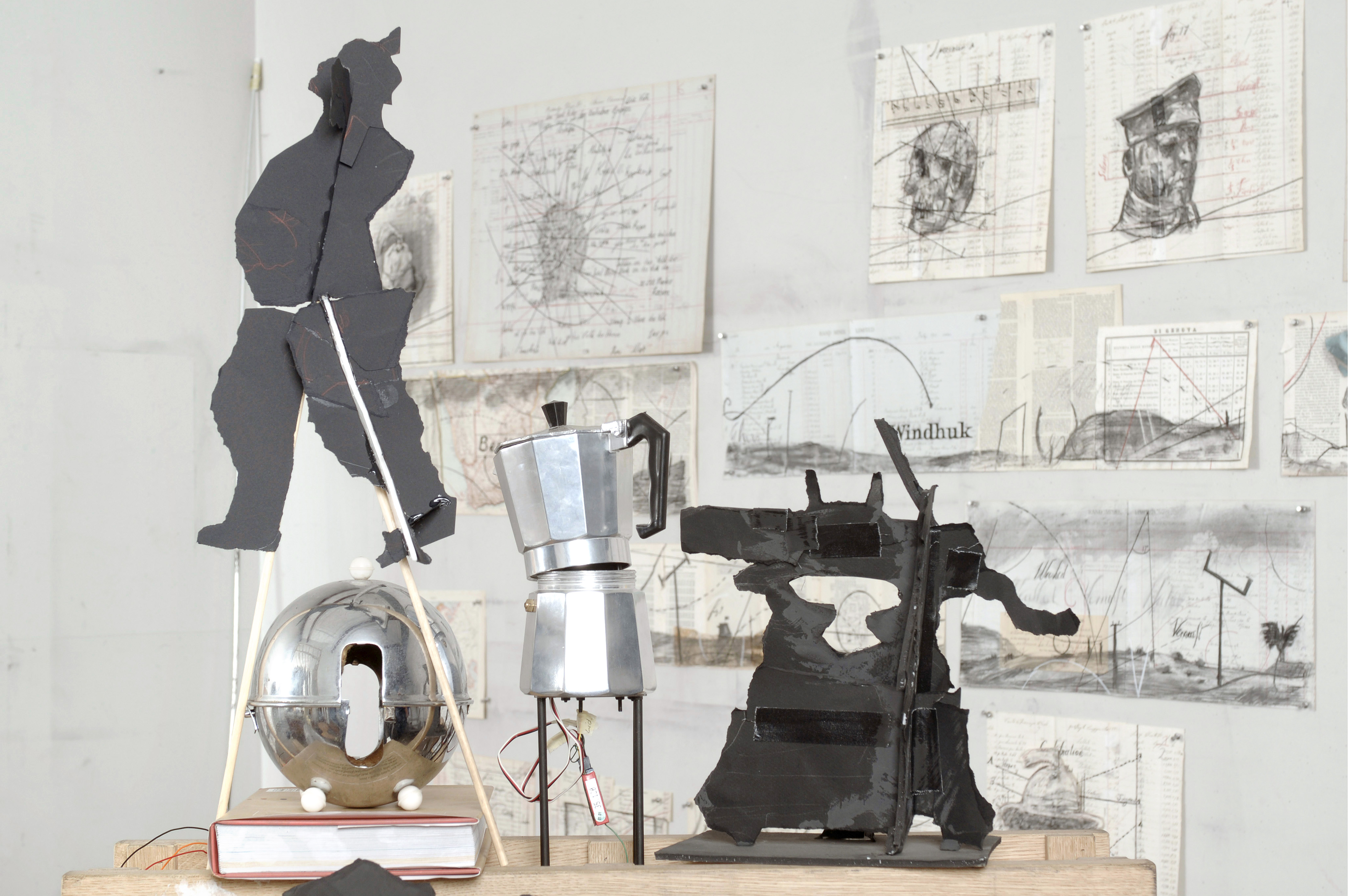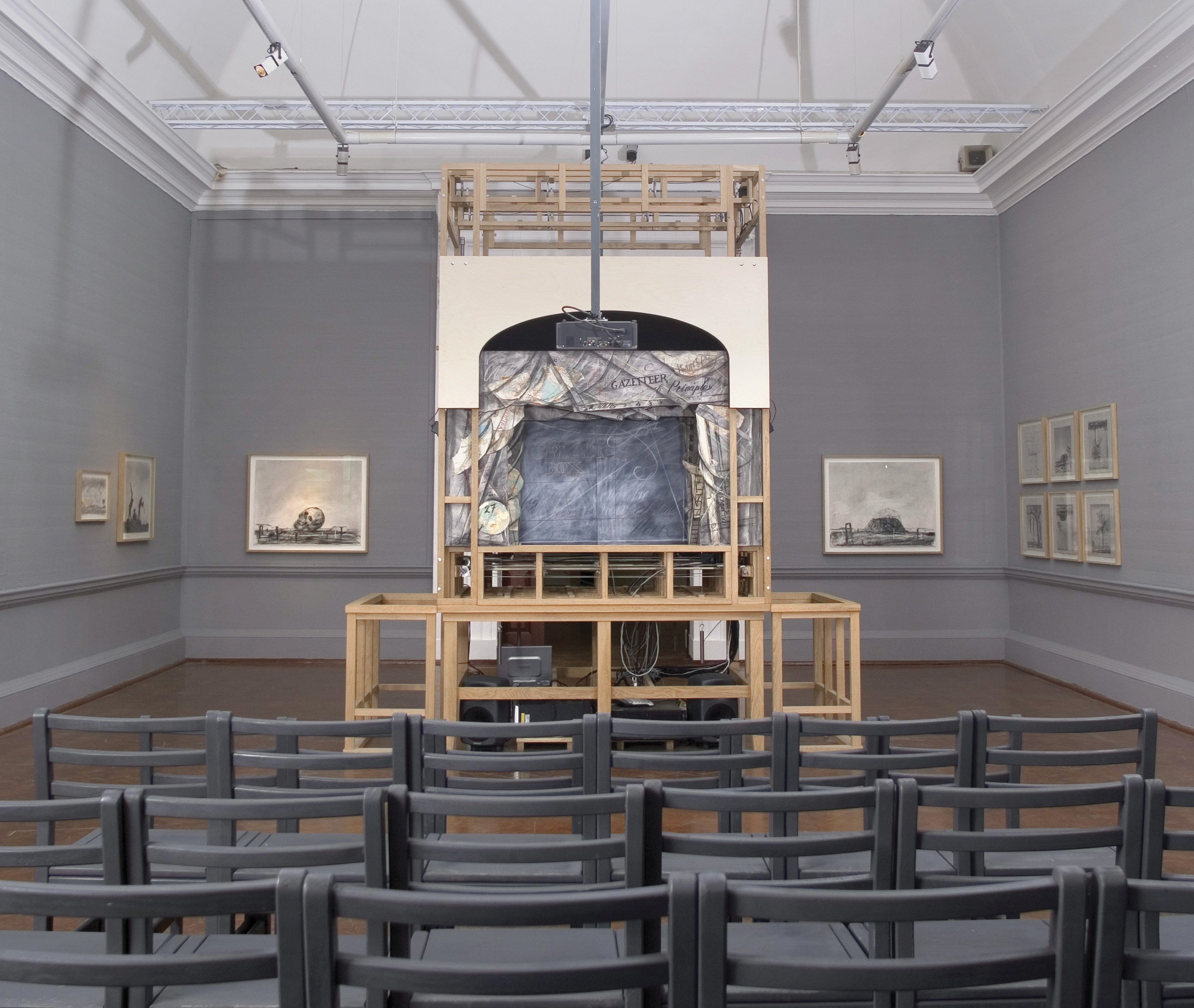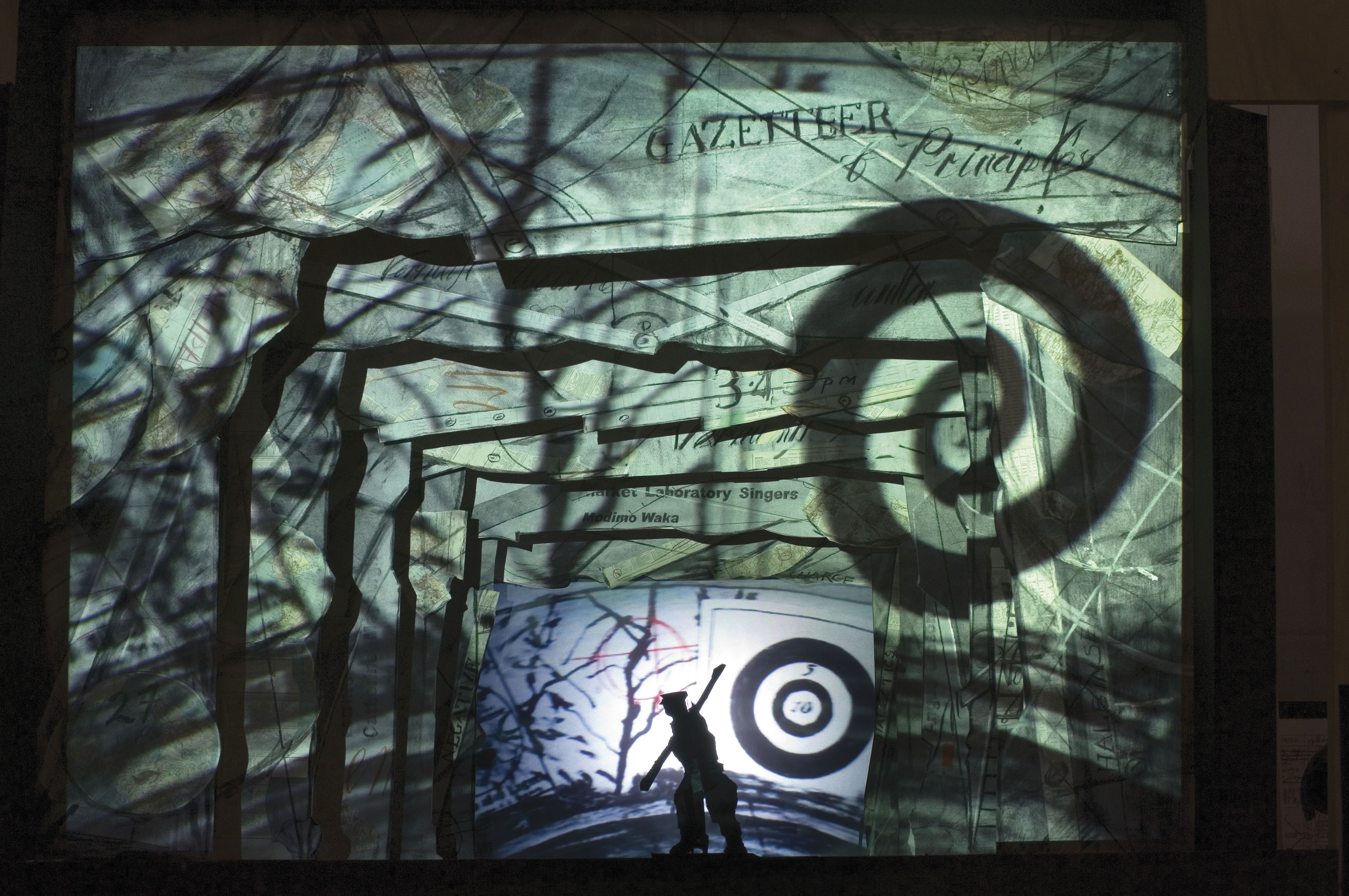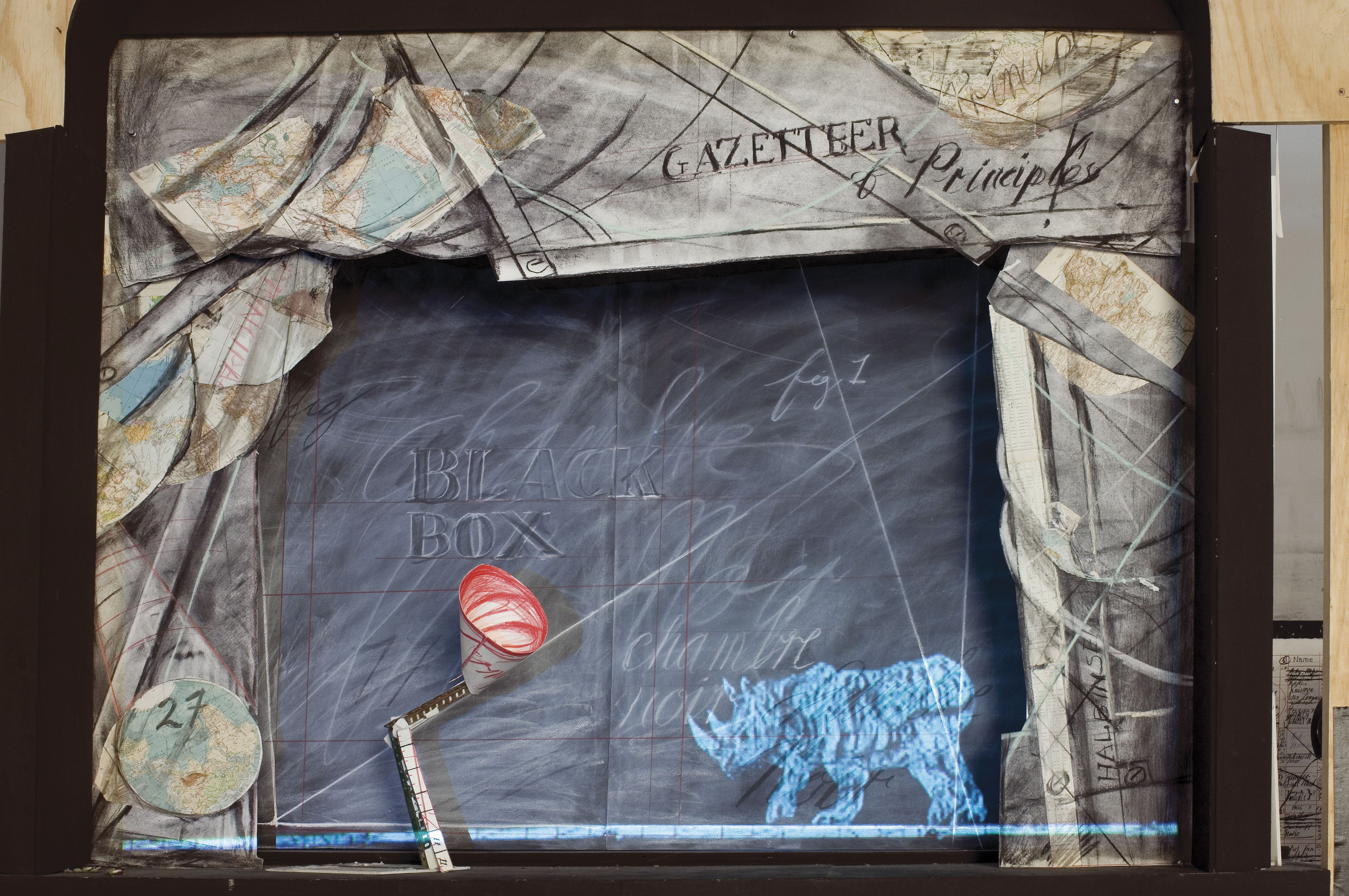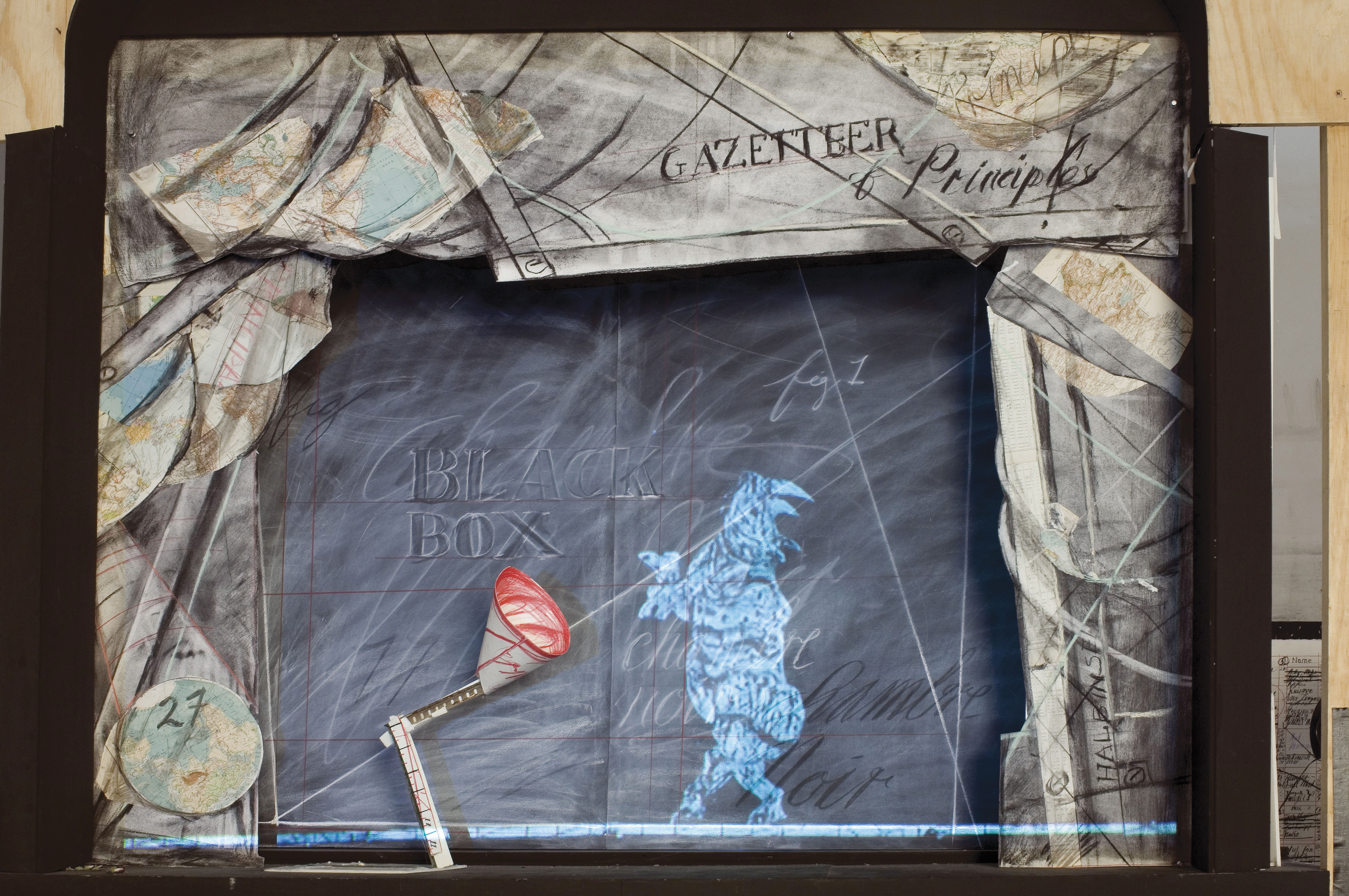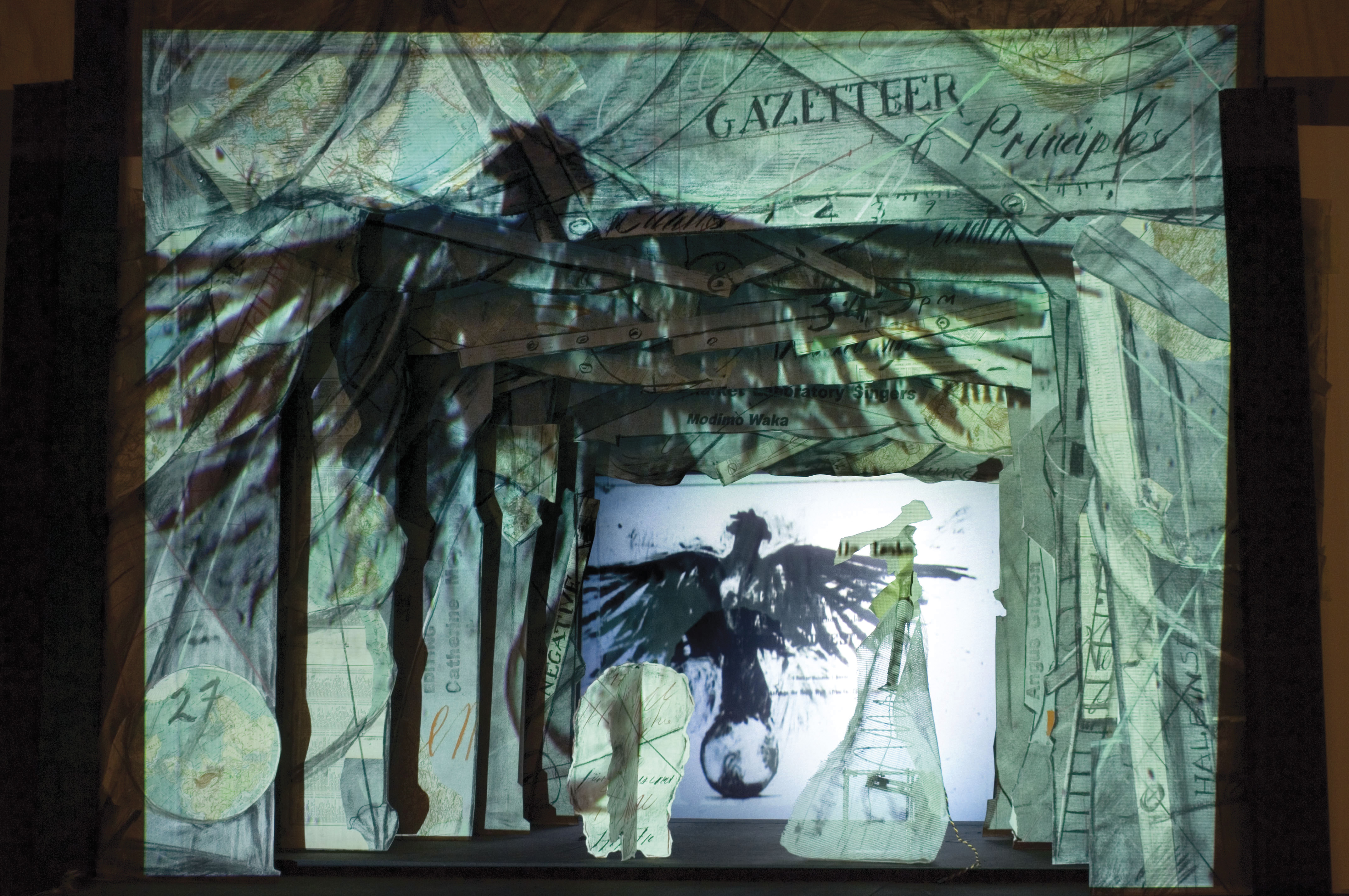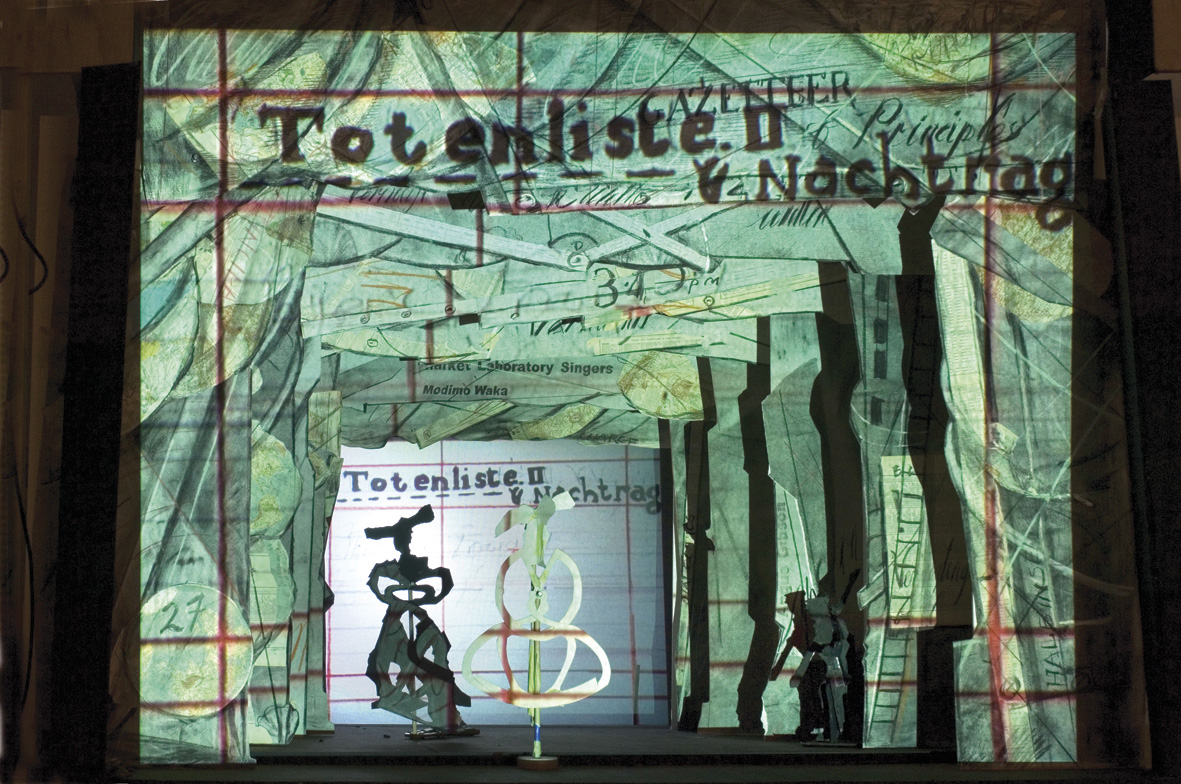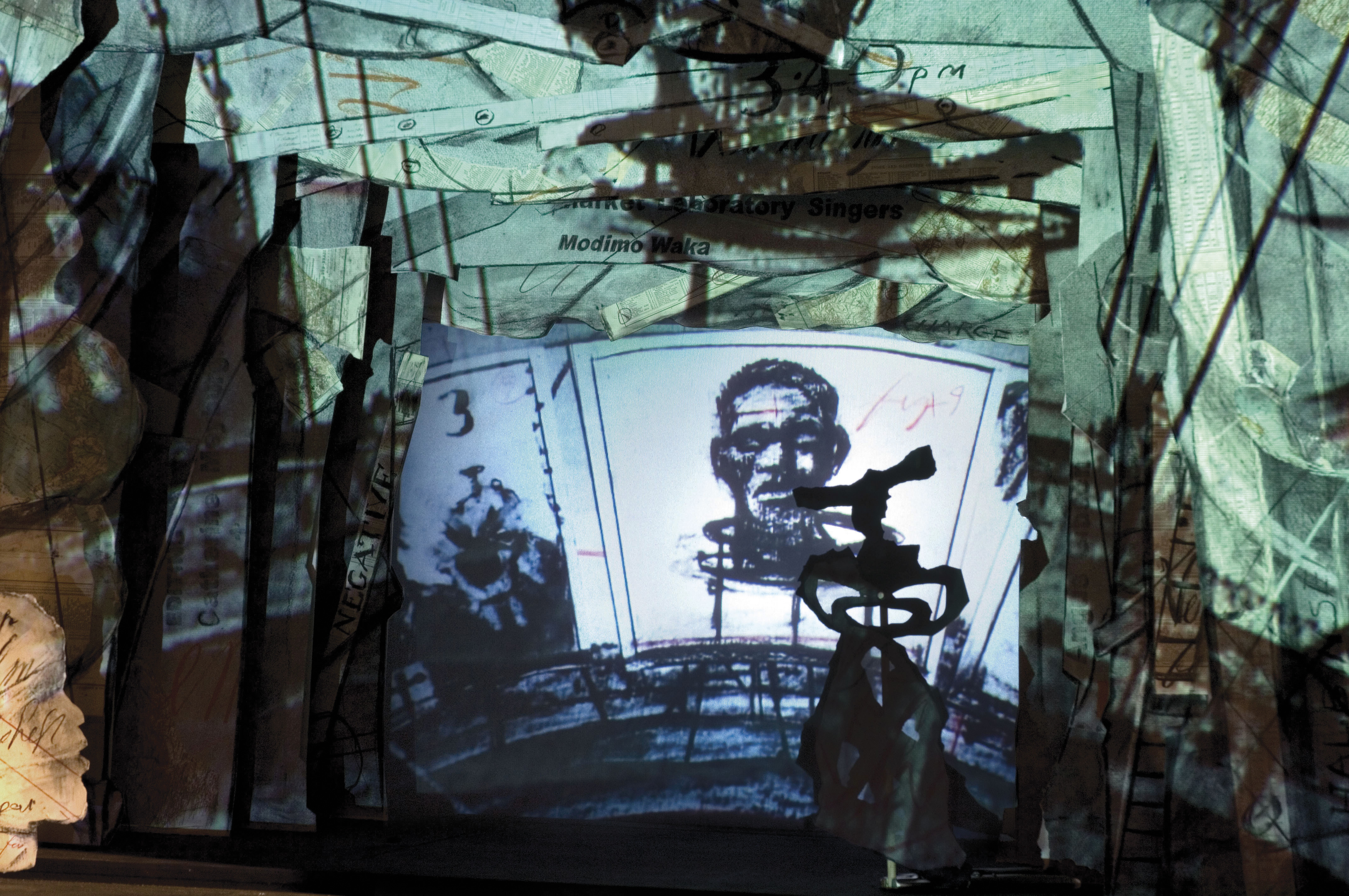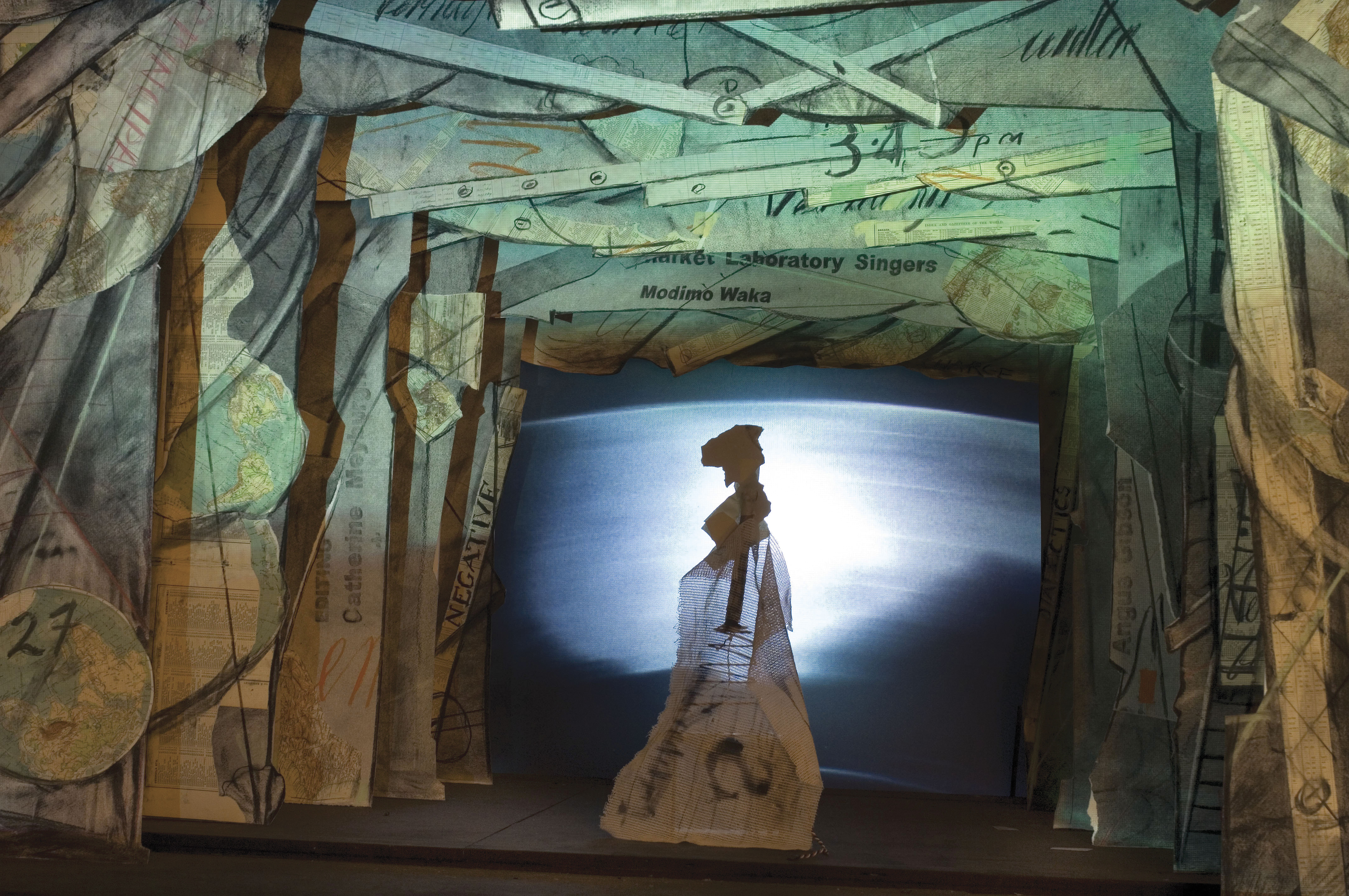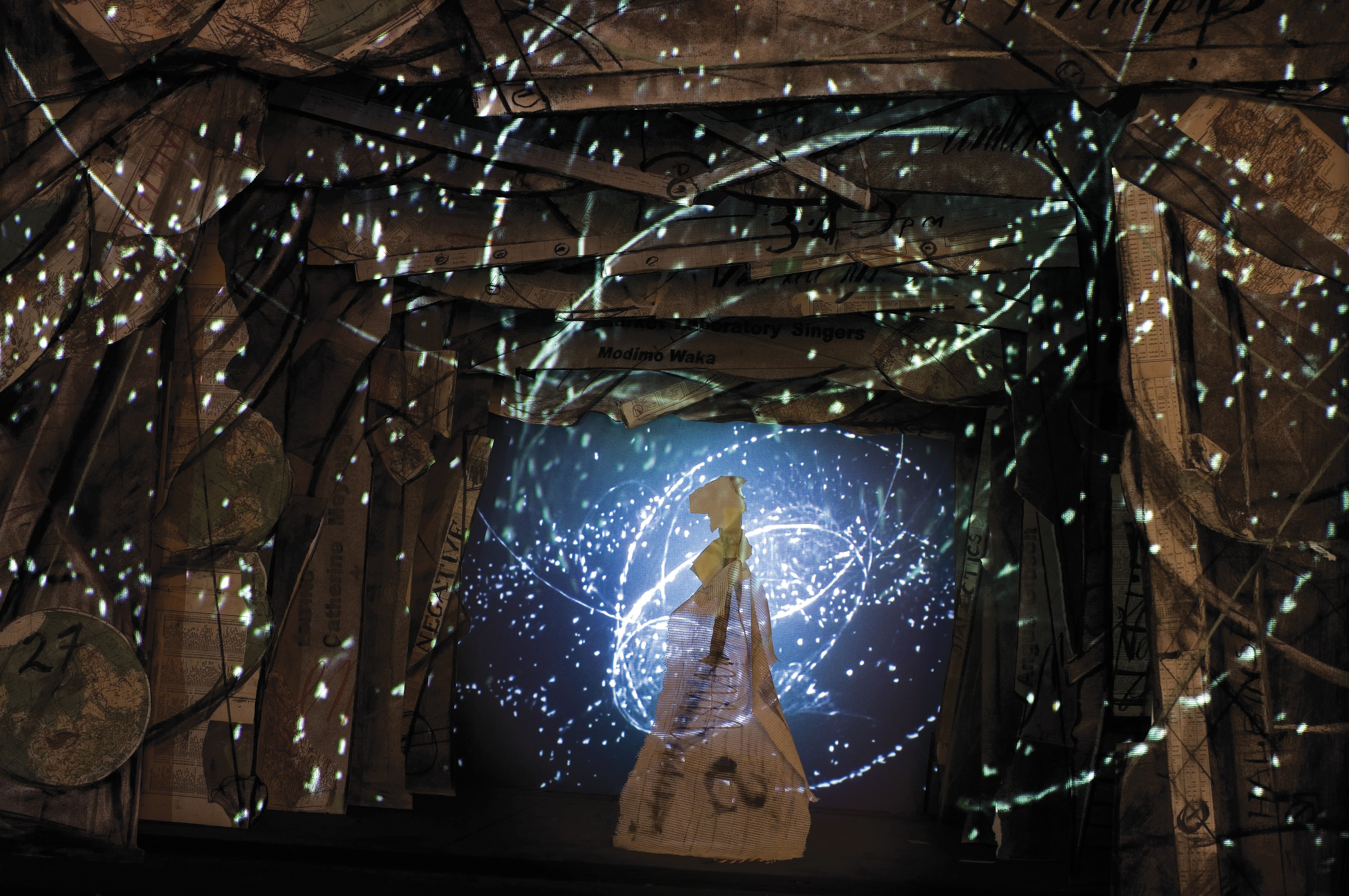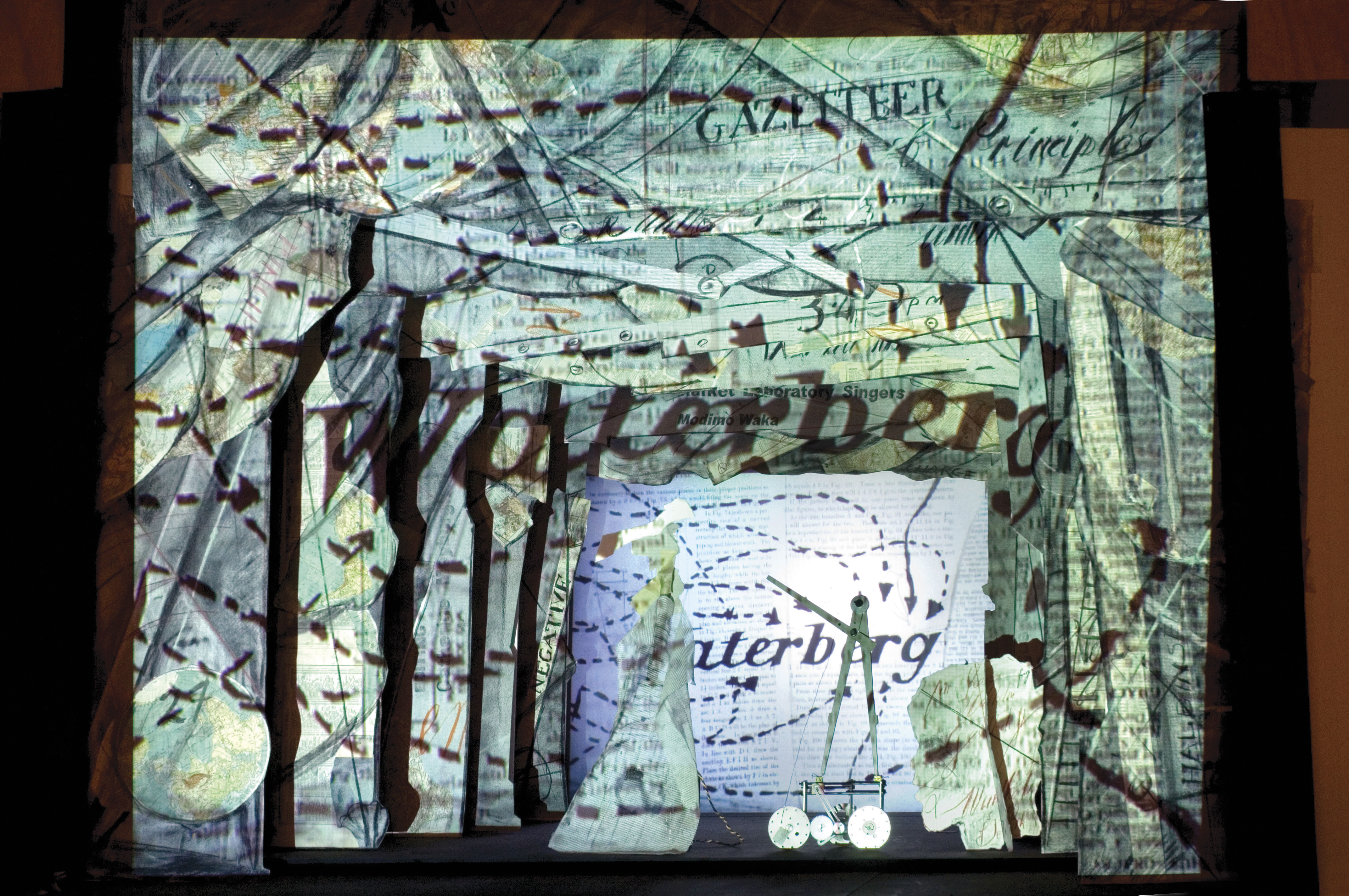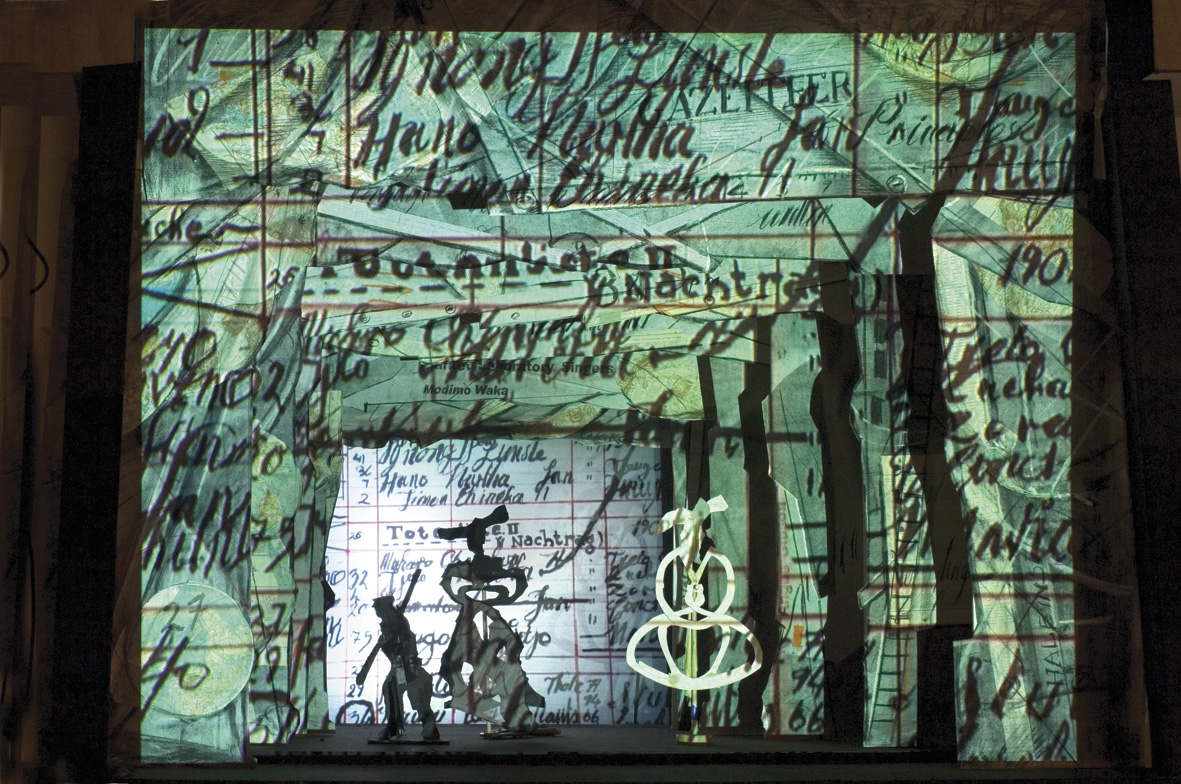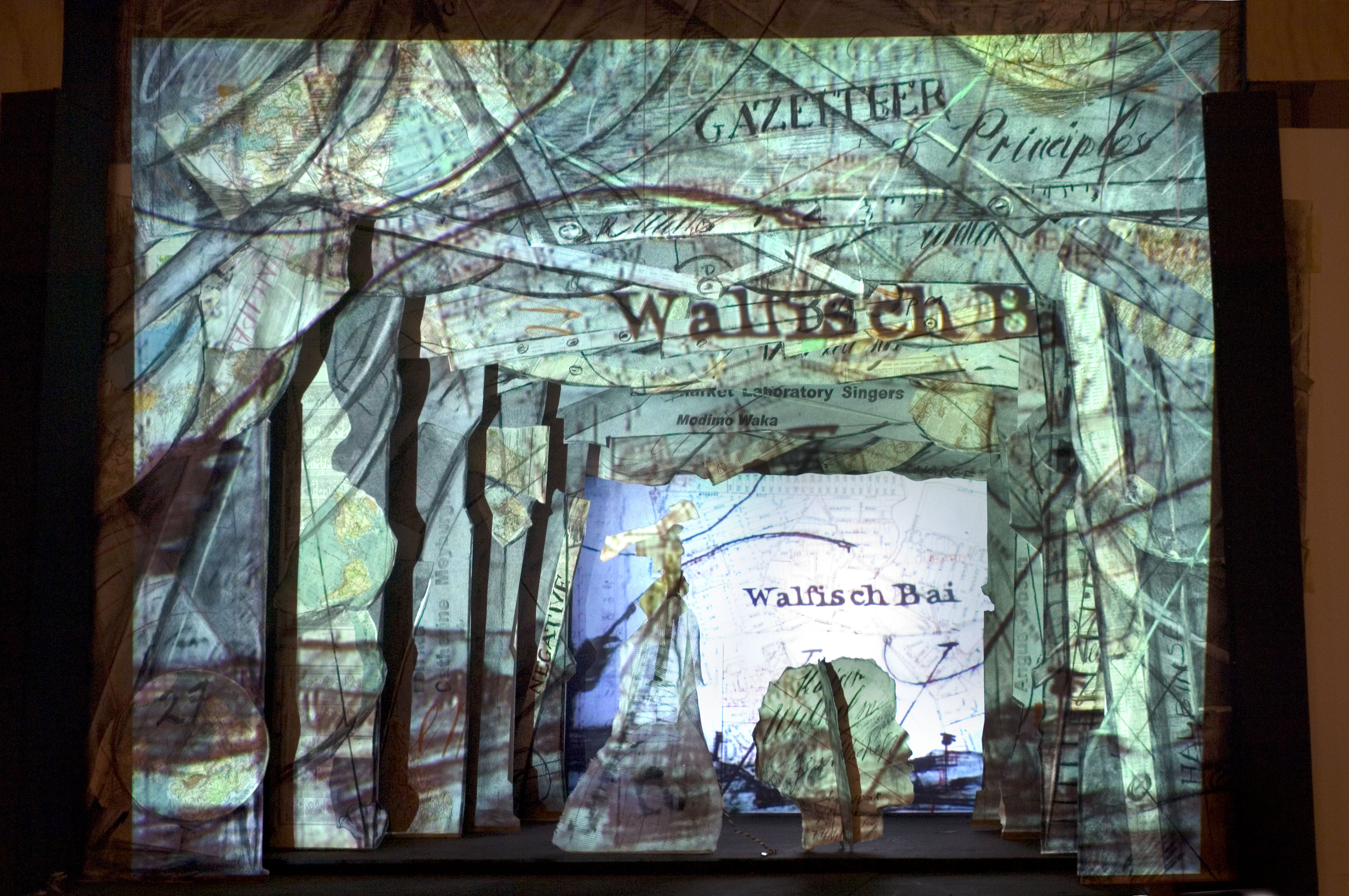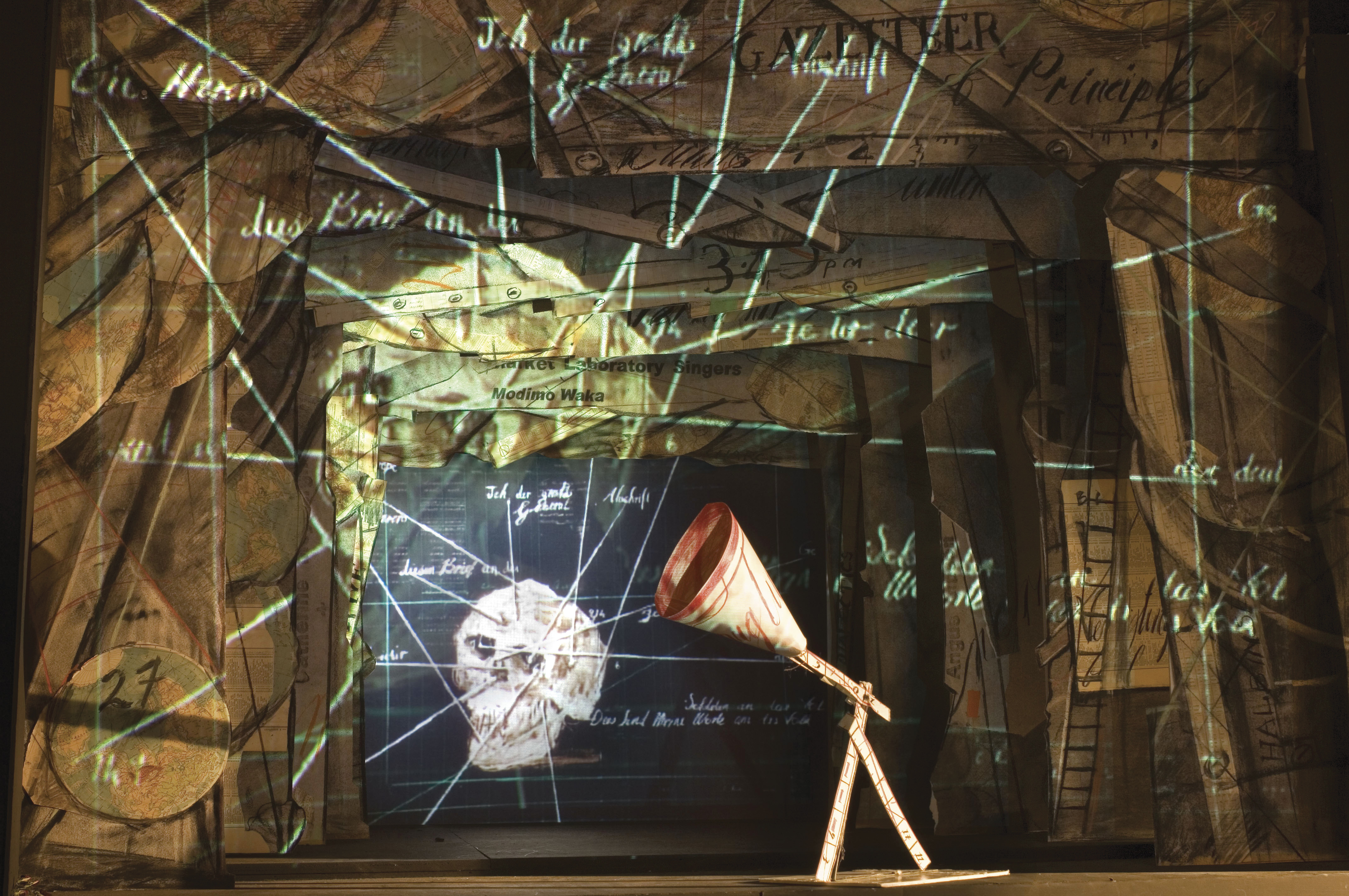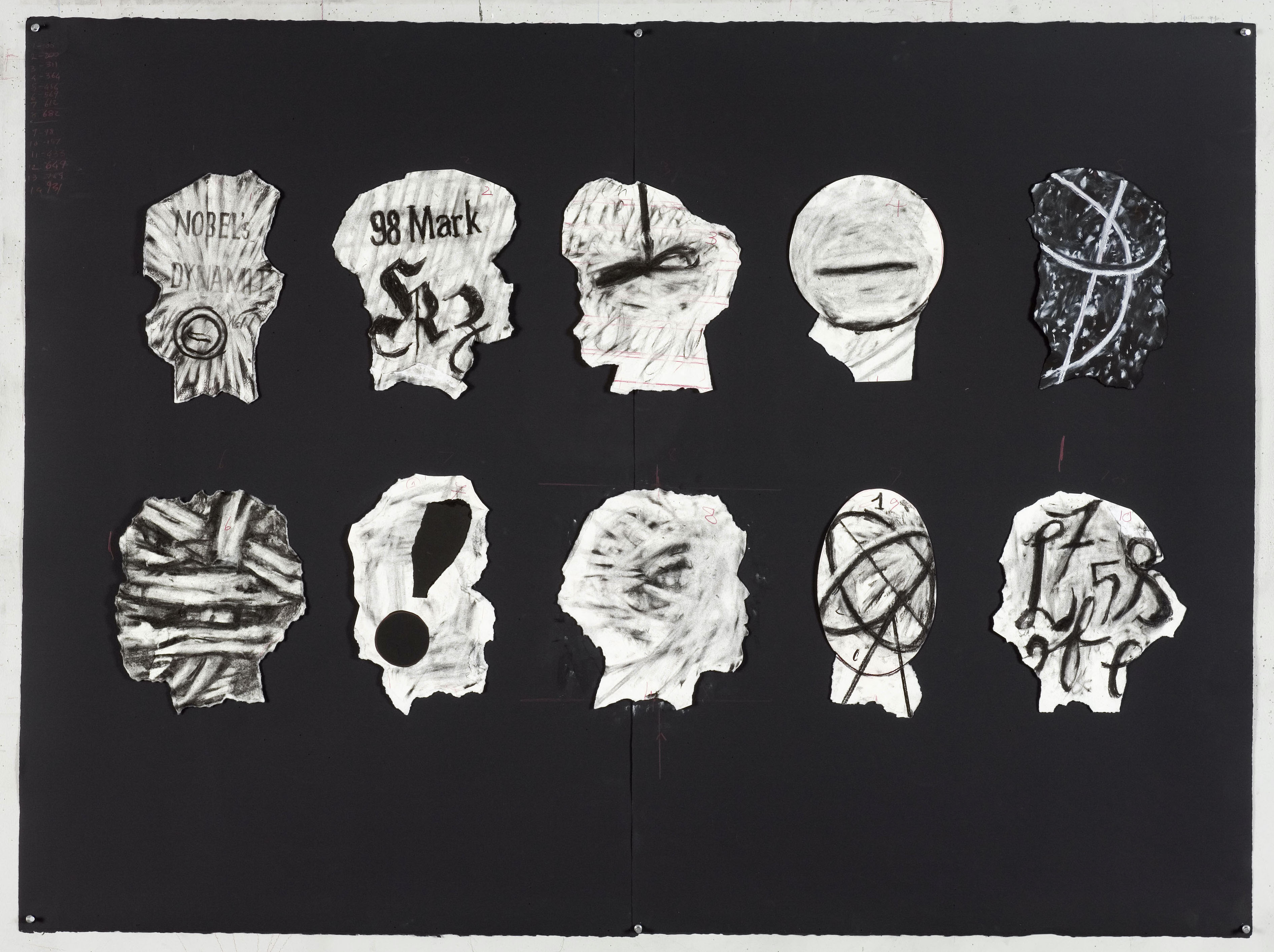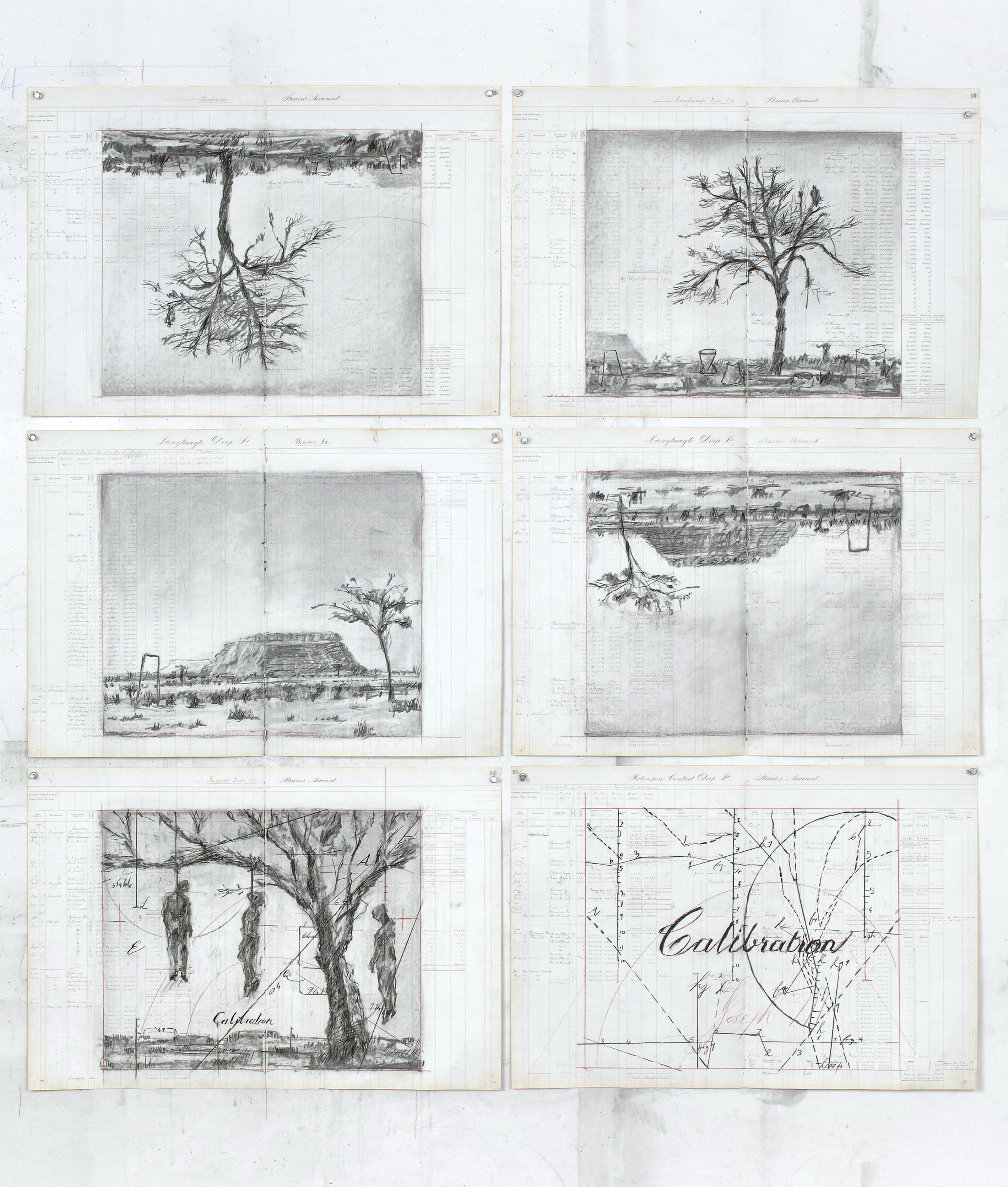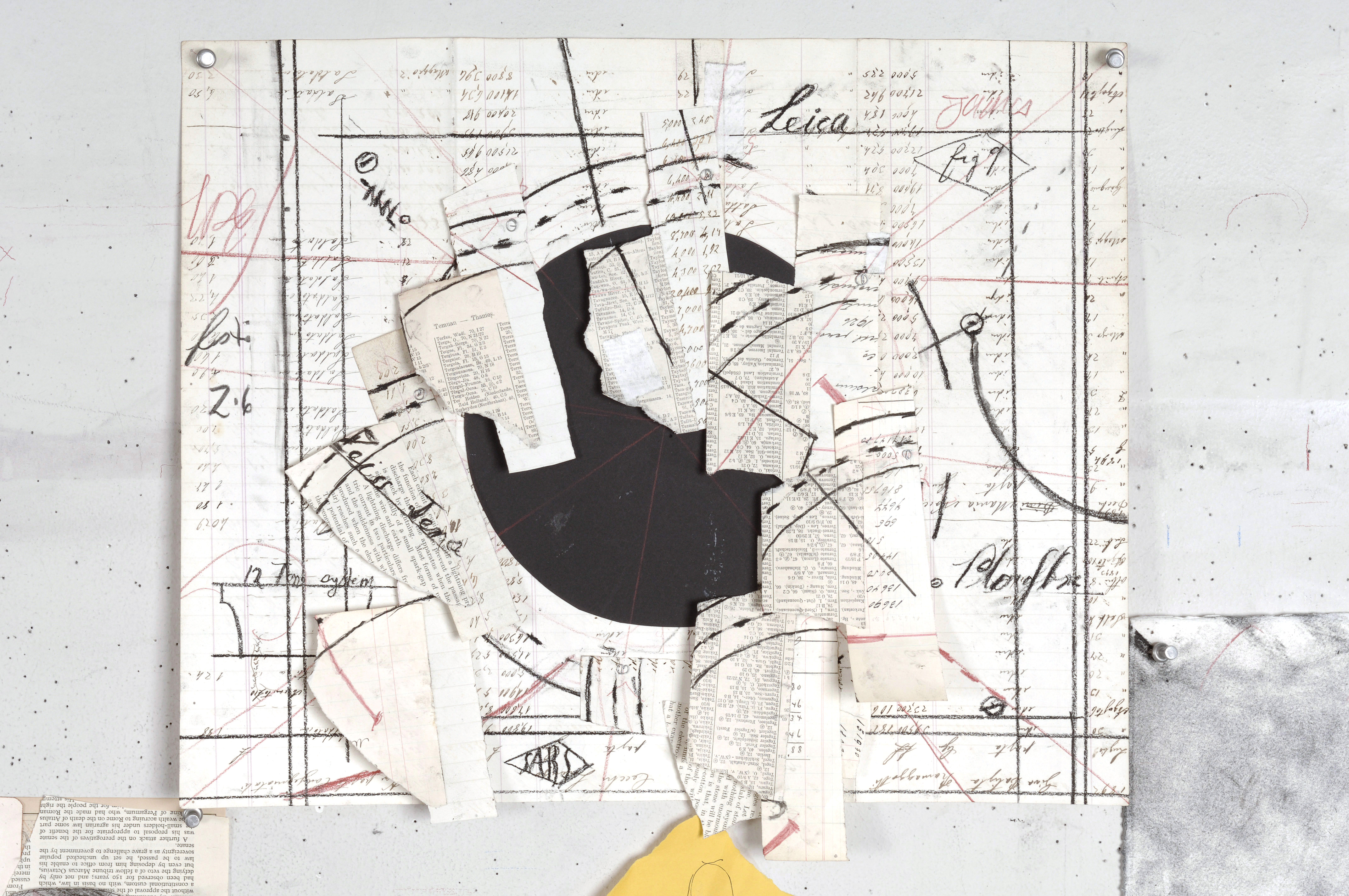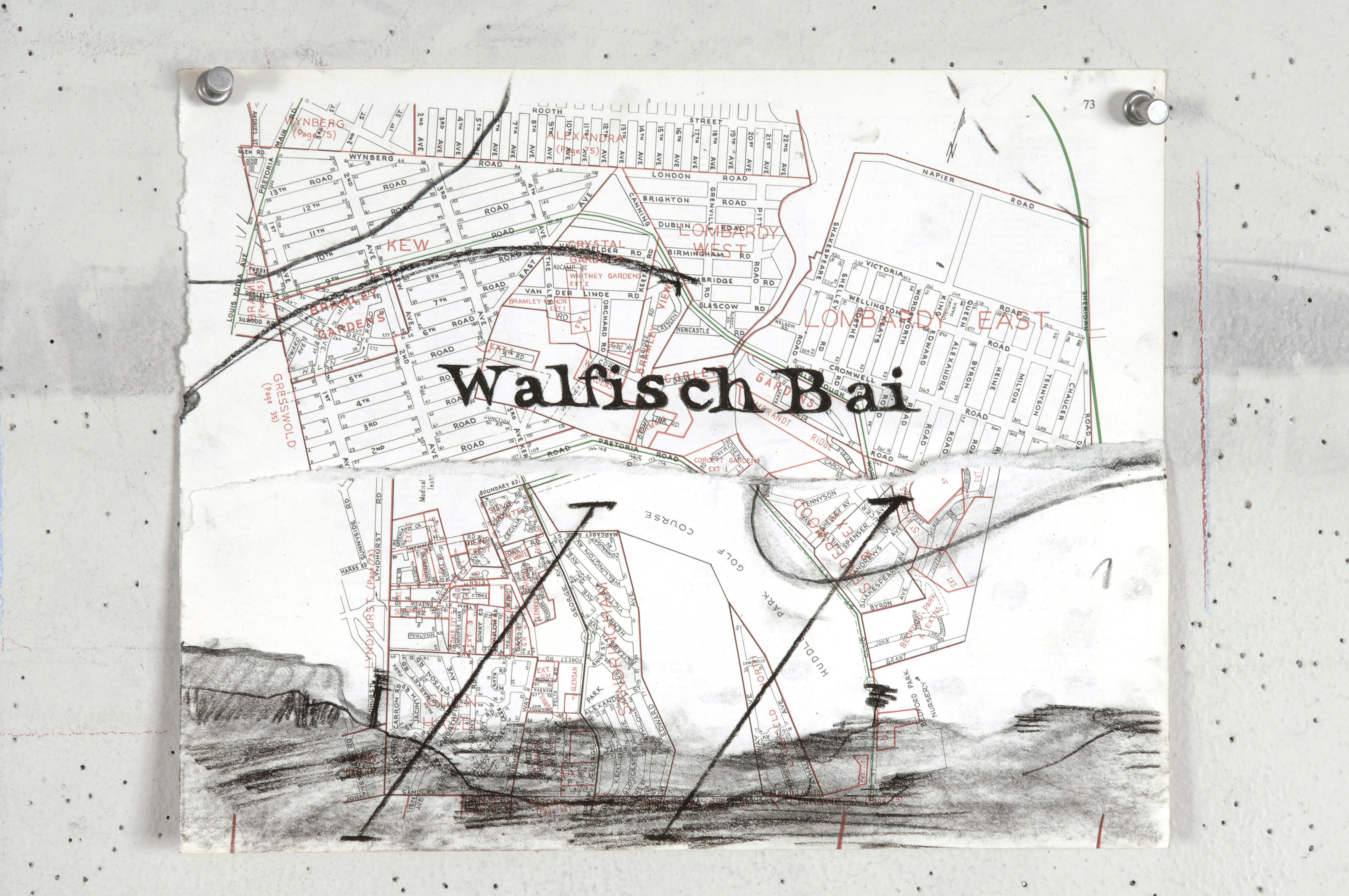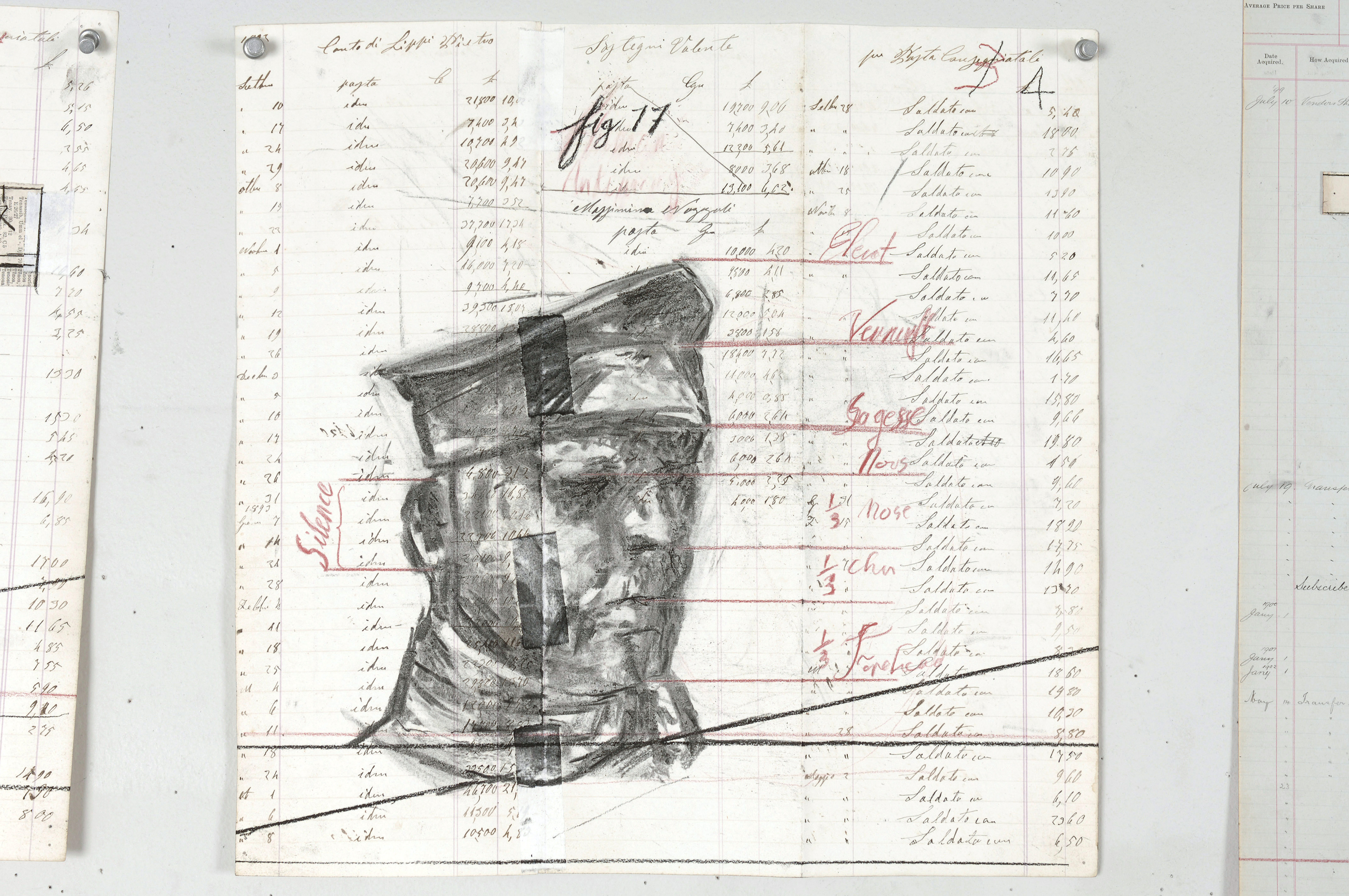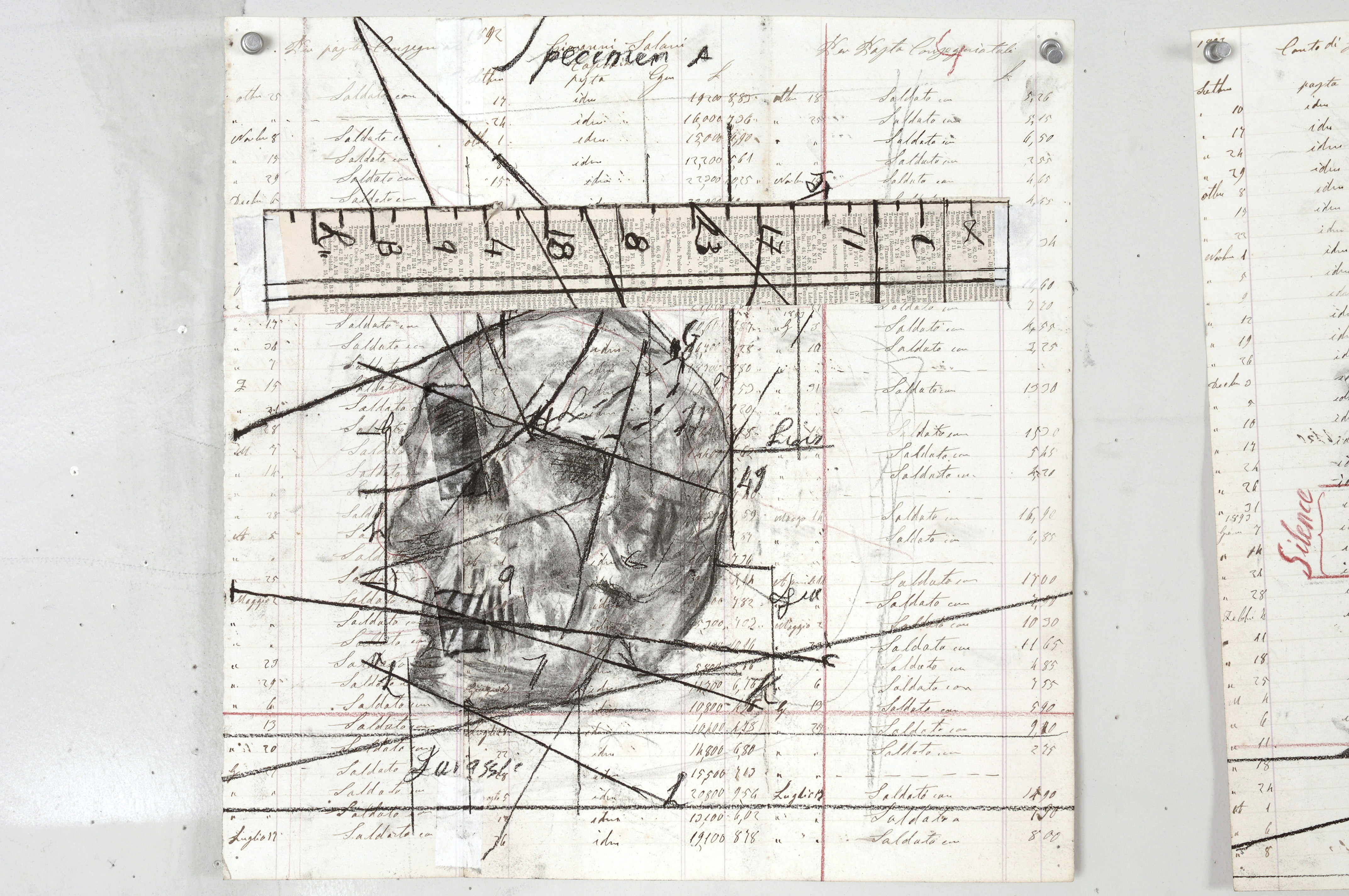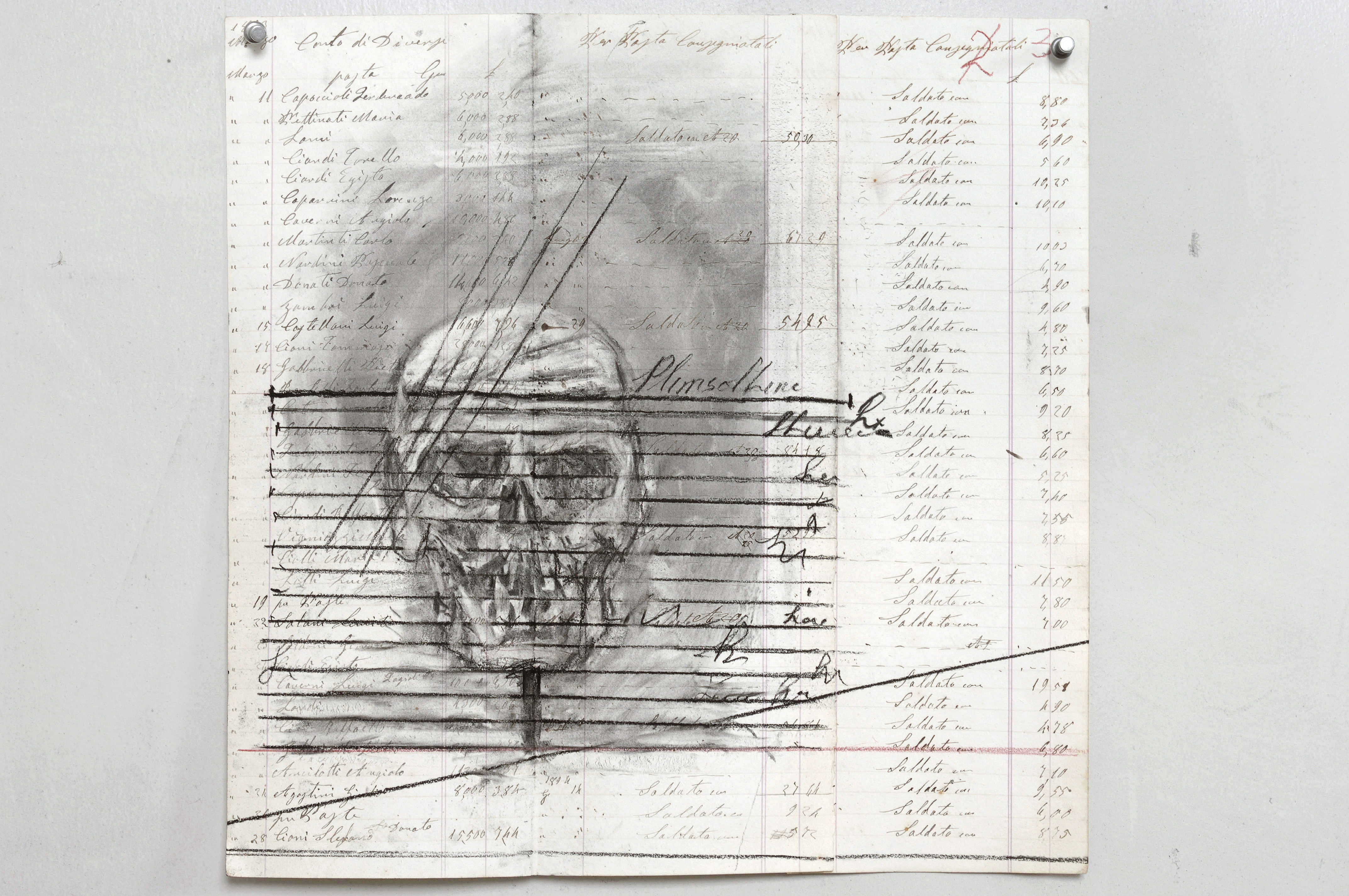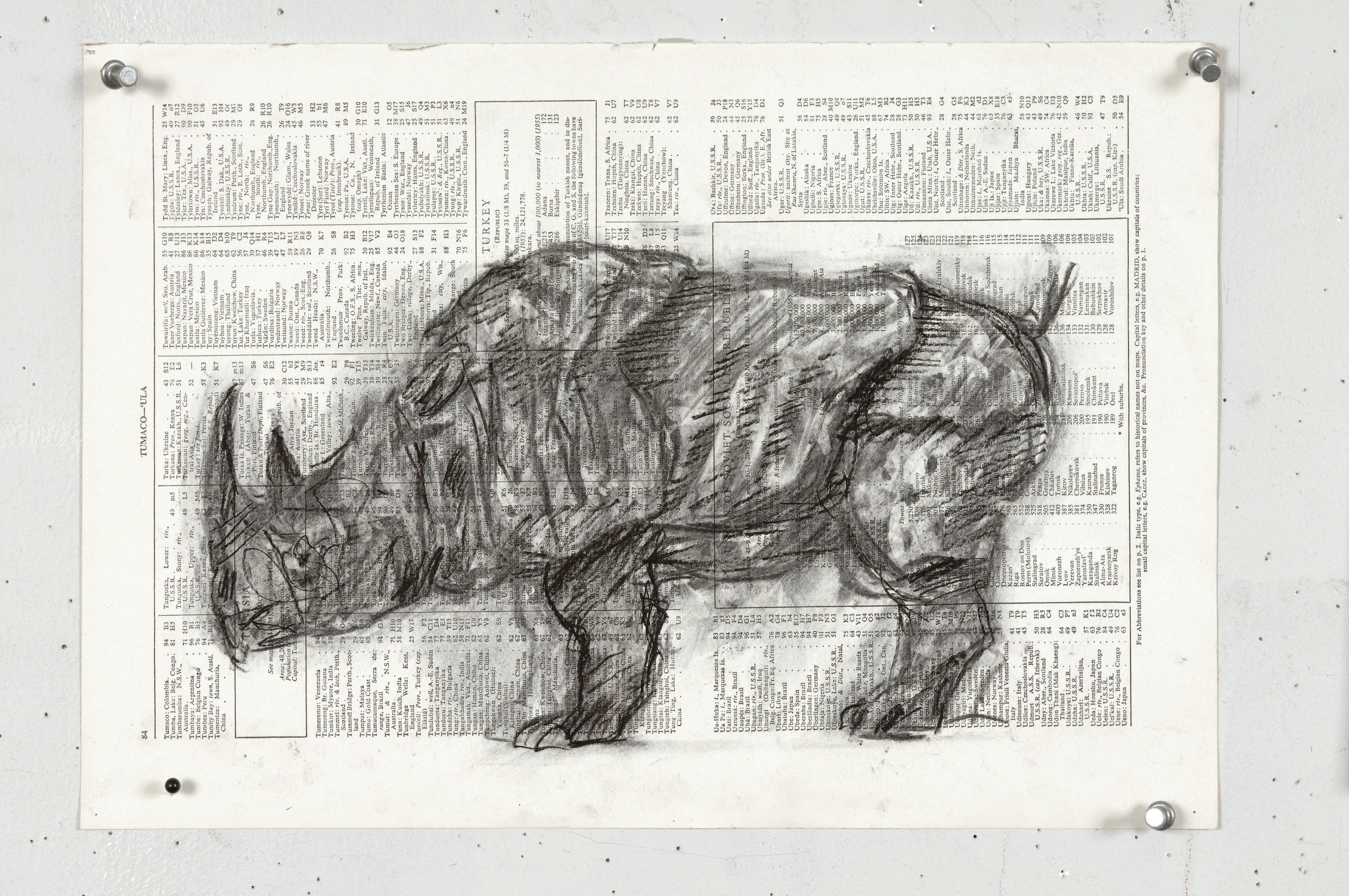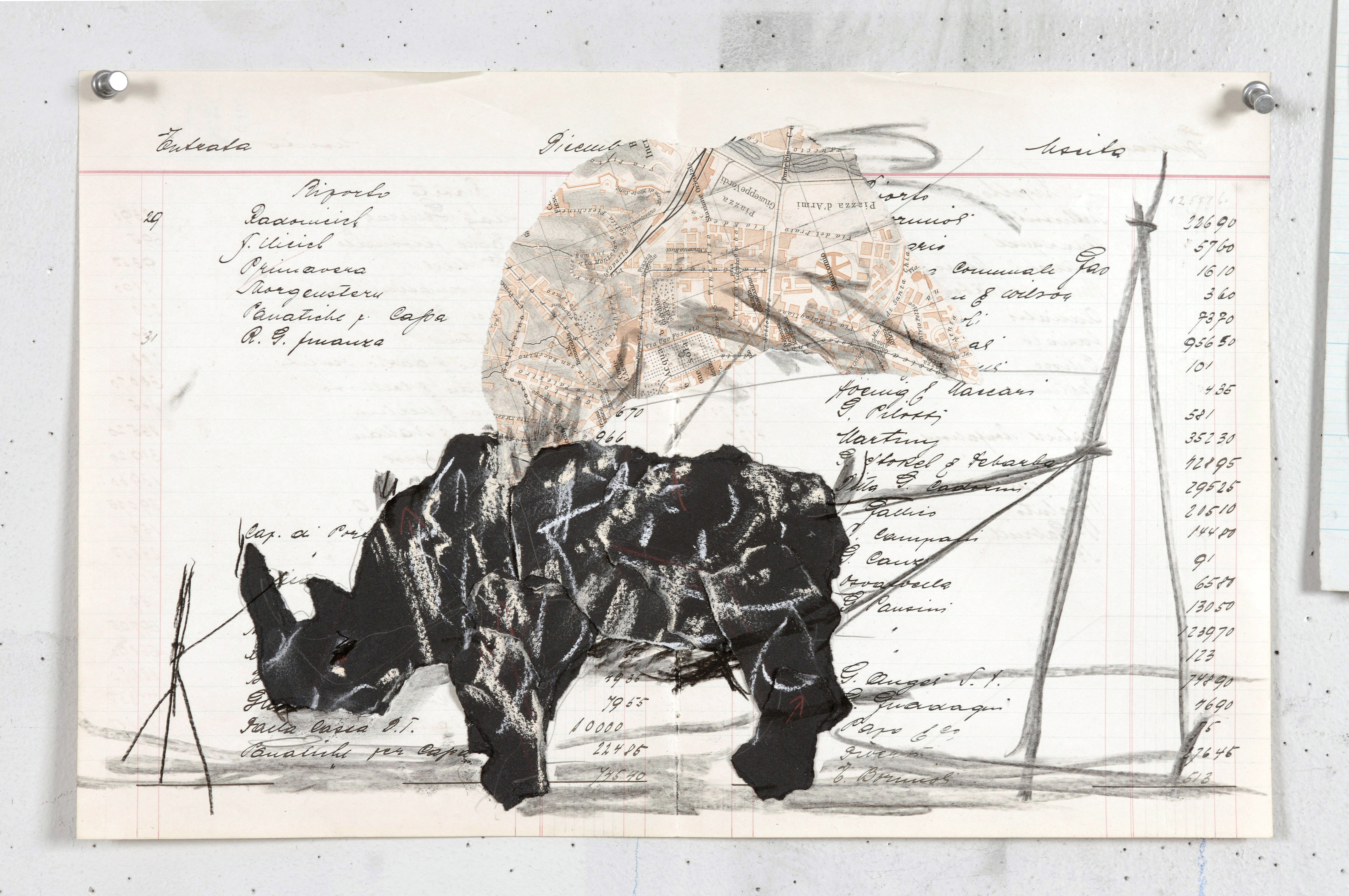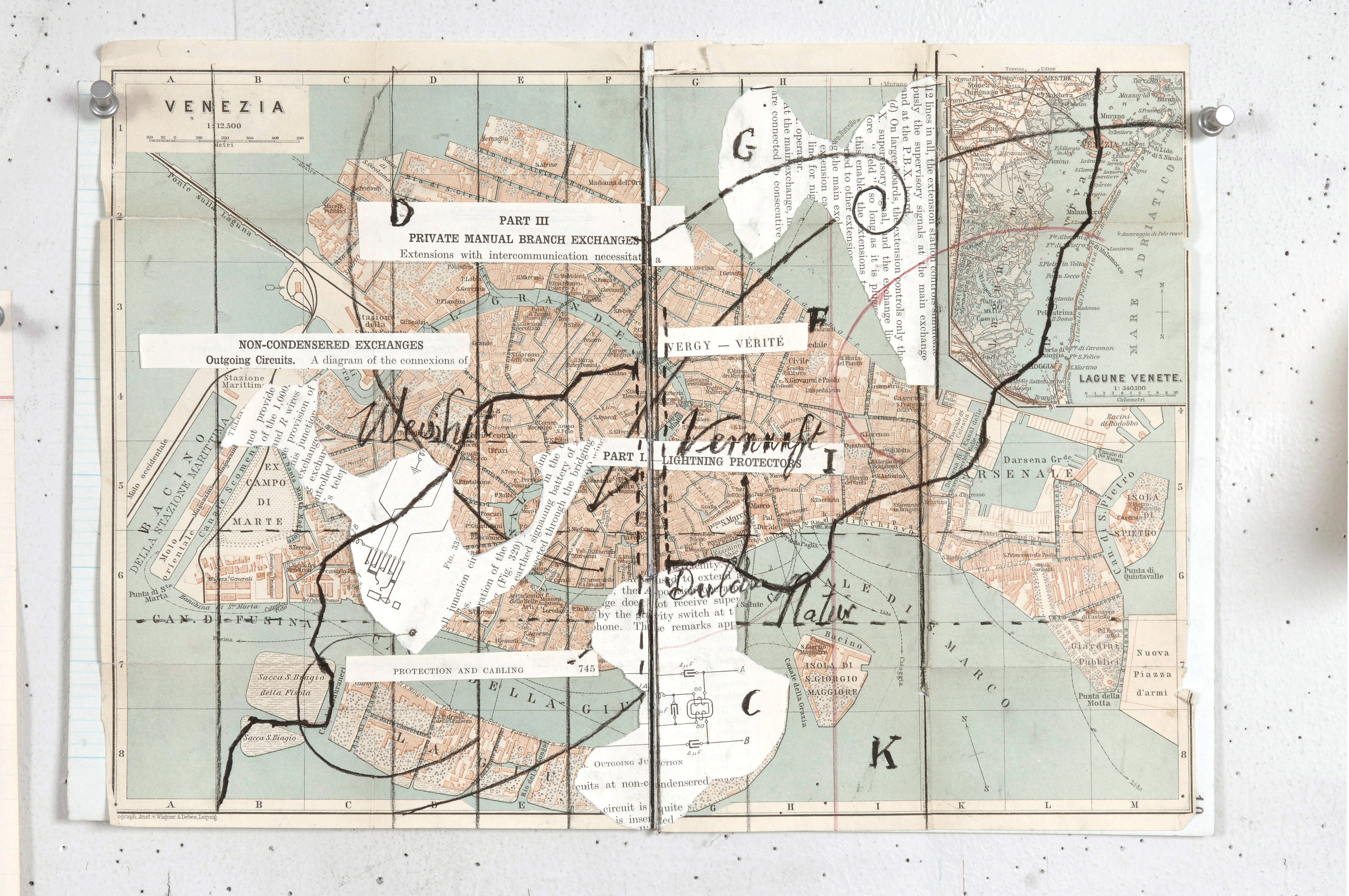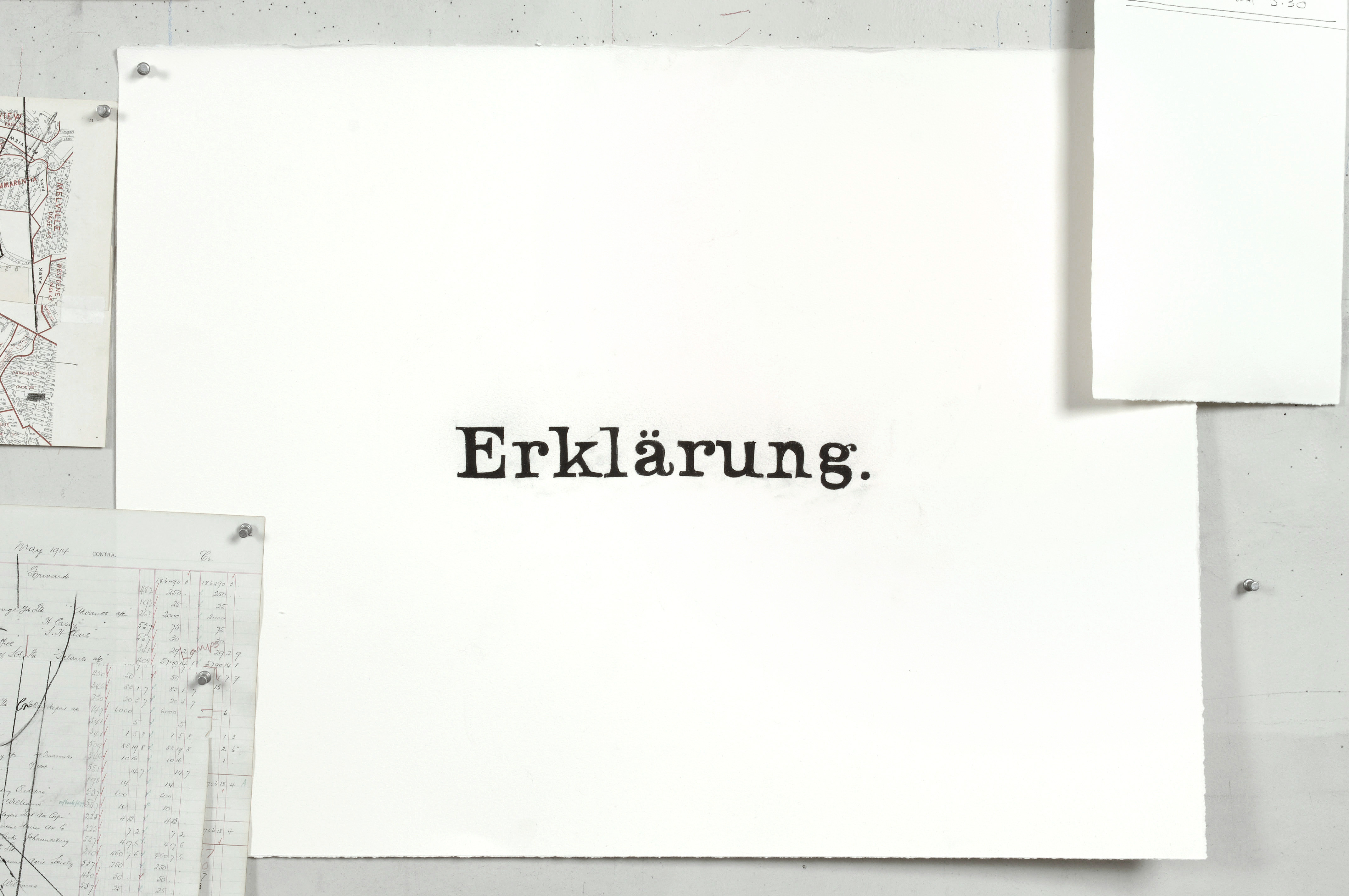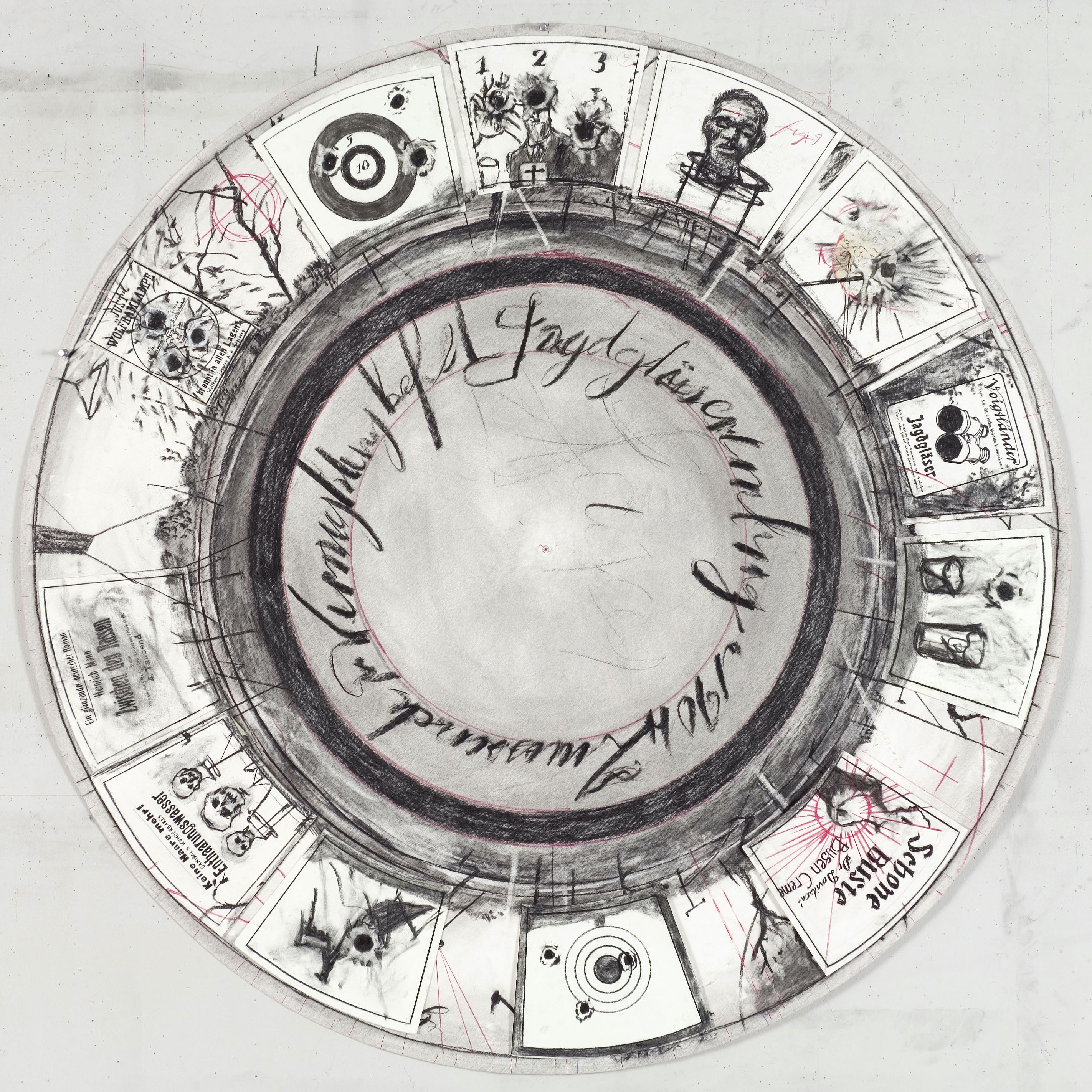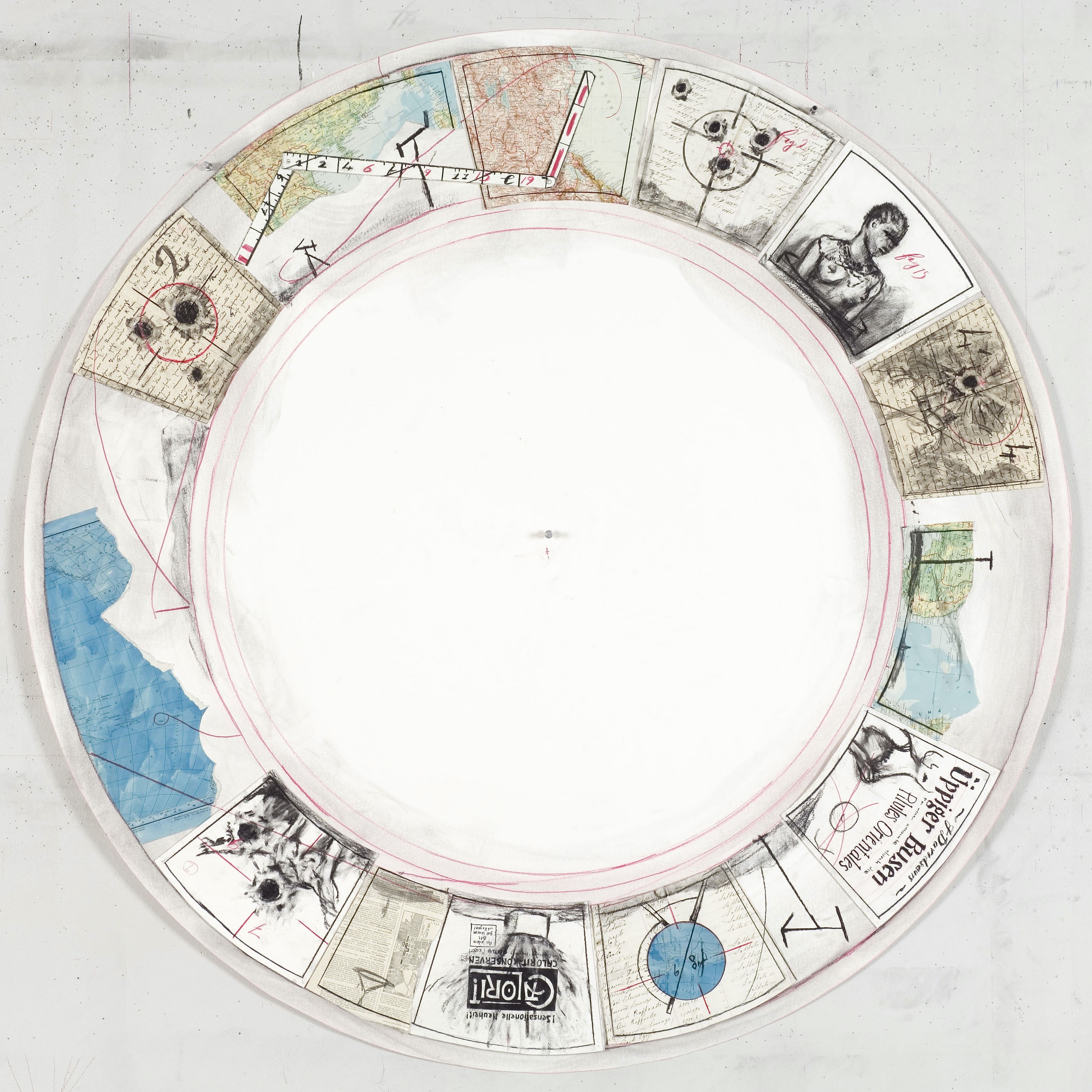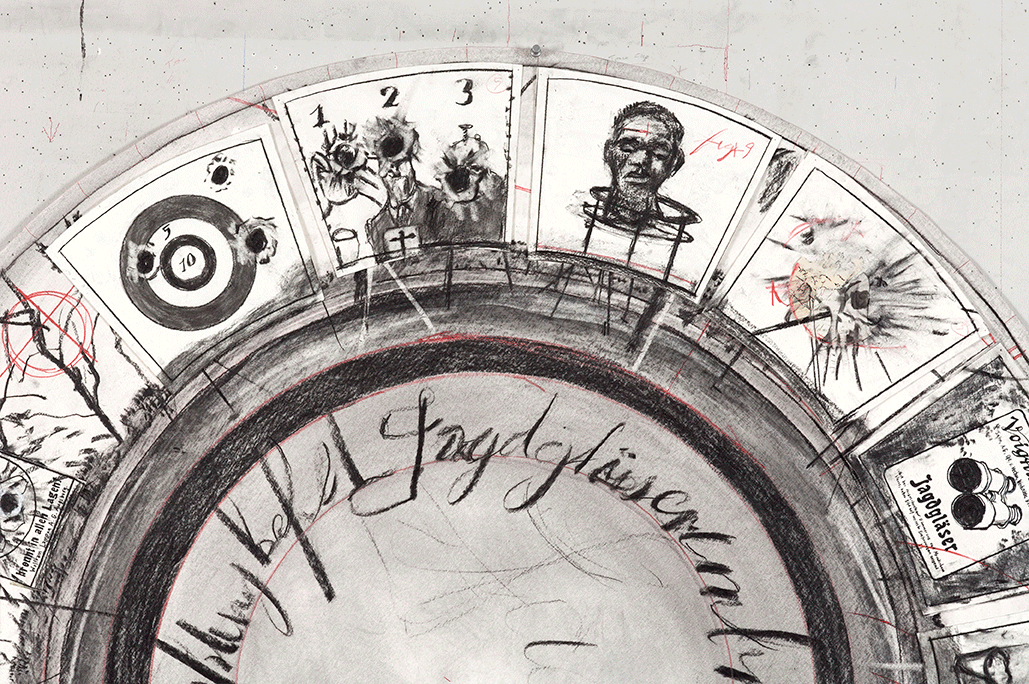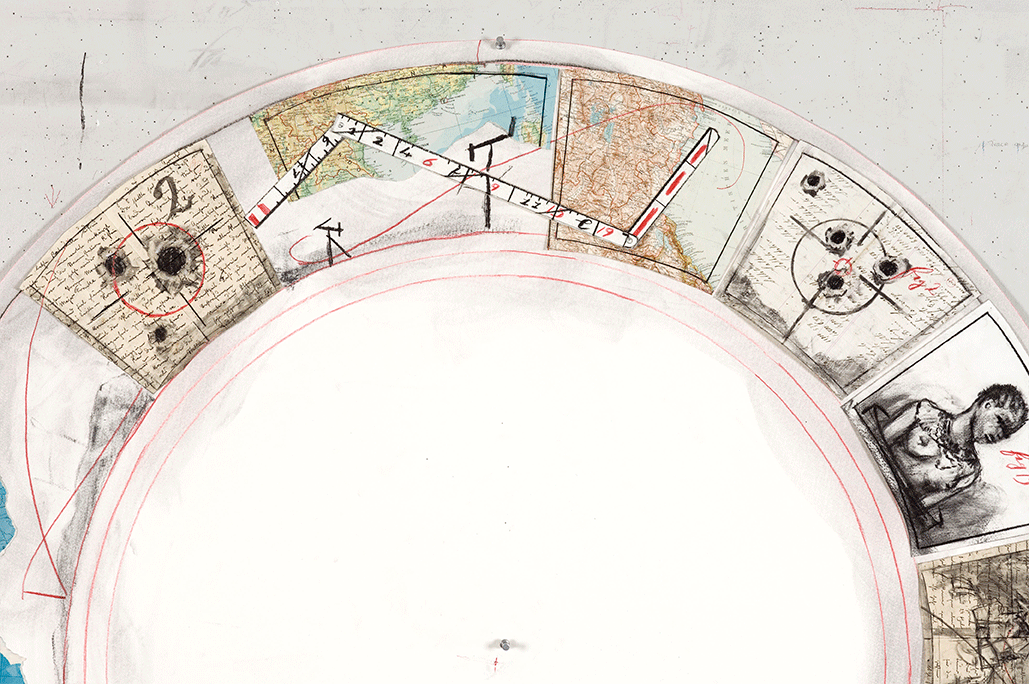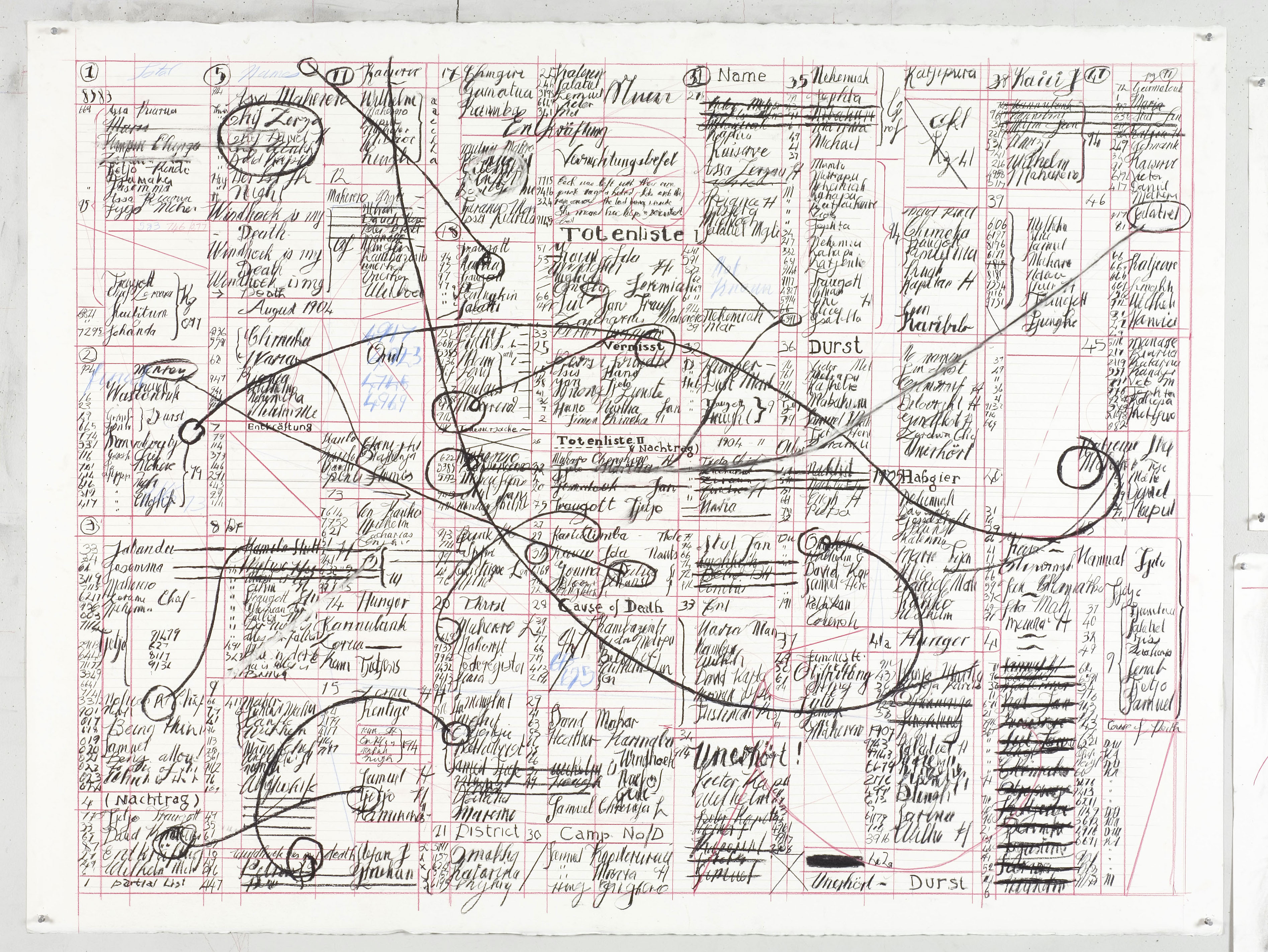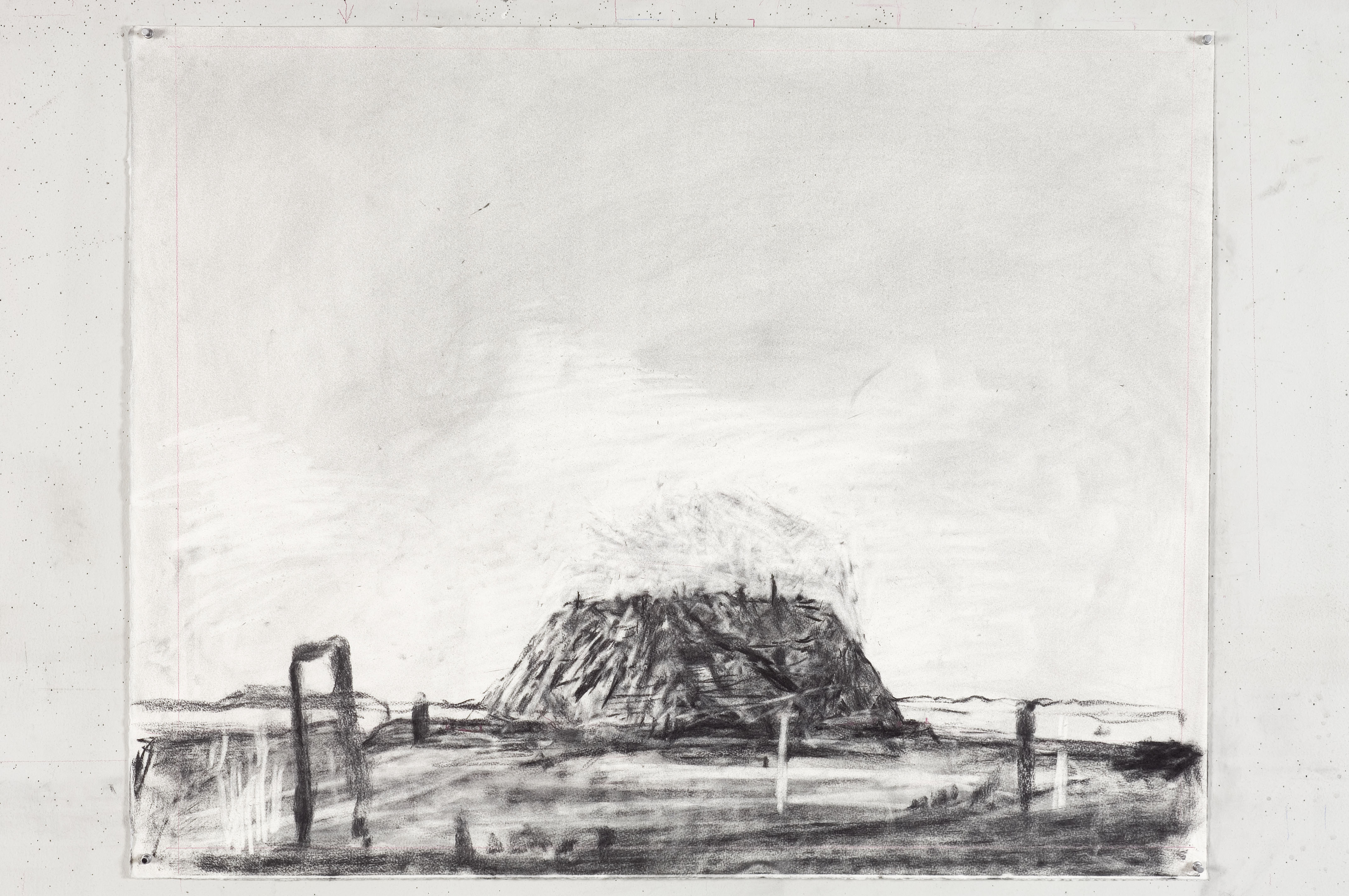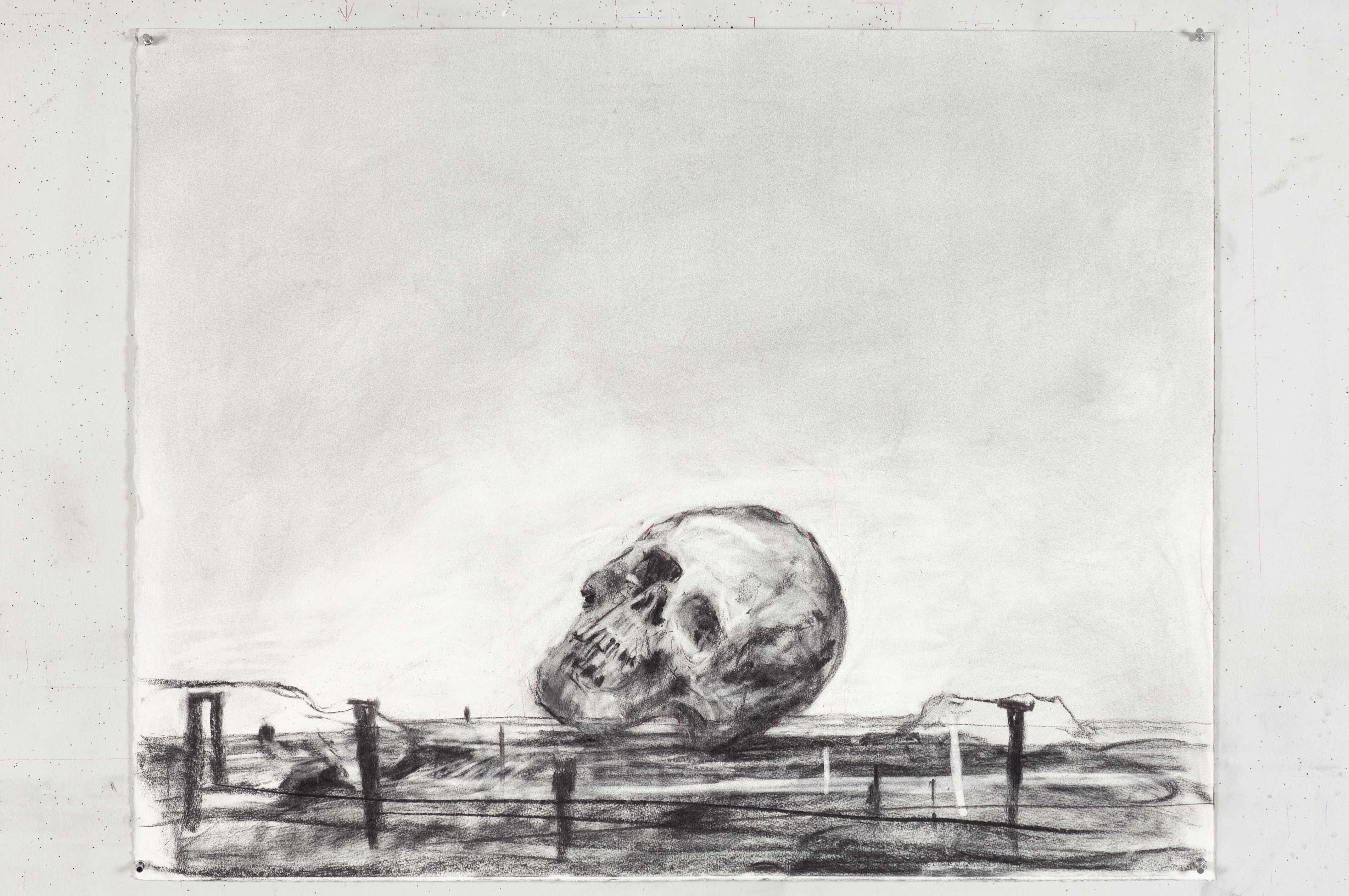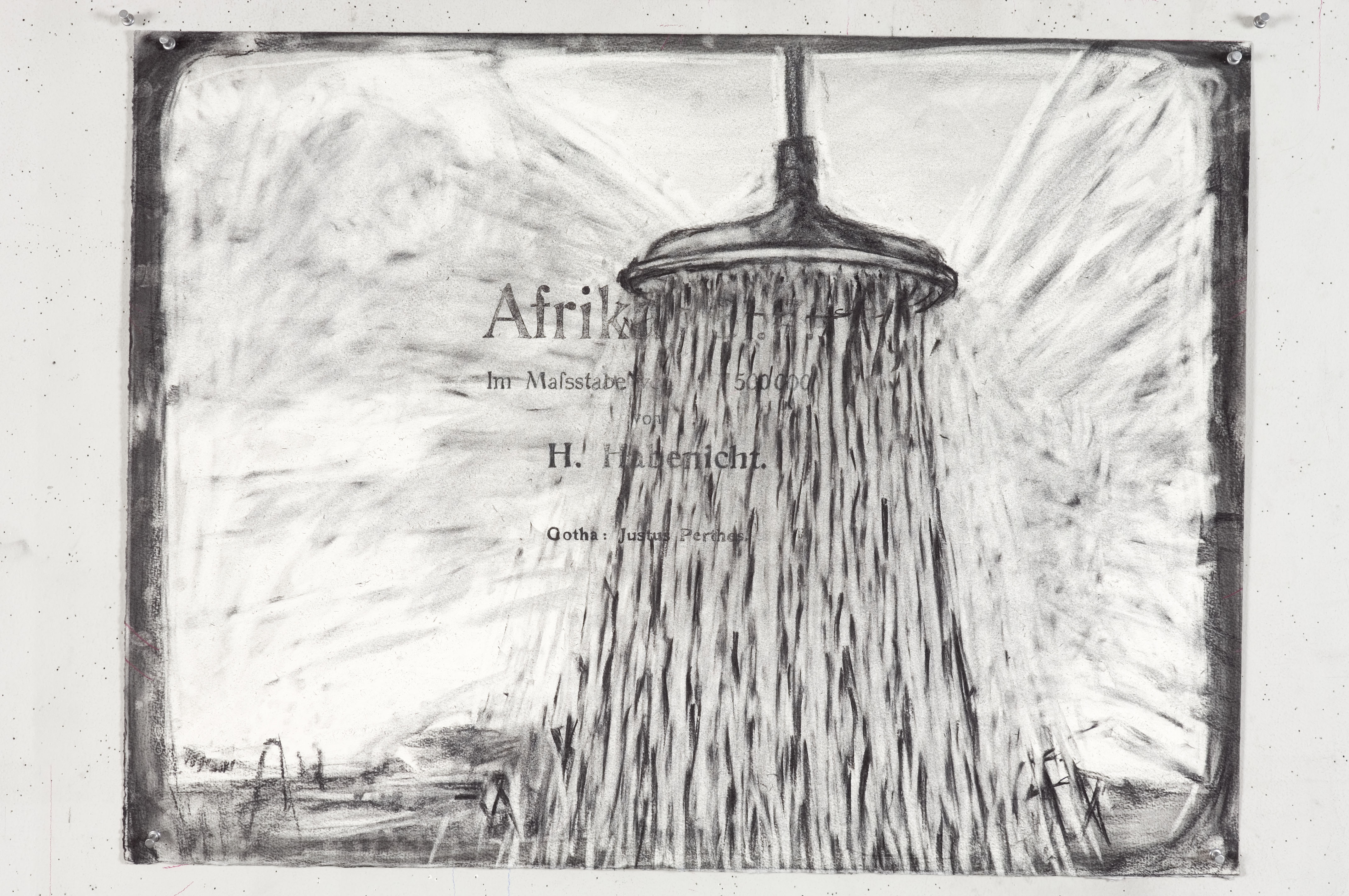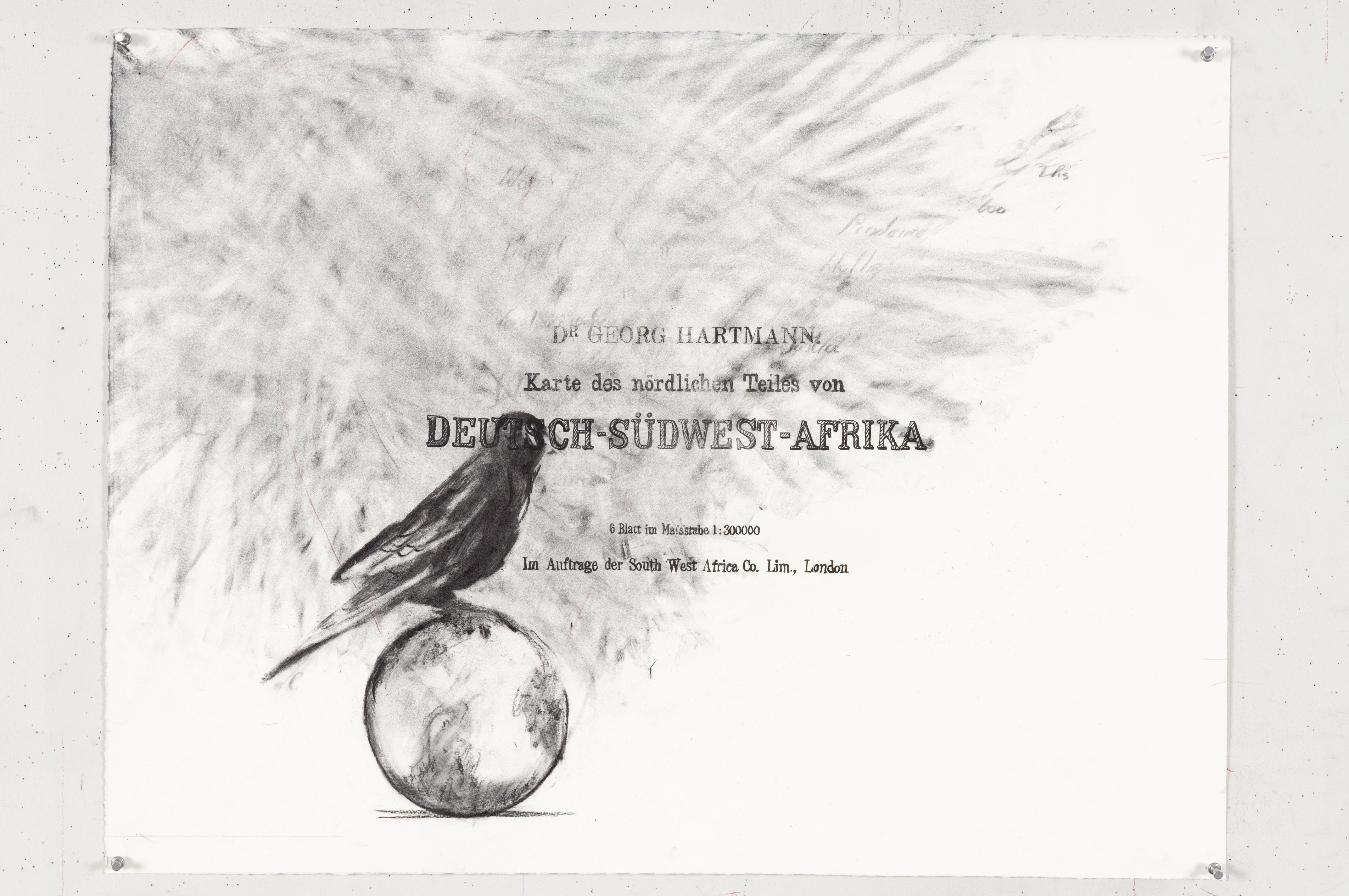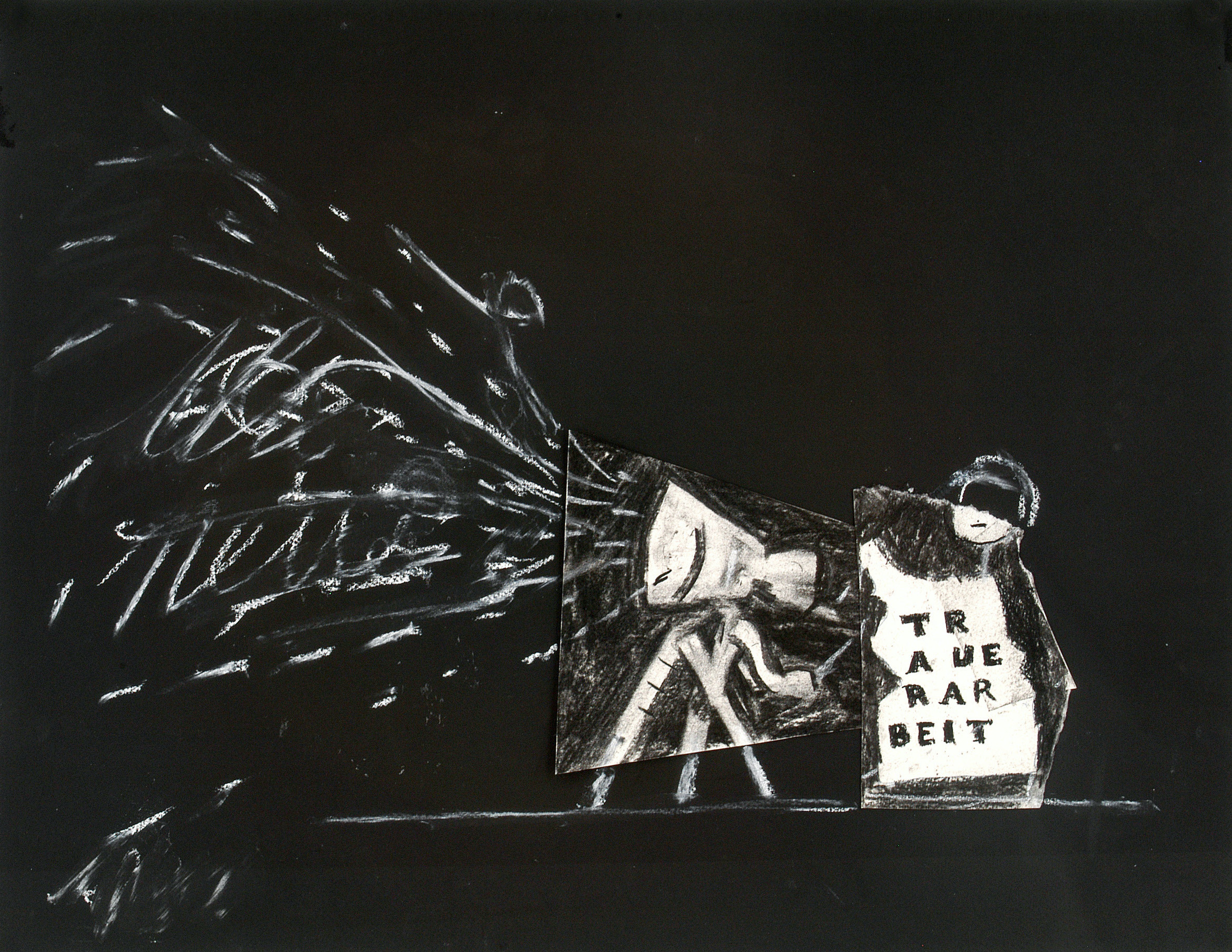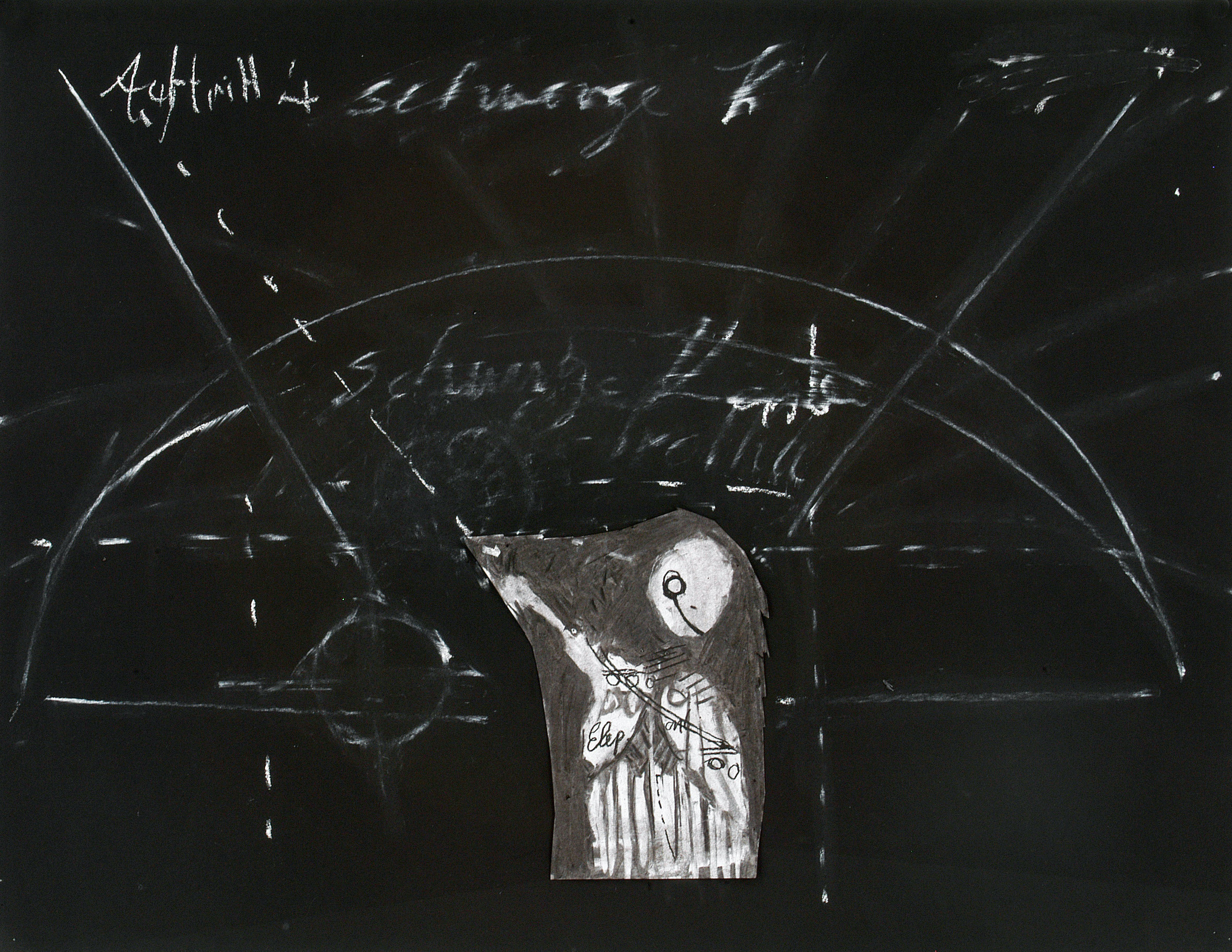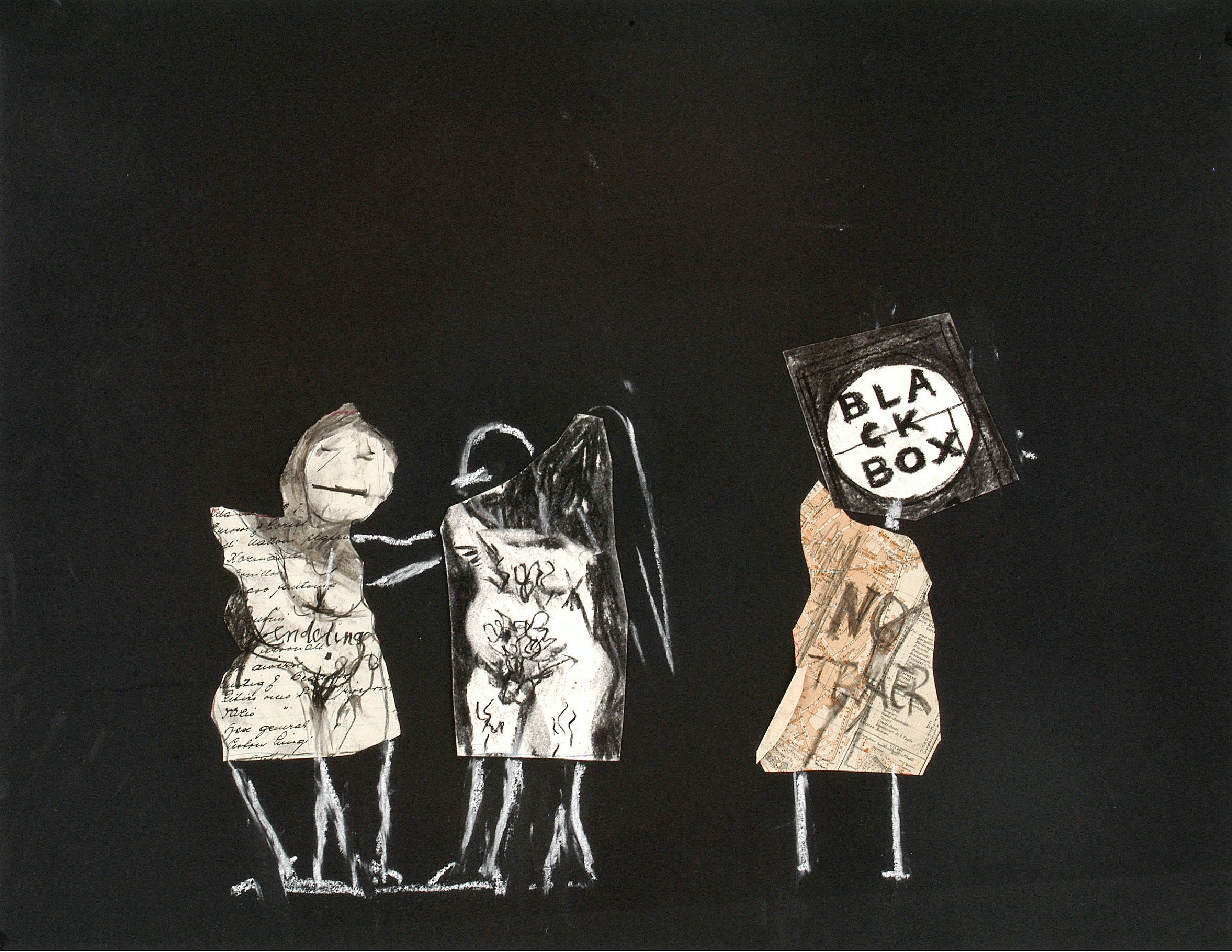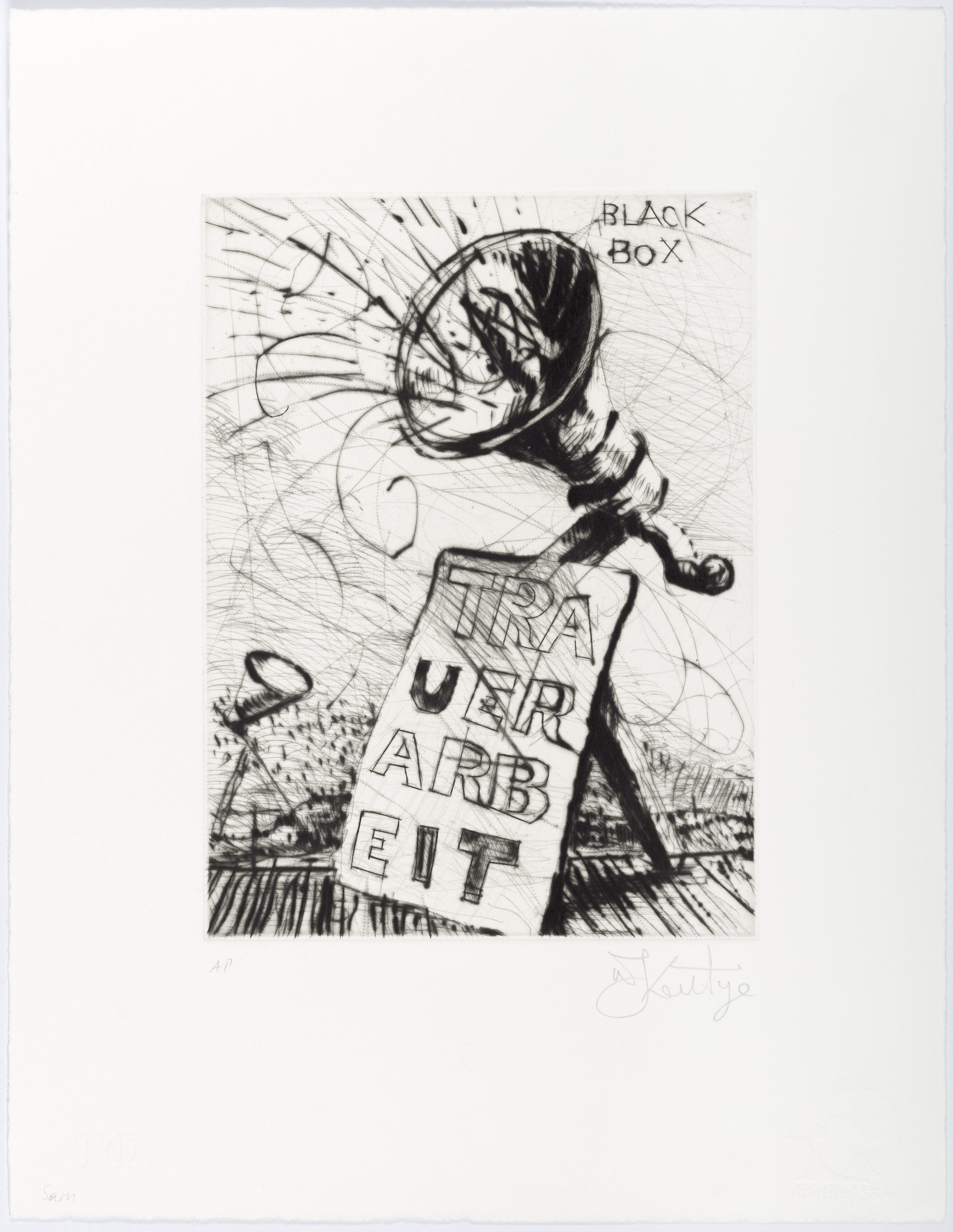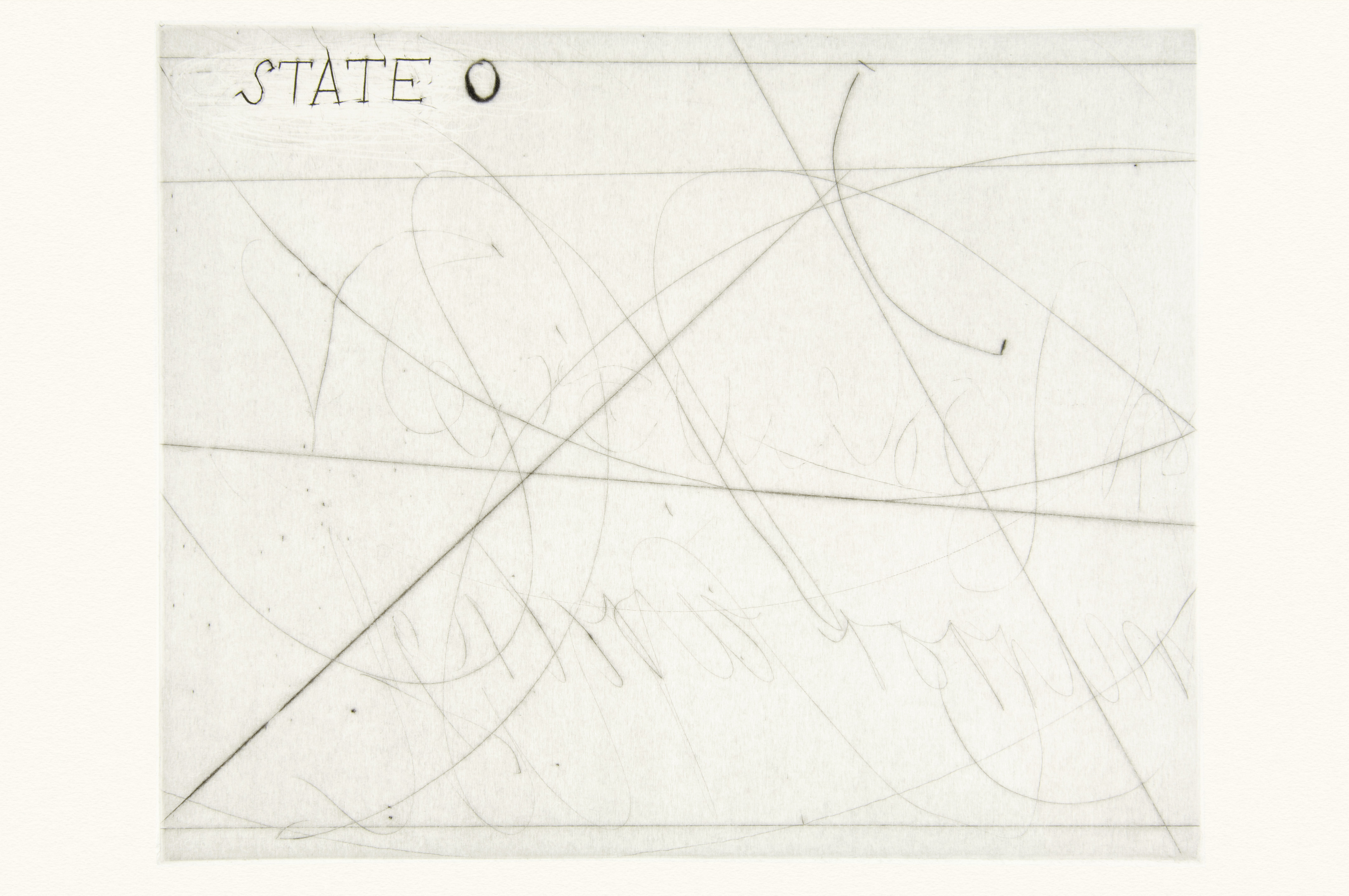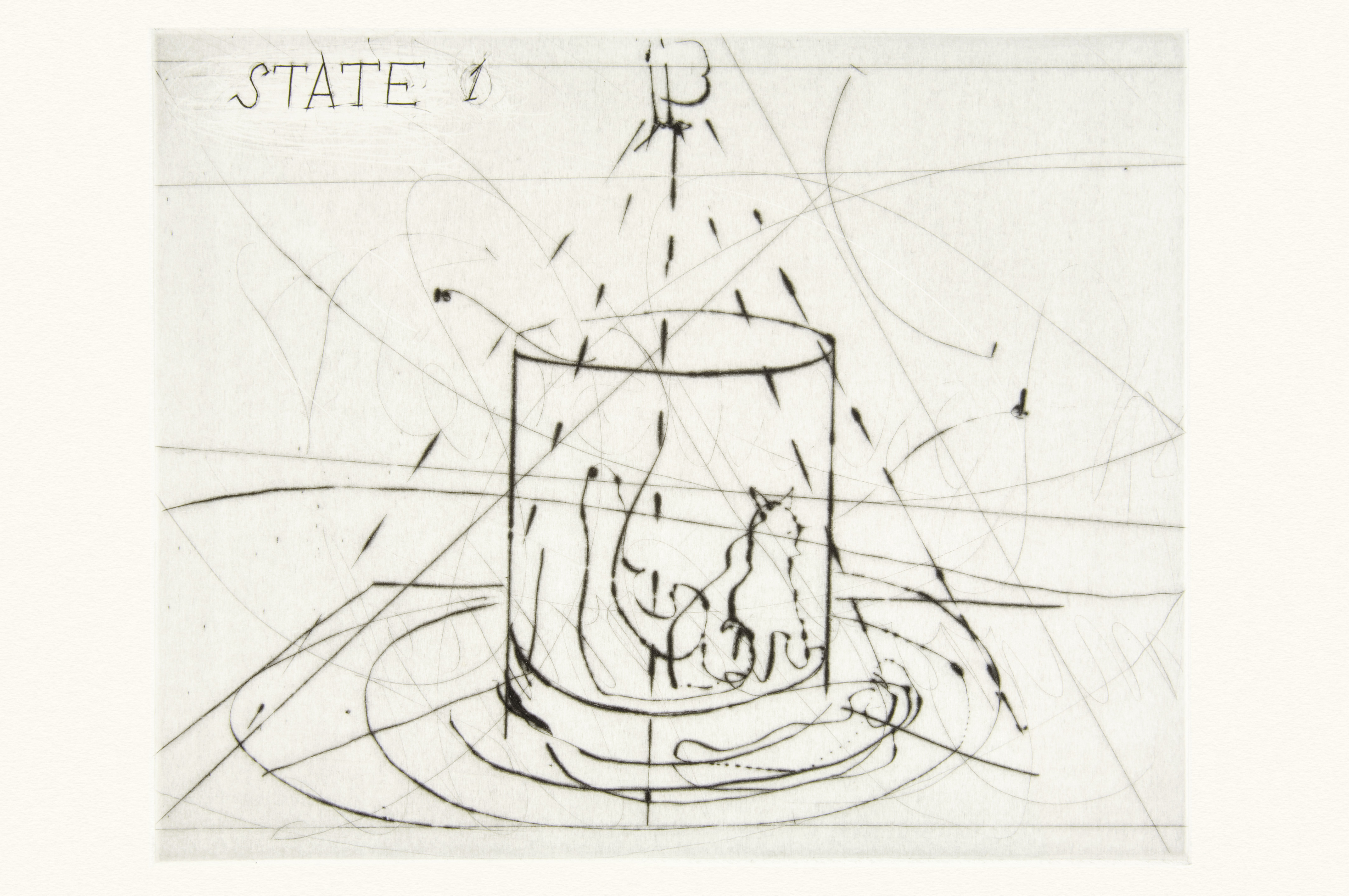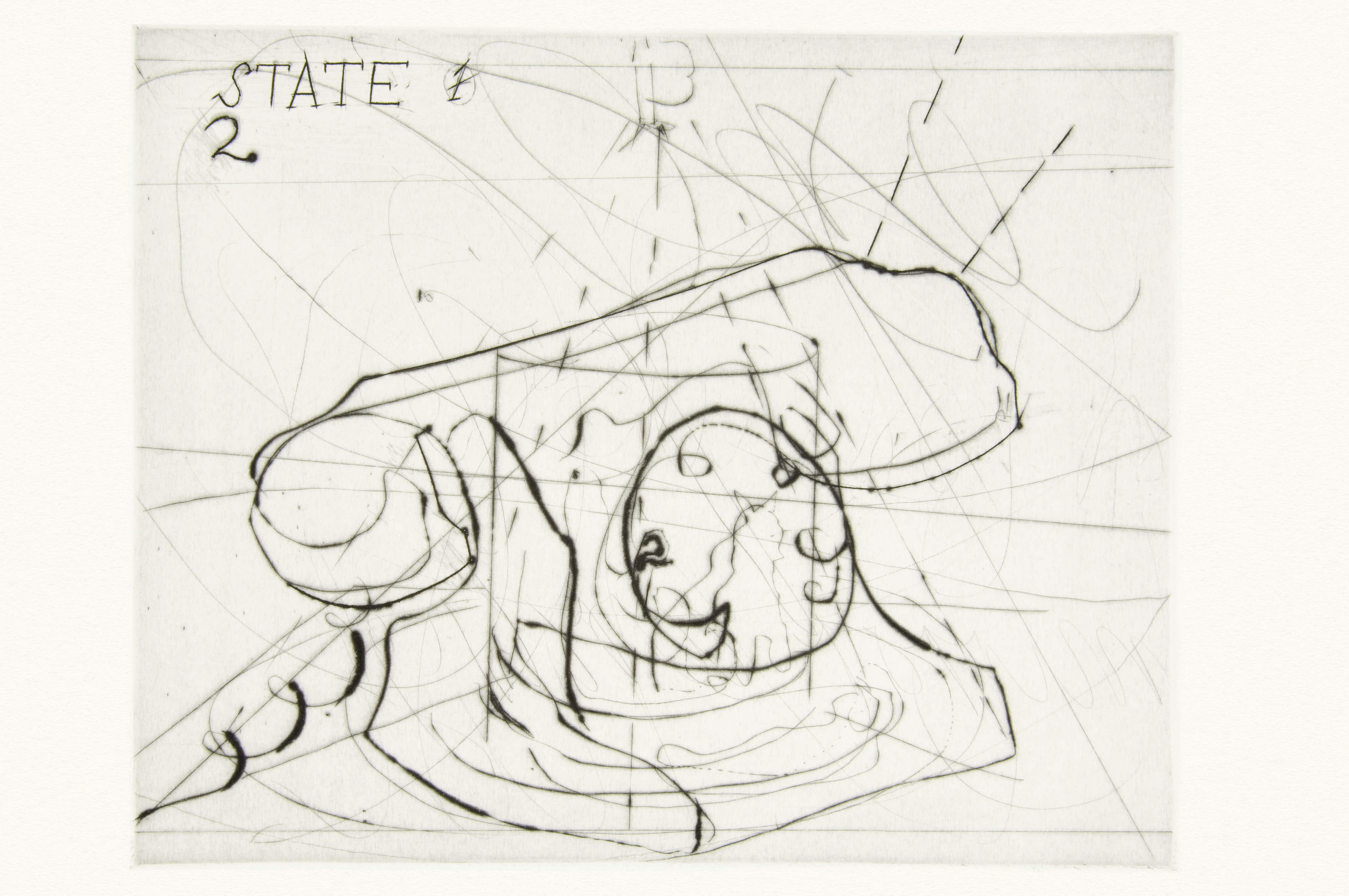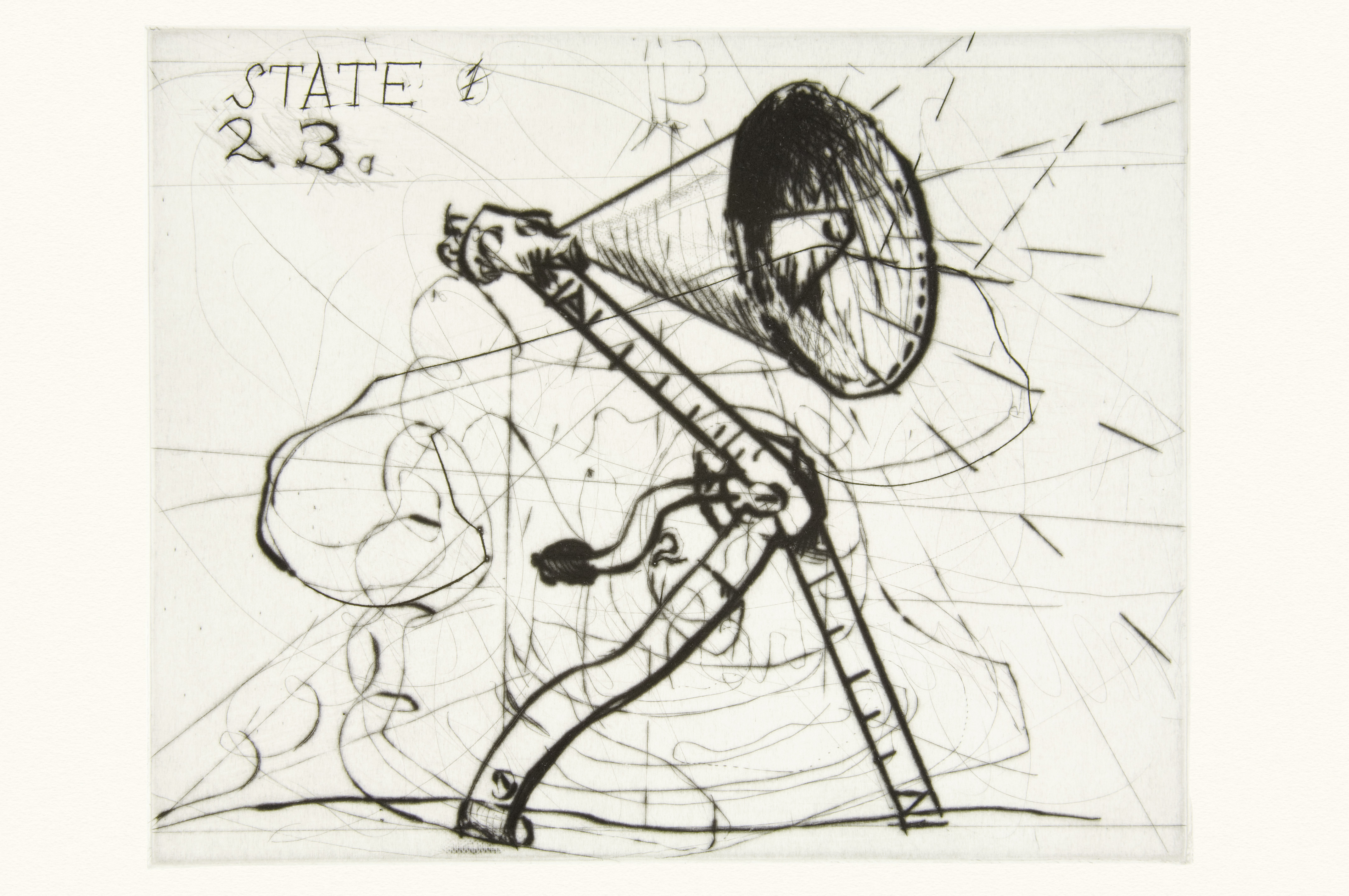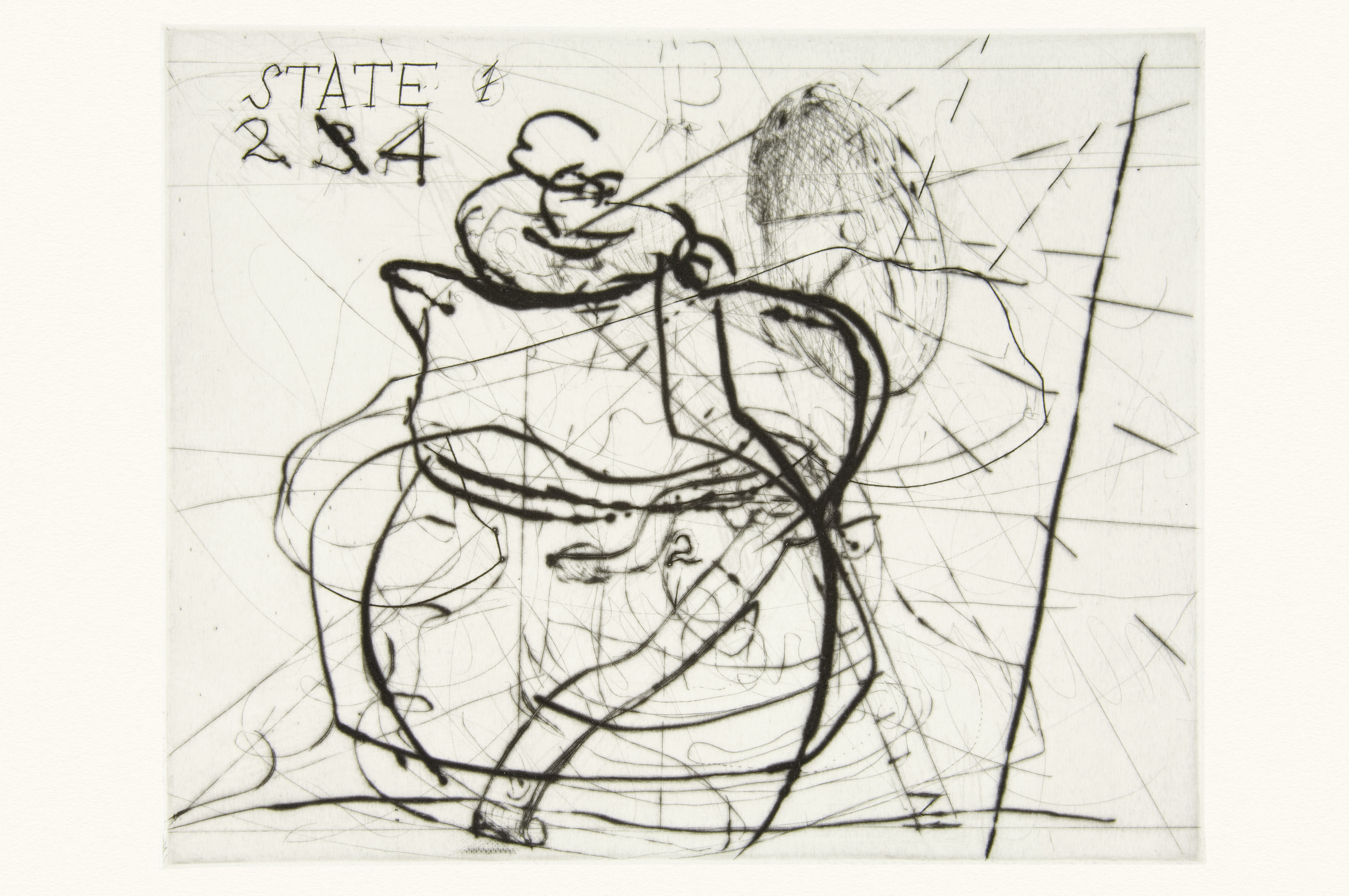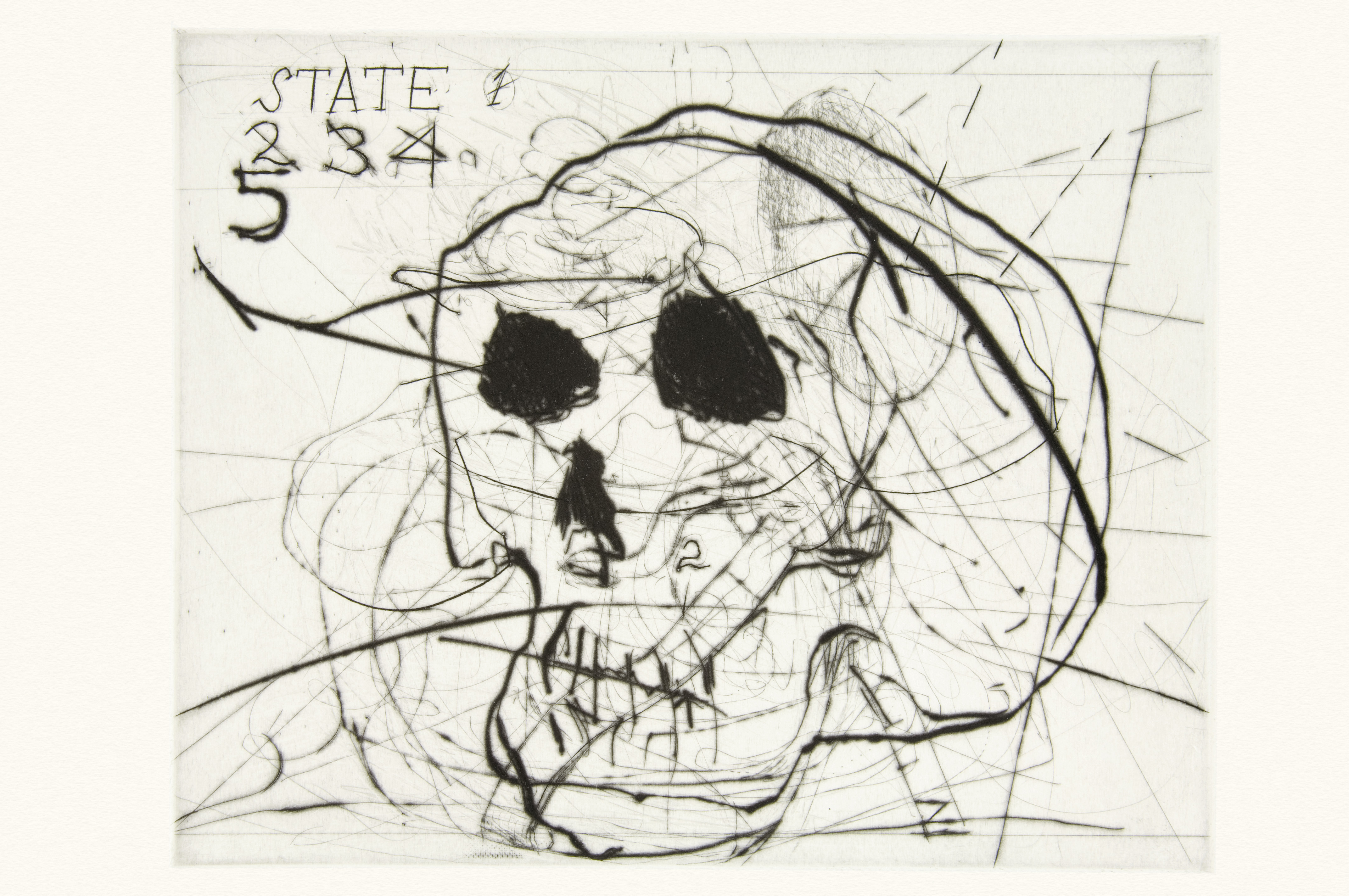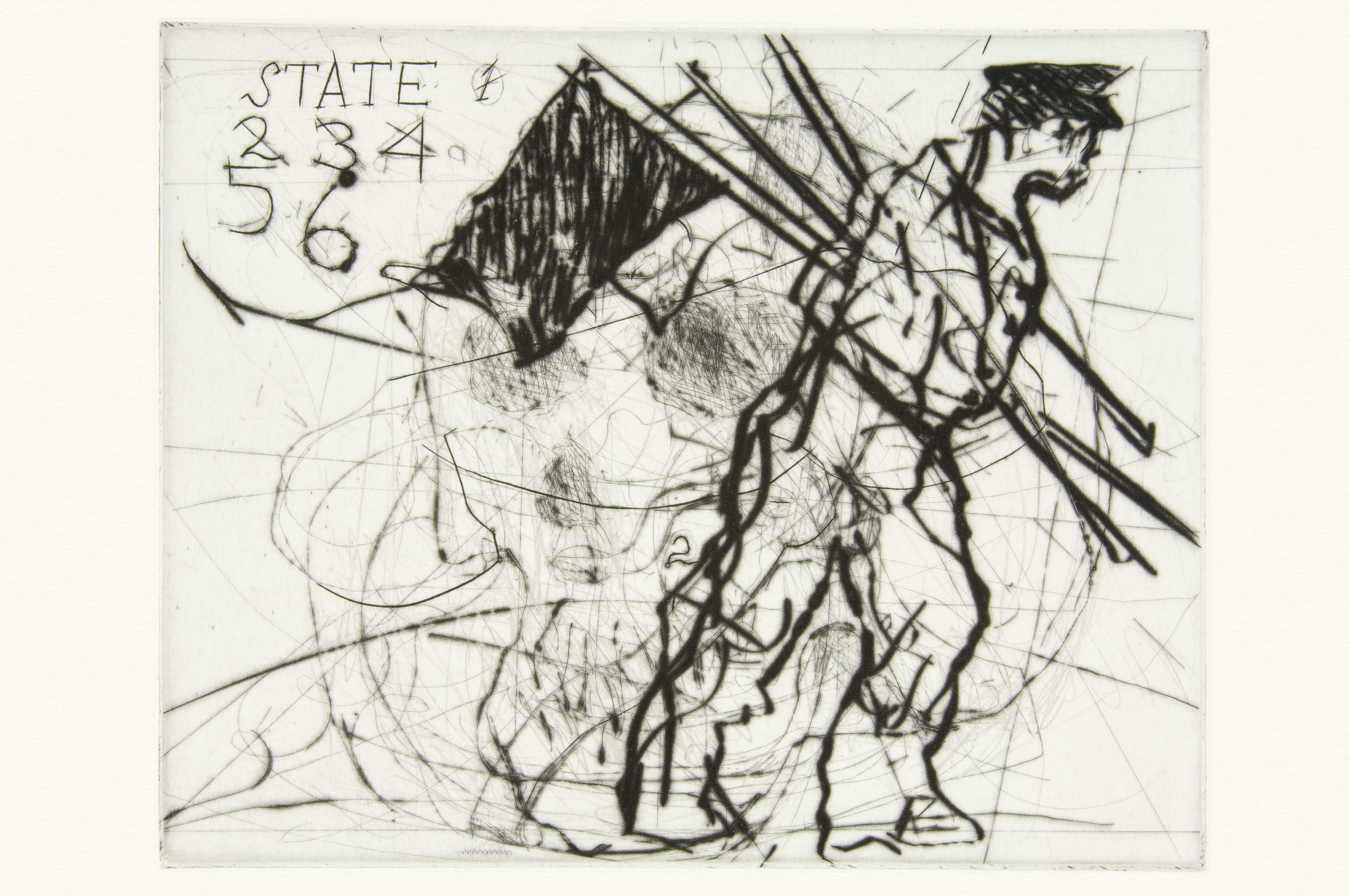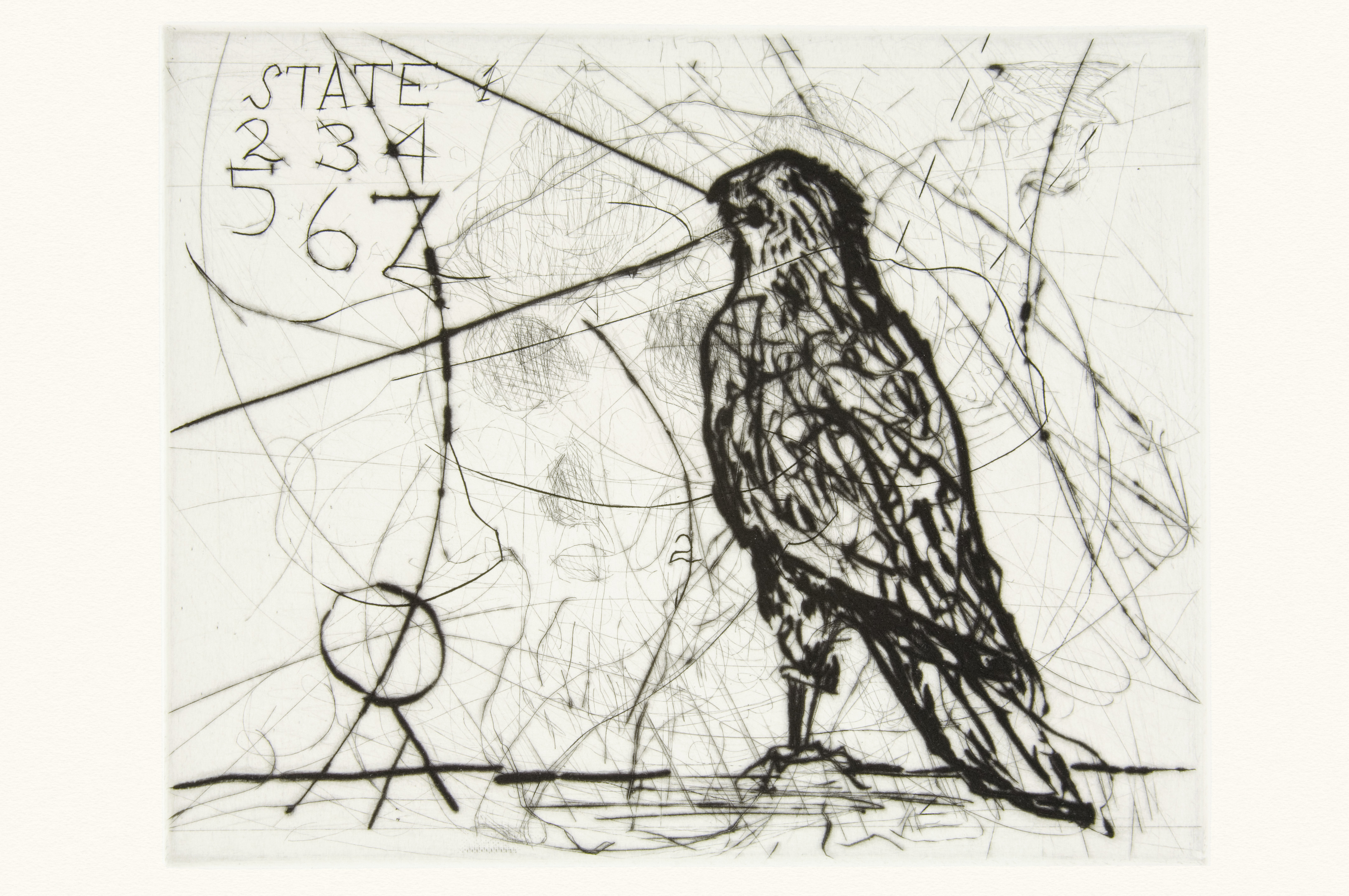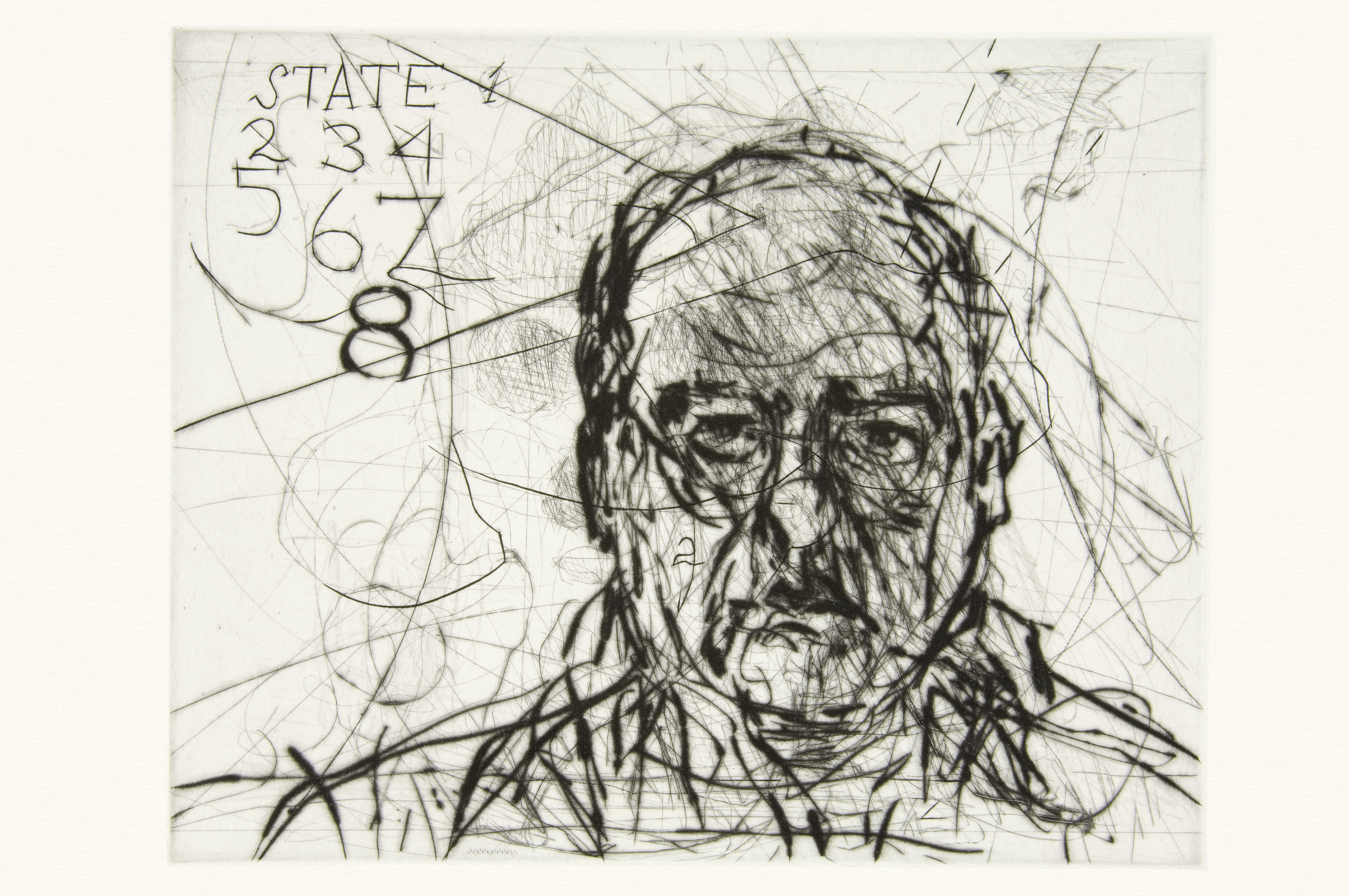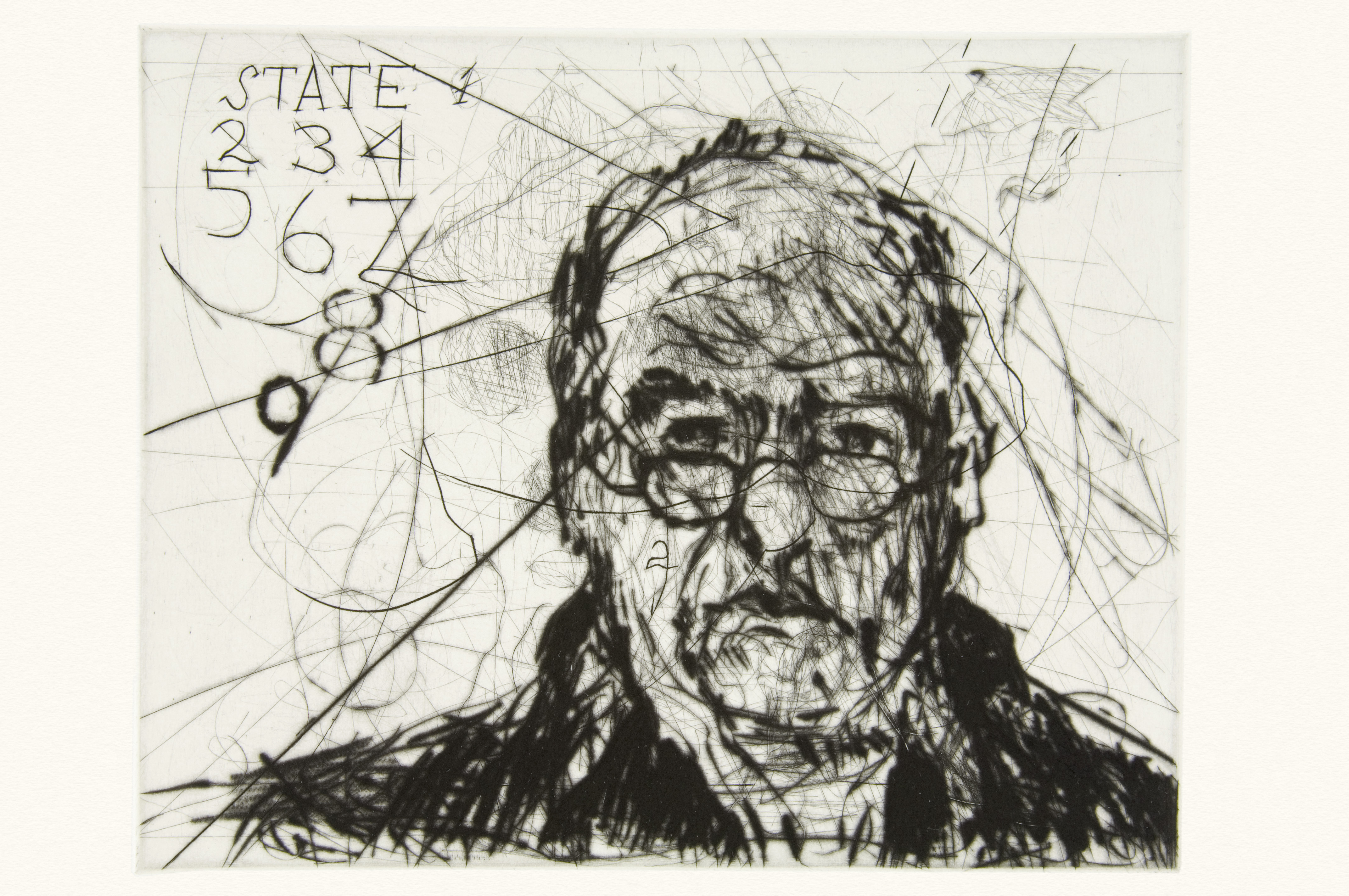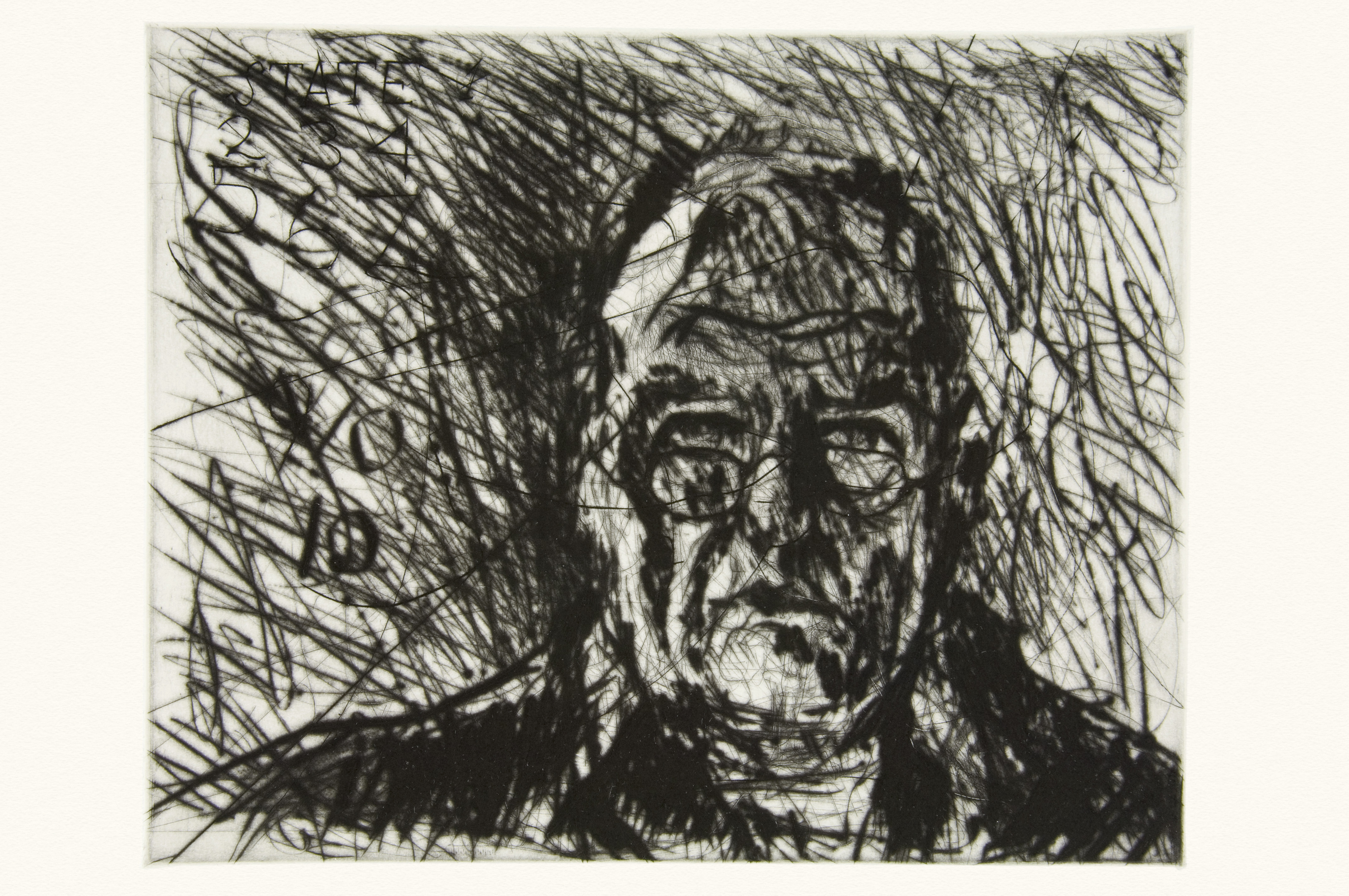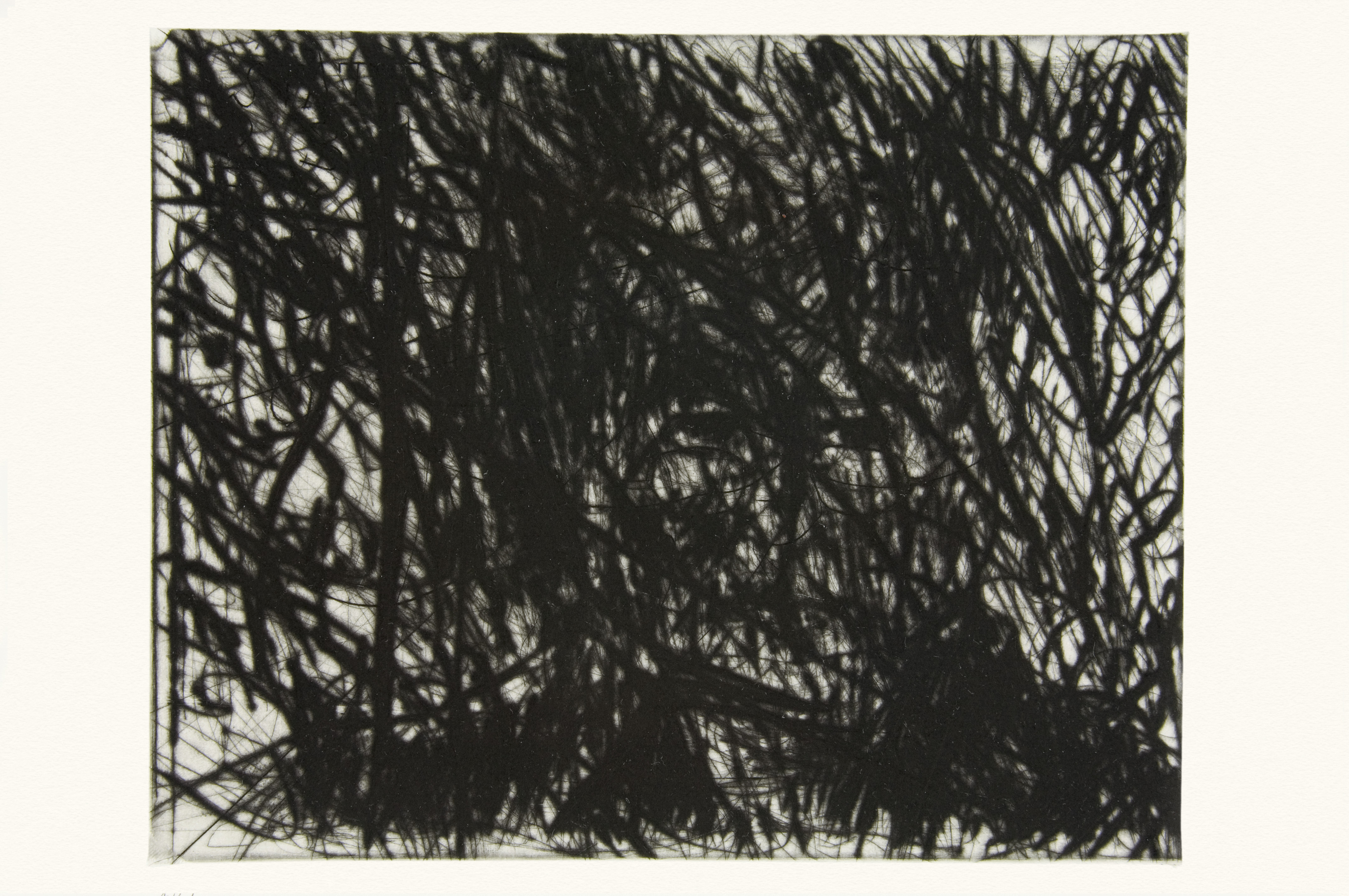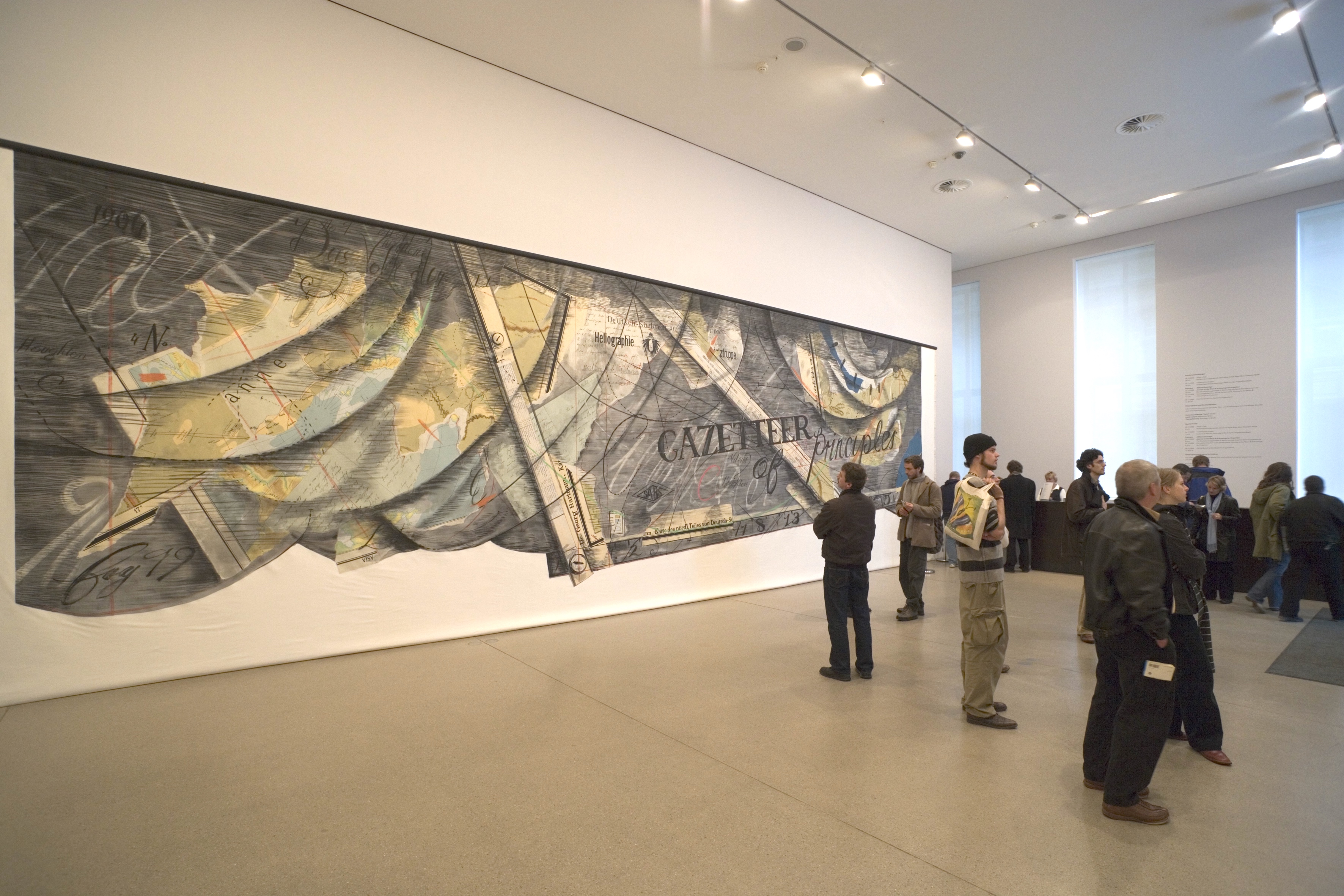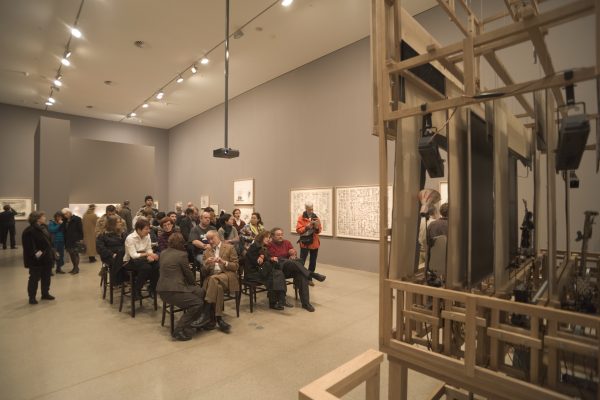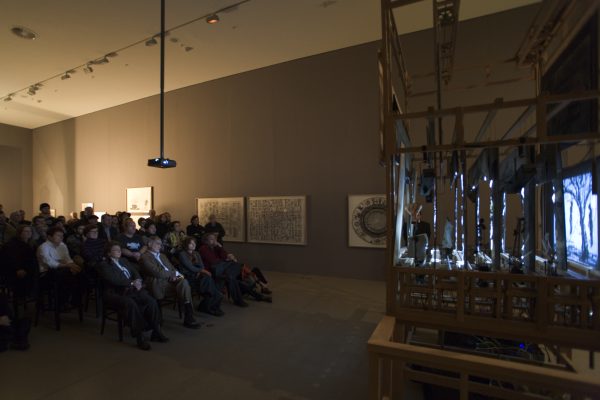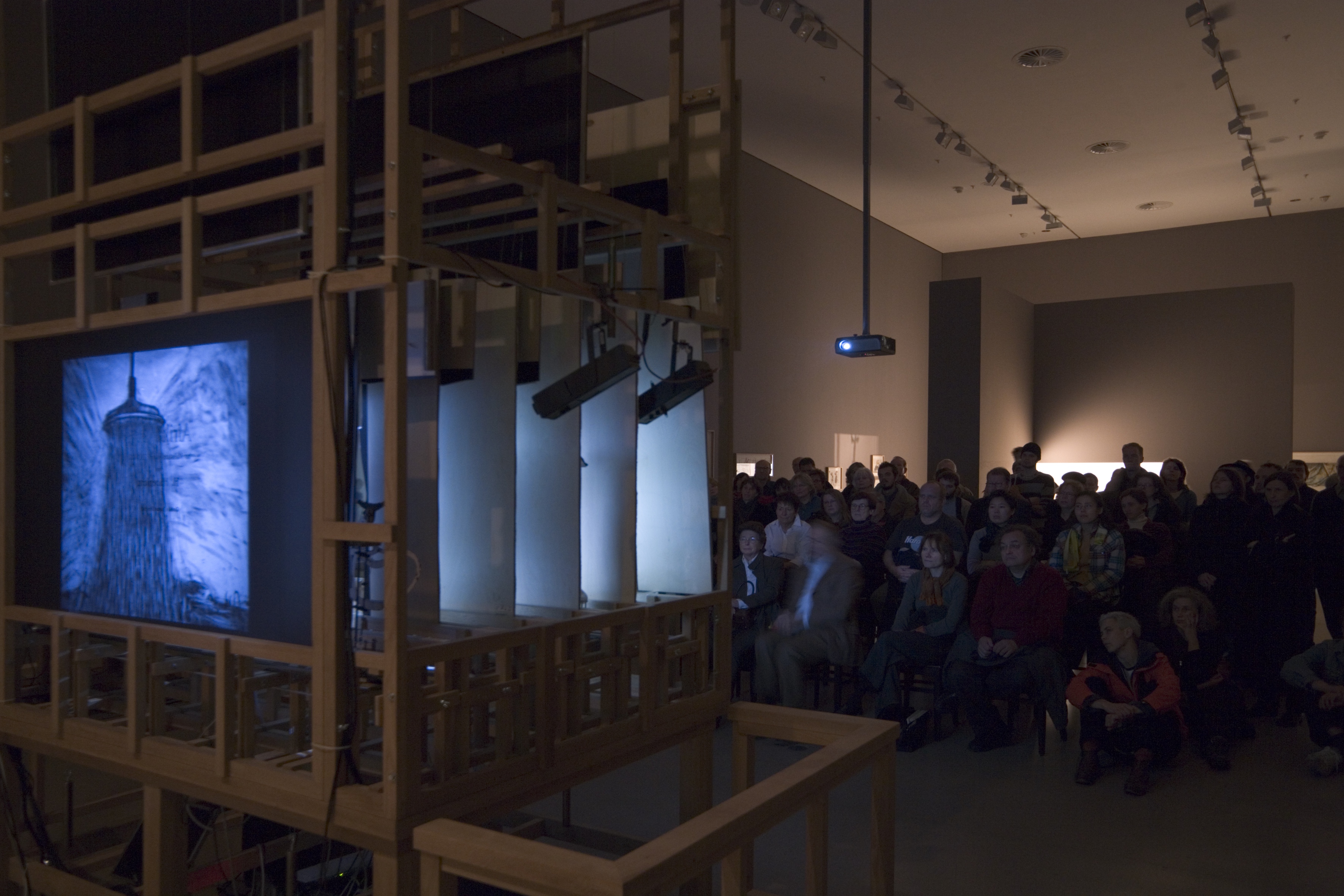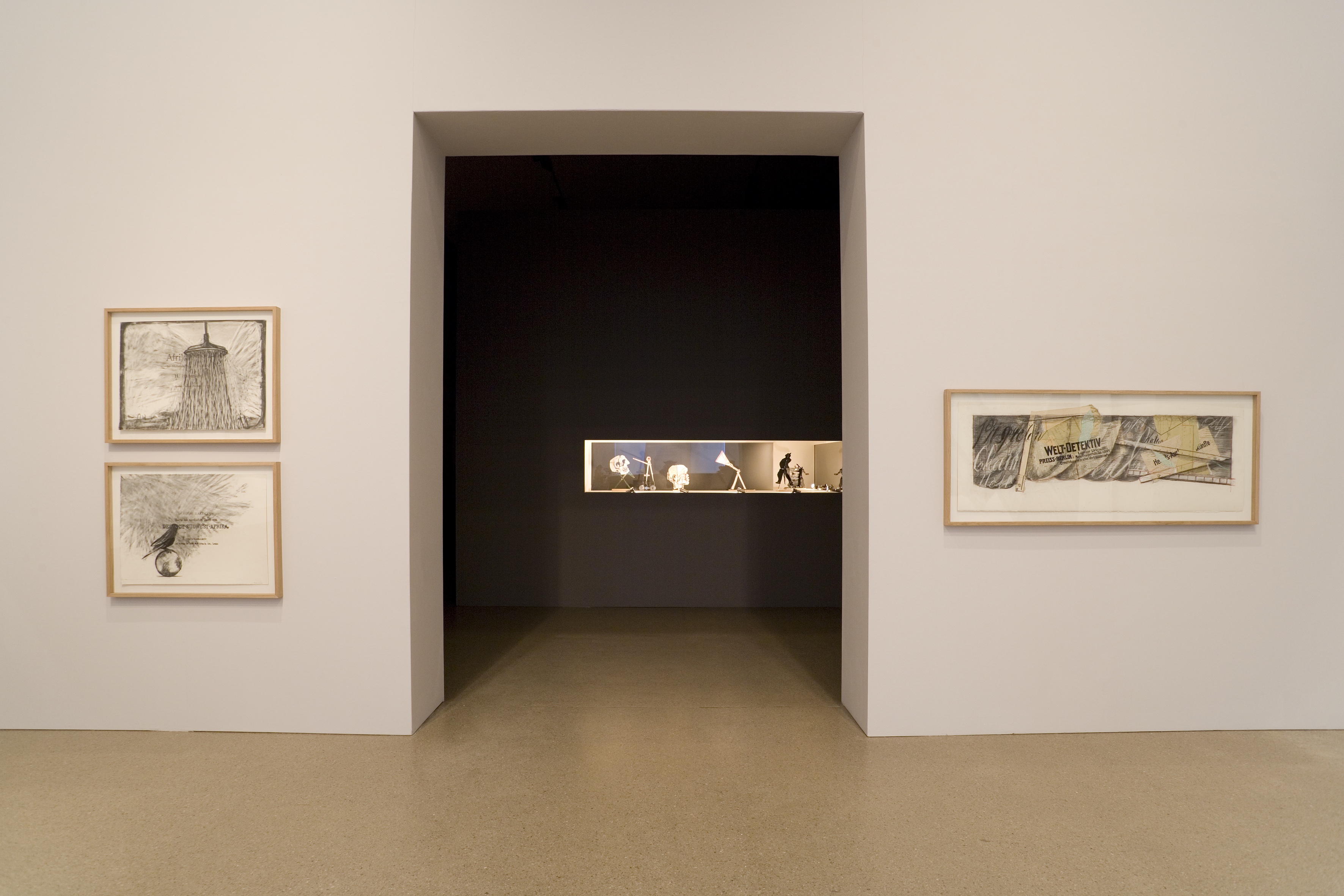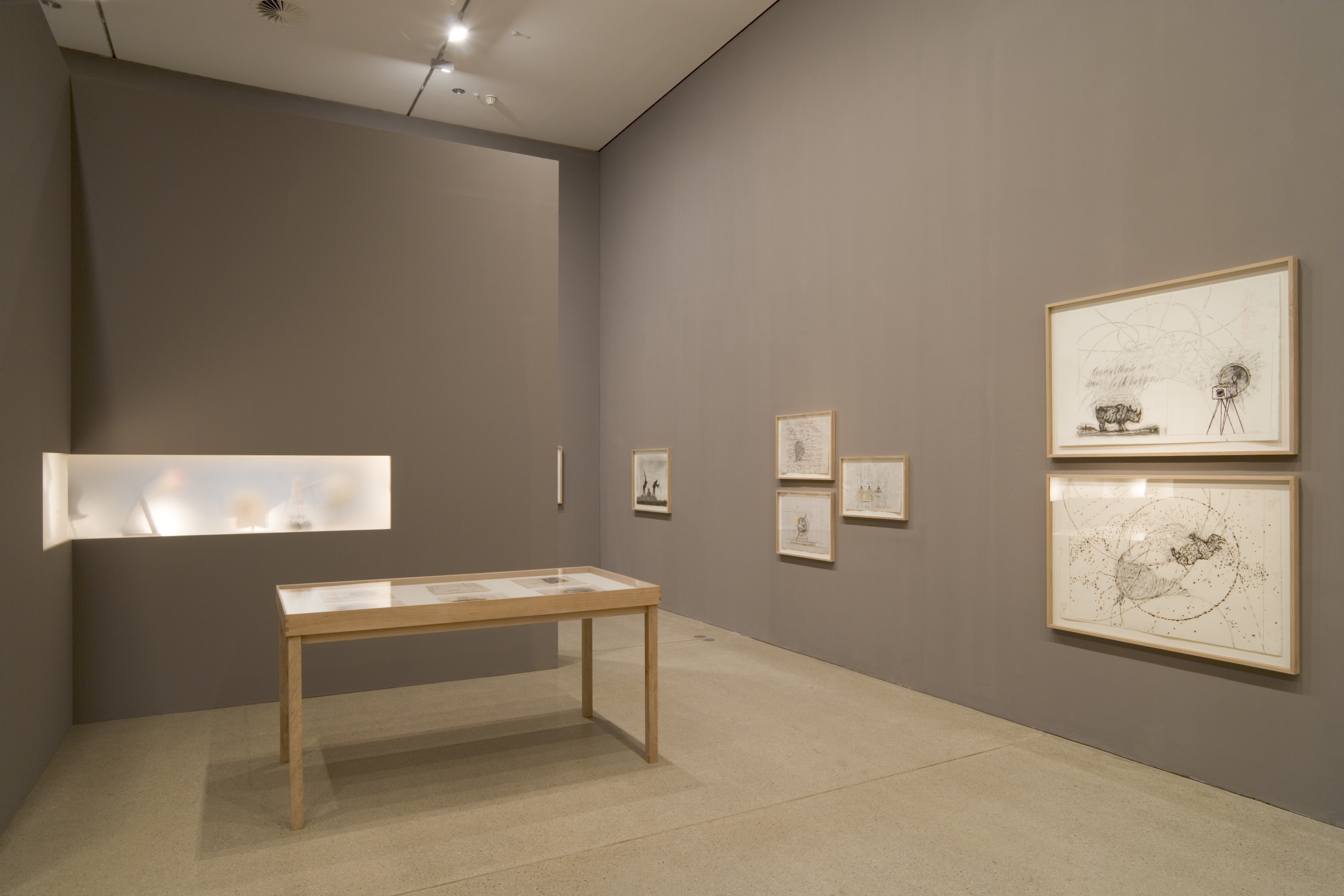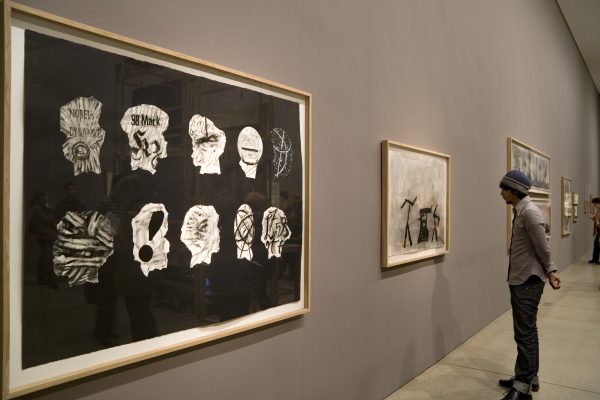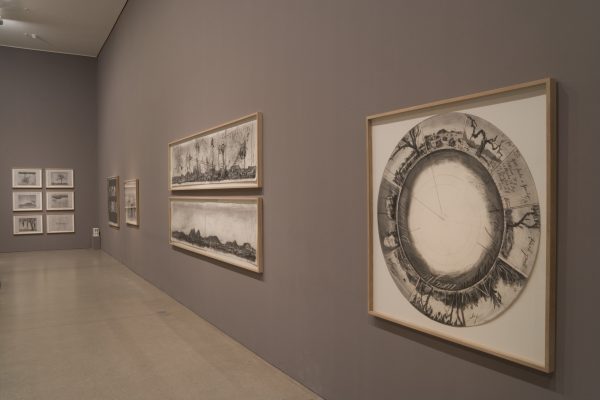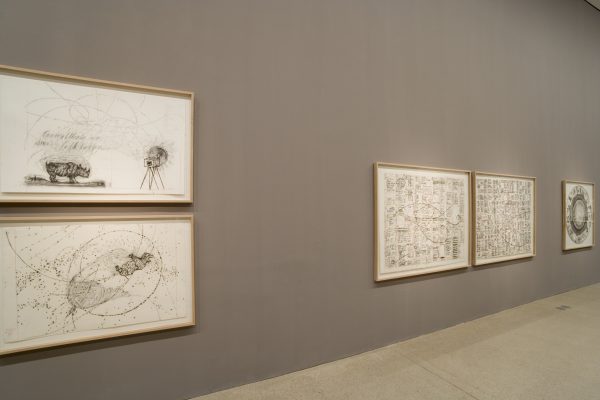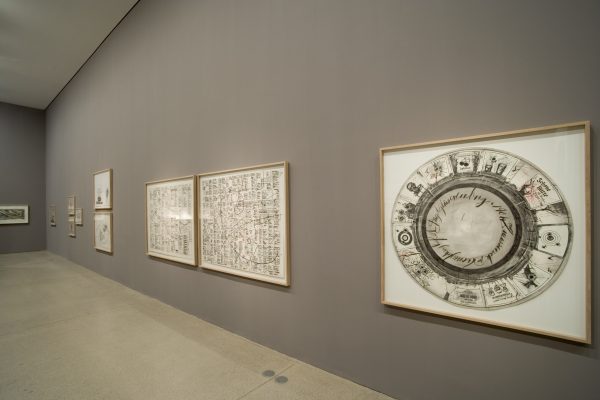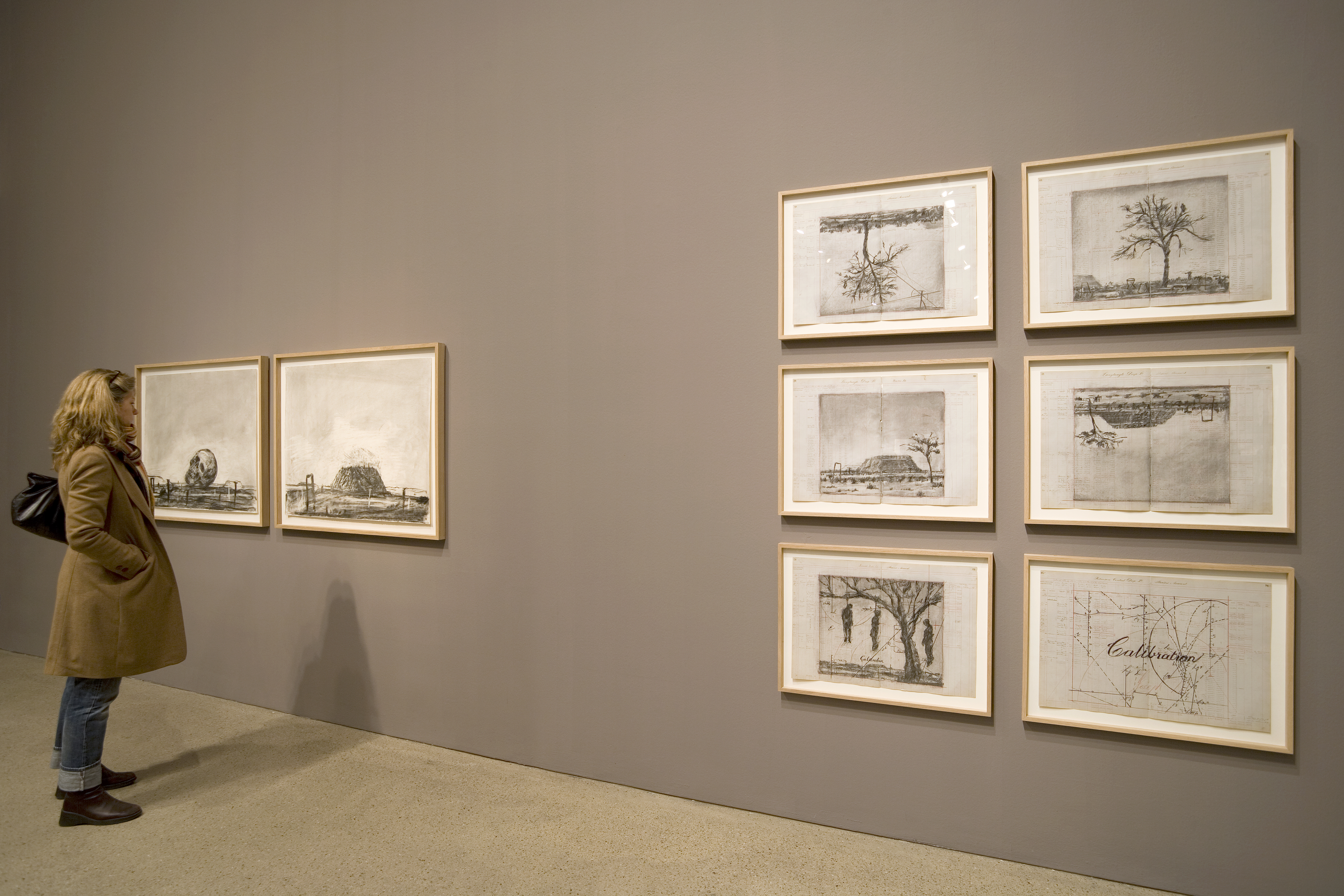Between the Lens and the Eyepiece
If we were in the belly of the camera, the empty stage is the working space for the optics of the camera. Where the three dimensional world is recreated on a smaller scale, in a flattened form. The tradition of baroque flat scenery, arranged in a perspective from the proscenium to the back of the stage put me in mind of the layers in a bellows of an old camera – also reminded me of the flattening of planes of distance one sees in binoculars – a sort of quantum perspective, depth given by a series of jumps of flat planes.
-
+ Credits
Black Box / Chambre Noire
2005
Animated 35 mm film transferred to video, projected front and back onto model theater with drawings and mechanical puppets
Musical composition
Philip Miller
Mechanical Design
Jonas Lundquist
Singers
Alfred Makgalemele, Vevangua Muuondjo
Musical recordings in Namibia
Minette Mans, Philip Miller
Programming for mechanical objects
Ronald Halgren
Editing
Catherine Meyburgh
Lighting
Ann-Charlotte Fogelström
Black Box / Chambre Noire was co-commissioned by Deutsche Bank and Solomon R. Guggenheim Foundation for the exhibition William Kentridge: Black Box / Chambre Noire at Deutsche Guggenheim
October 29, 2005 – January 15, 2006
Making
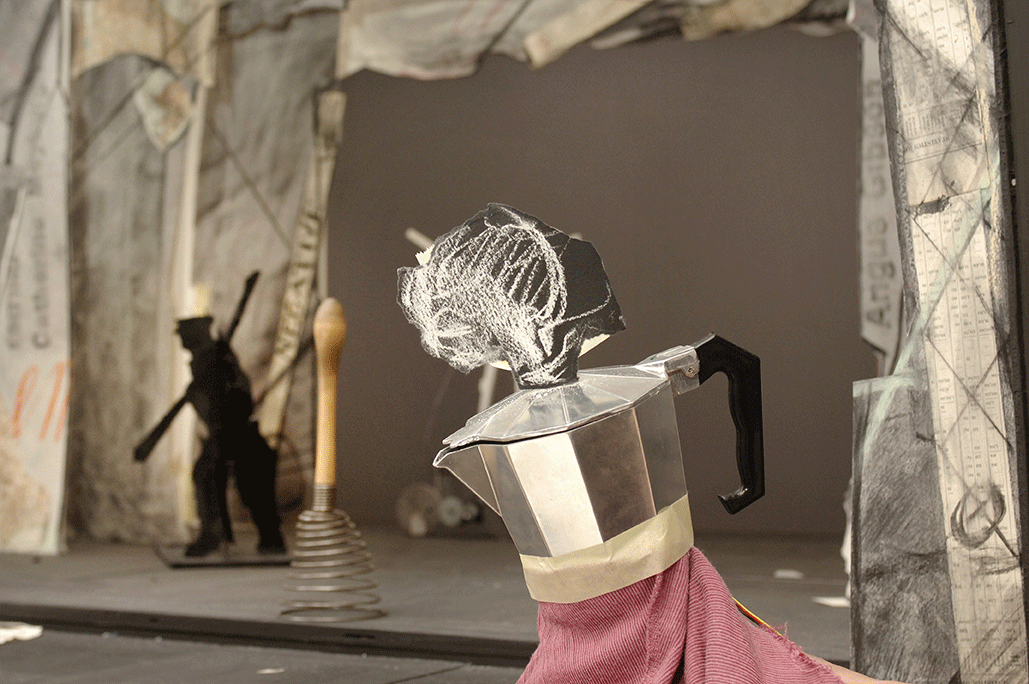
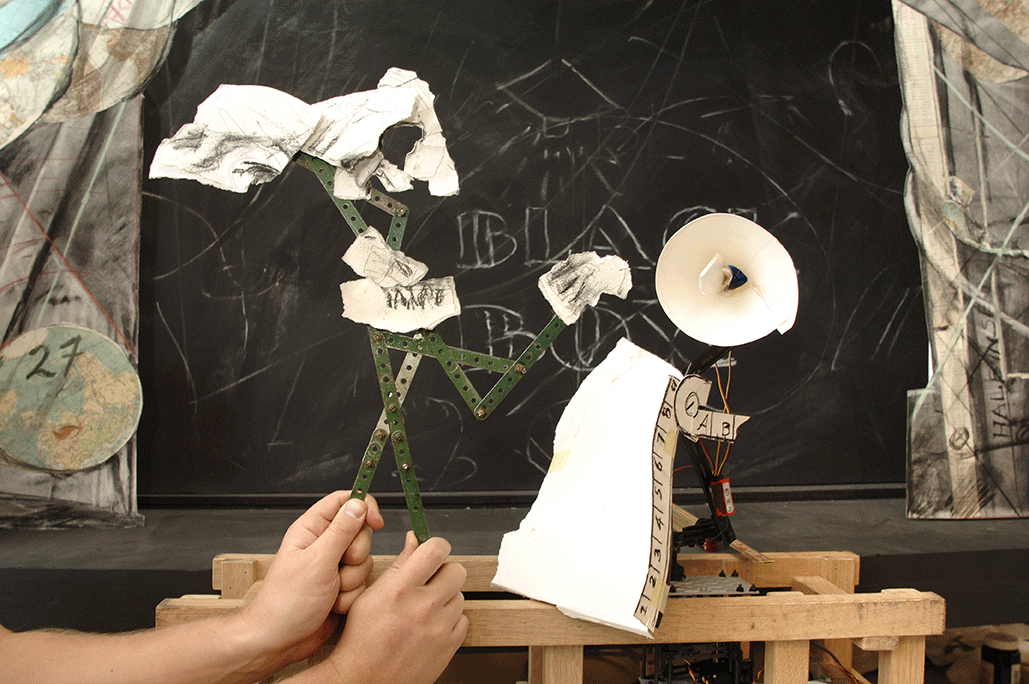
I’m playing with three sets of associations in Black Box. The first is the black box of the theater. The installation consists of a model of a theater, which houses projections and characters. The characters are small automatons—mechanized (and not necessarily anthropomorphic) objects that perform, together with the projections, within the theater space. So the first reference is to the “black box” of the performance realm.
The second association of the black box is the chambre noir—the central chamber of a camera between the lens and the eyepiece, into which light enters and where a kind of meaning is created. Here, the infinite possibilities of the outside world come in, but a single image is chosen, fixed upon the plane.
The third reference is the voice data recorder that is used to trace the last moments before an airline disaster. And the disaster I will be referring to—although I will not necessarily describe it nor didactically enumerate its stages—is the German massacre of the Herero people in Southwest Africa from 1903 to 1907.
Black Box / Chambre Noire
Film installation with model theatre, drawings, mechanical puppets and projections
While the table-top size of the miniature theatre is many times smaller than a real theatre it is also, in shape, similar to but several times larger than a box camera. One of the associations of Black Box is the chambre noire, the inside of a camera, the space between the lens and the eyepiece or film plane. The space where the light is inverted, captured. One image is separated and held through the strange optical, mechanical, chemical photographic process. The stage becomes camera, the images shown or played out like a record of photographs of the world outside the camera (or theatre).
Drawings
Sarastro, the high priest in Mozart’s Magic Flute guides the hero of the opera in his journey towards wisdom. As a symbol of the enlightenment, Sarastro combines all knowledge with all power. In the two hundred and fifteen years since Mozart wrote the opera we have come to realise what a toxic mixture this is: the combination of certainty and a monopoly of violence. The opera production looks at the enlightenment in its optimistic phase. Black Box/Chambre Noire examines one of its calamitous trajectories.
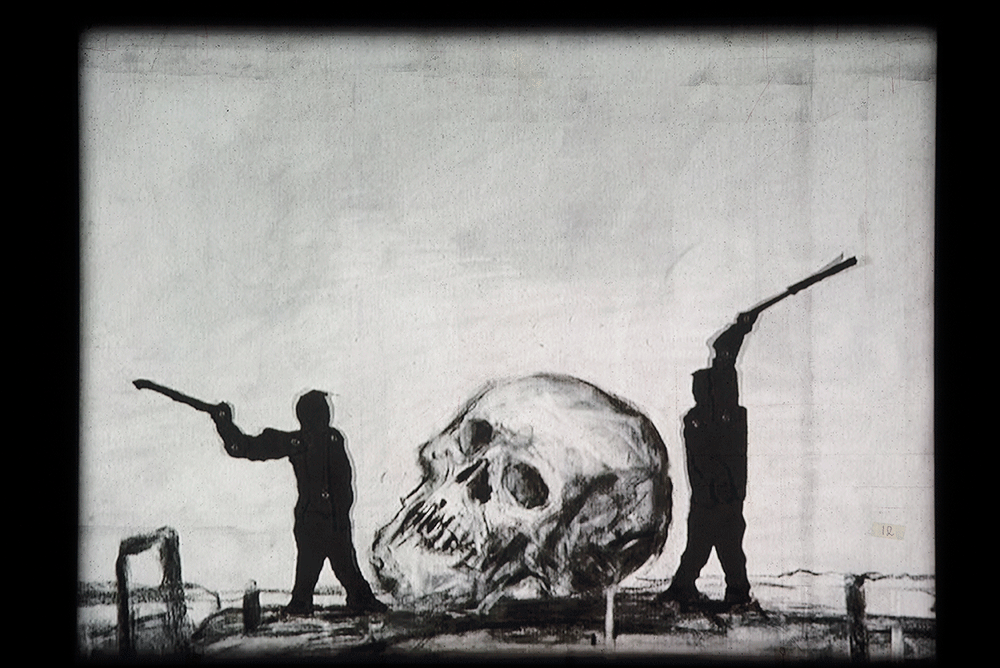


Prints
Exhibitions
More
More projects
Credits: Black Box / Chambre Noire
2005
Animated 35 mm film transferred to video, projected front and back onto model theater with drawings and mechanical puppets
Musical composition
Philip Miller
Mechanical Design
Jonas Lundquist
Singers
Alfred Makgalemele, Vevangua Muuondjo
Musical recordings in Namibia
Minette Mans, Philip Miller
Programming for mechanical objects
Ronald Halgren
Editing
Catherine Meyburgh
Lighting
Ann-Charlotte Fogelström
Black Box / Chambre Noire was co-commissioned by Deutsche Bank and Solomon R. Guggenheim Foundation for the exhibition William Kentridge: Black Box / Chambre Noire at Deutsche Guggenheim
October 29, 2005 – January 15, 2006
